Welcome to the Edge
A Guyana travelogue and vegan food
My husband and I recently (autumn 2024) spent just over three spectacular weeks in Guyana. It's a nation on the edge – of a continent, in biodiversity, of the Caribbean and Latin America, of oil exploration, and of being centre of attention after decades of indifference (unless it served US interests). And this indifference let the nation develop on its own terms. Fortunately, those terms included nature and indigenous rights. Long may it hold onto its backwater indifference of how the rest of the world does things
There's limited information available for travel to the country and I hope this travelogue will be helpful. Guyana is for you if you have a sense of adventure, are adaptable to a variety of settings beyond luxury travel, love seeing and learning about flora and fauna, and can eat aromatic foods (sometimes spicy) without complaint. The rewards are exceptional
We were inspired to visit after listening to UK rapper Loyle Carner's BBC audio documentary about his visit to Georgetown, the capital city, to explore his Guyanese roots. After that, we read the nation is over 70% forest and has one of the densest biodiversity on Earth. Heaven!
Guyana is the 58th country I visit. For more photos, see my Instagram account
Travel context
For non-residents, independent travel in Guyana is from very difficult to impossible unless you have endless time and you have your own transport complete with serious mechanical skills you'll likely need on the dusty roads crossing deep and endless jungle. Tourist infrastructure is blissfully limited with lodges having a handful of accommodation each and in some places, you'll need local leader permission to camp out or even traverse indigenous land (if you can find a road). Transport between places is either via private arrangement or a maze of local and overnight minibuses. There are flights between places on small aircrafts and they're costly
The only printed guide is published by Bradt. The latest edition was published in 2018, meaning the research is likely from 2016 or 2017. The info is very dated. I hope they publish a new edition soon
You can arrange travel directly with lodges of your choice, including ground transfers. Because this was our first visit, we chose to go through Wilderness Explorers for all our in-country travel arrangements. And they were all around excellent
Food
Thanks to sun, water and excellent soil, Guyana grows fantastic produce. And on top of that, they love rice, beans and roti. Plus, Brazil exports lots of produce to the country as well. The food culture has amalgamated a wide variety of cultures from Indigenous, Caribbean, Indian, Muslim, and Portuguese. Finding food suitable for vegans was a non-issue, especially if you stay away from "international" type food and opt for what the Guyanese would eat
We saw stark evidence of this when a group of non-vegans with whom we had been travelling for a few days, went in a different direction than us. And, instead of trying to make food the Anglos would like which had been decidedly mediocre with bland vegan options, this particular lodge made food they would eat. And we benefitted with a wide array of tasty stews, salads, beans, rice and roti
Georgetown
As a capital city, Georgetown veers between sleepy and relaxed to buzzing and congested. The discovery of oil off the coast of Guyana means there's alot more cash in the country. More cash and oil mean more cars. Which means traffic because there's insufficient infrastructure for cars and very little public transport
We spent the morning and lunch on a tour with Chef Delven Adams of Backyard Cafe. We had breakfast at Border Market and spent the rest of the morning produce shopping
There are delicious varieties of fruit, including honey fig bananas, sapodillas, paw paw, and pineapple. Superb wiri wiri hot peppers indigenous to Guyana. And lots more


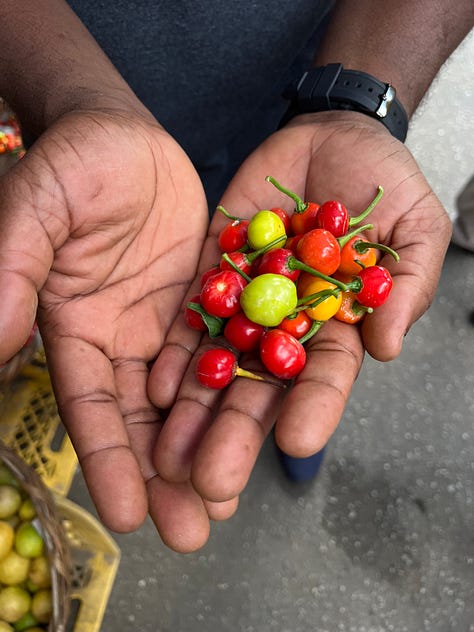
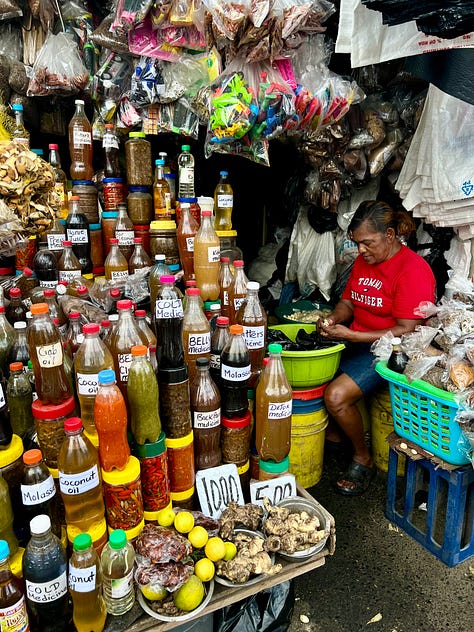
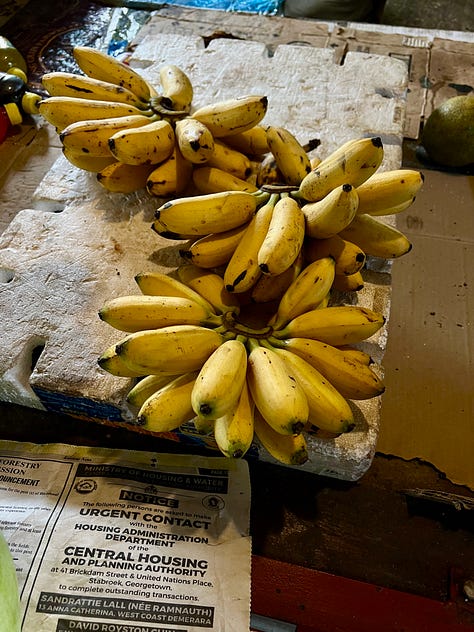
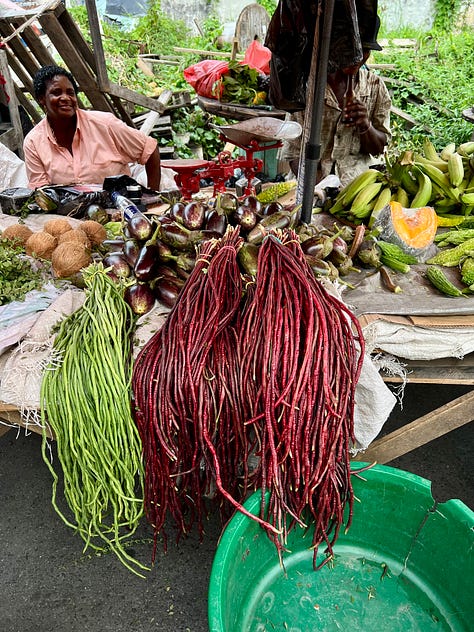
Lunch at Backyard Cafe (non-vegan place where the chef was happy to make us vegan friendly food) was outstanding!! As Chef said, Guyanan food starts out as vegan. The non-vegan items get added in later


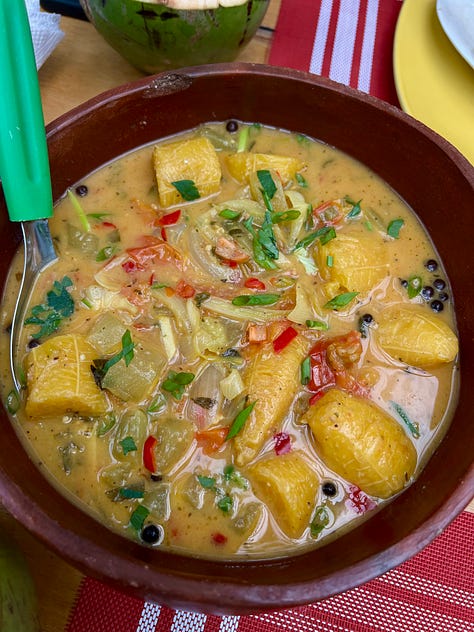
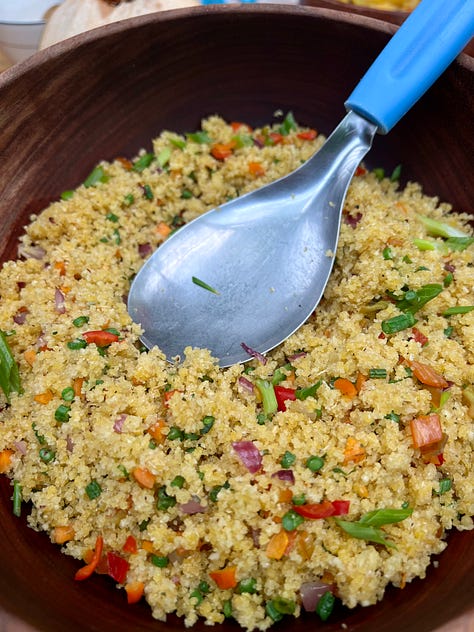
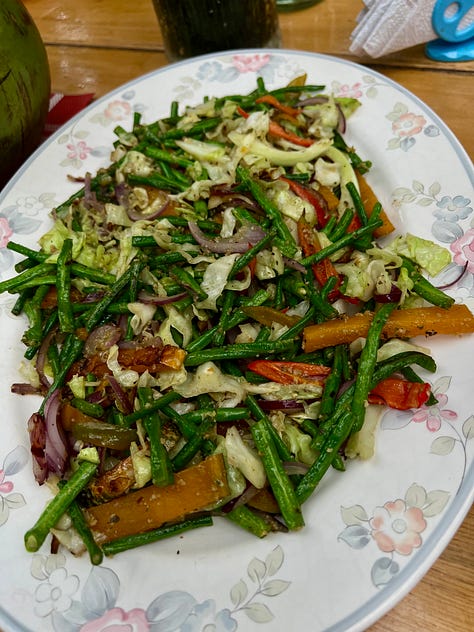
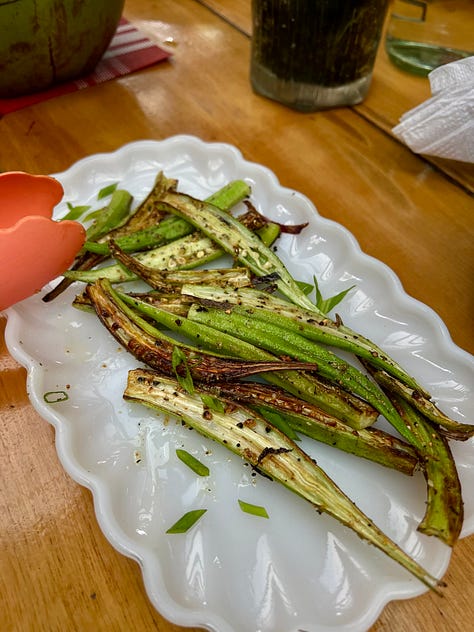
We went on to see some sights, including this monument to the enslaved people's rebellion which was brutally suppressed
There are a few remaining colonial buildings in Georgetown. They remind me of some I’ve seen in Vientiane and Phnom Penh. Also Georgetown Malaysia in 1995 and a very few in Bangkok also in 1995
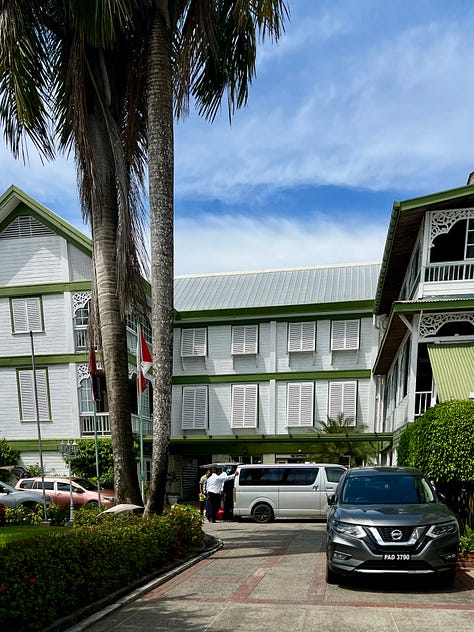
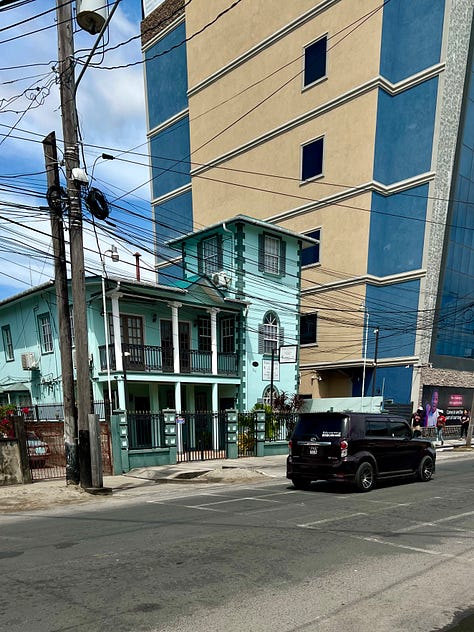
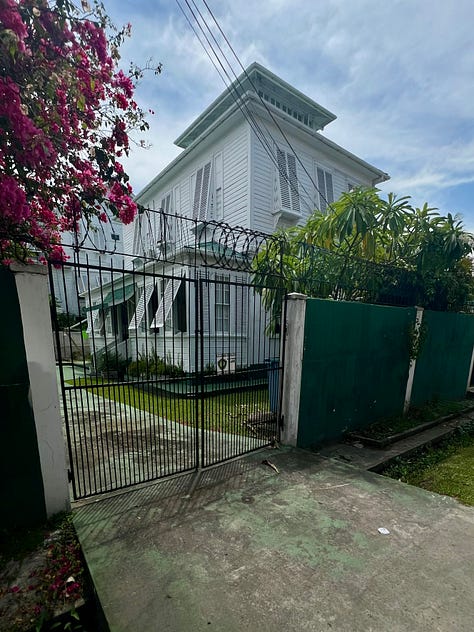
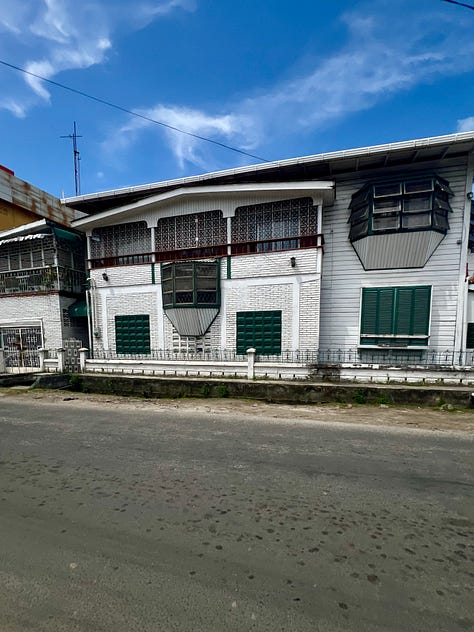
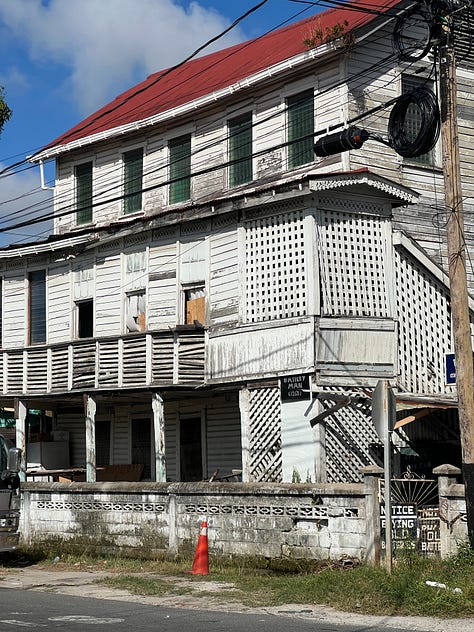

And there is a fully vegan restaurant, Celebrity Vegan, with excellent Ital food and a juice bar with tremendous sorrel, ginger and tamarind juices (some vegan options there too, but we didn't manage to eat there)

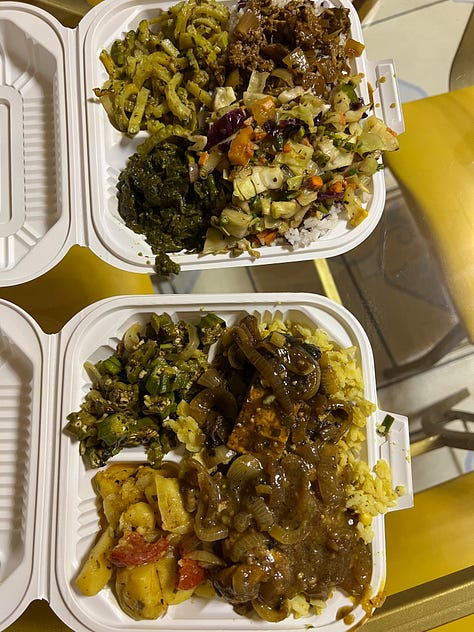
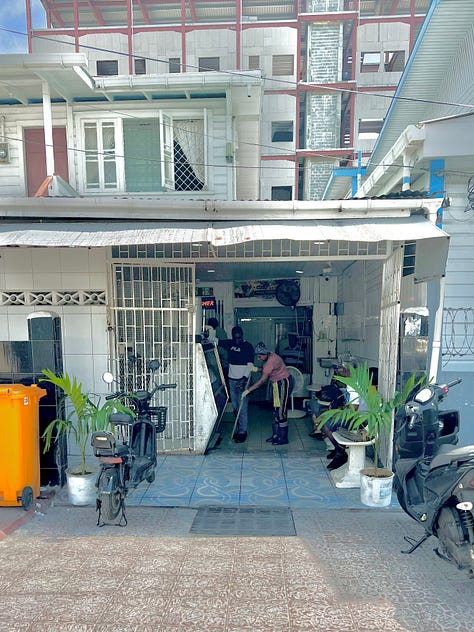
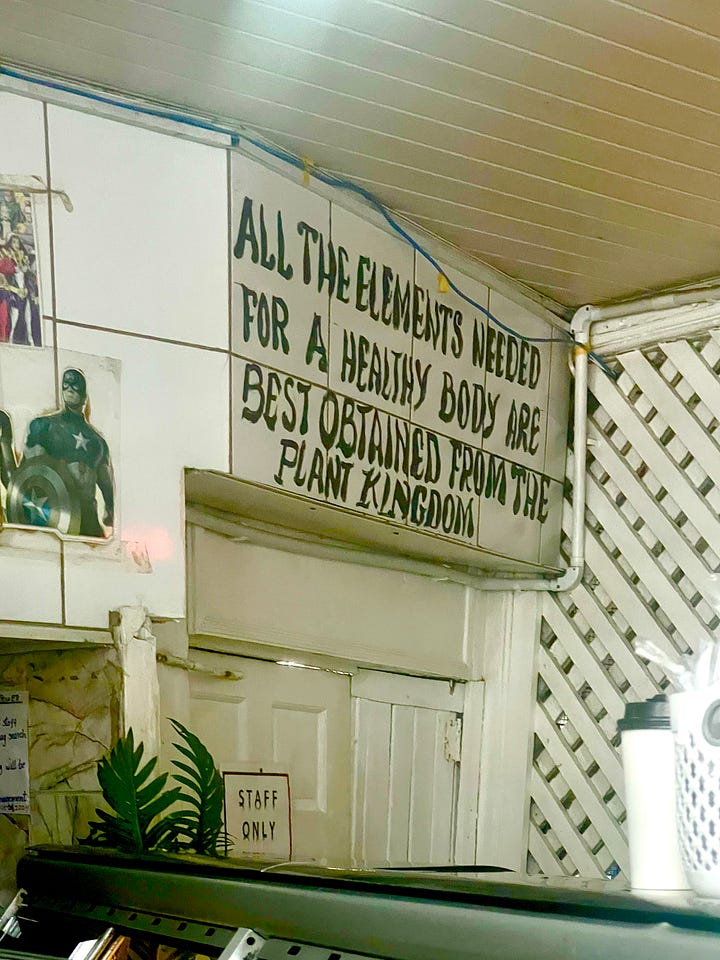
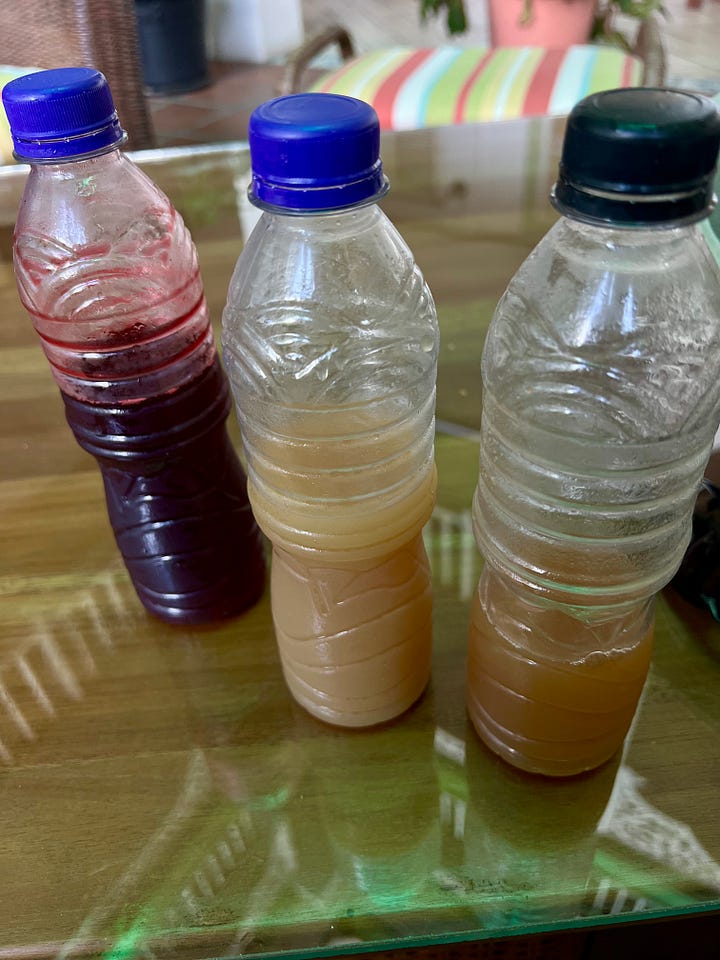
We were baked sweet potatoes when we got our hands on those delicious nectars as a result of our failed attempt to see the National Art Gallery at Castellani House (the former residence of Guyana's dictator) - closed between Noon and 14:00 but no one told us. Don't do anything between Noon and 16.00 by the way. It's entirely too hot.
In any event, we visited Castellani House much later in the trip and it's worthwhile. They host a variety of rotating exhibitions. We'd have loved to have seen even more art. There are no other galleries in Georgetown and none we saw elsewhere either
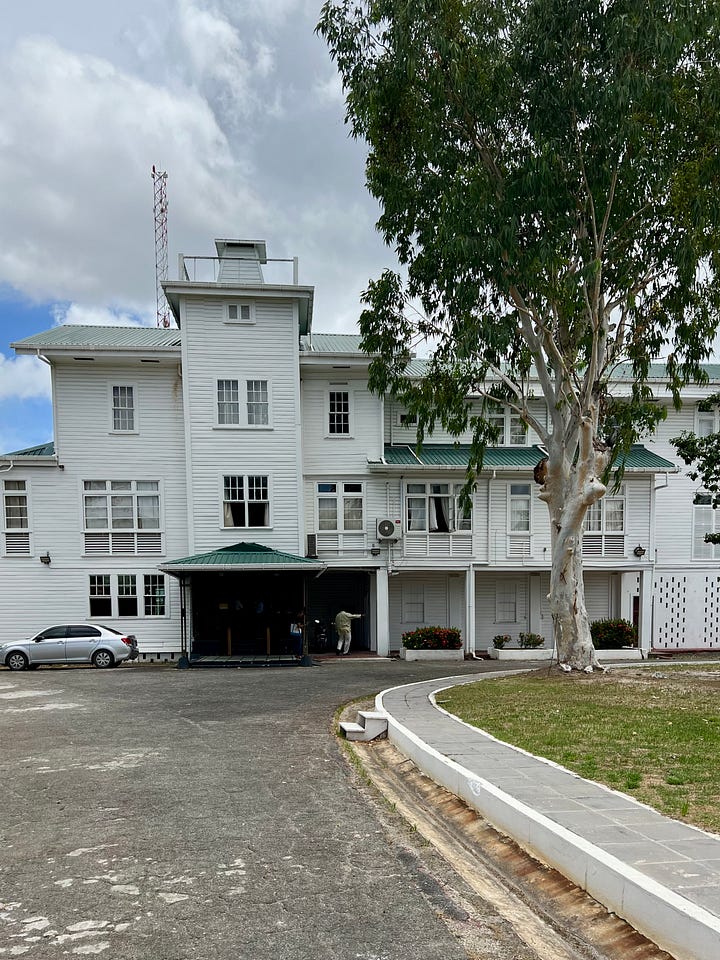

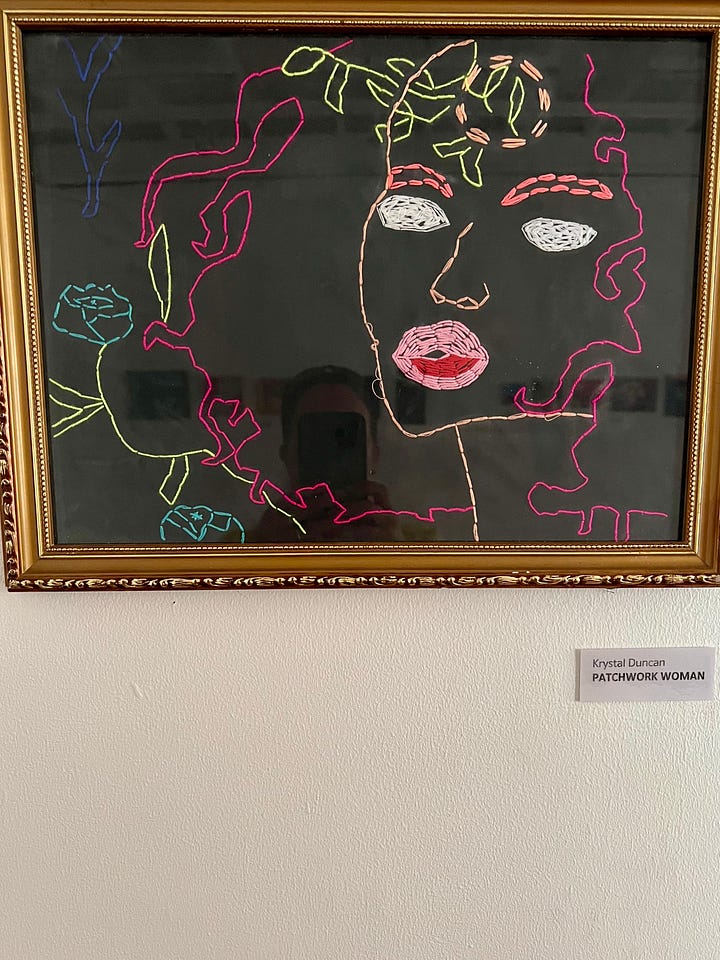
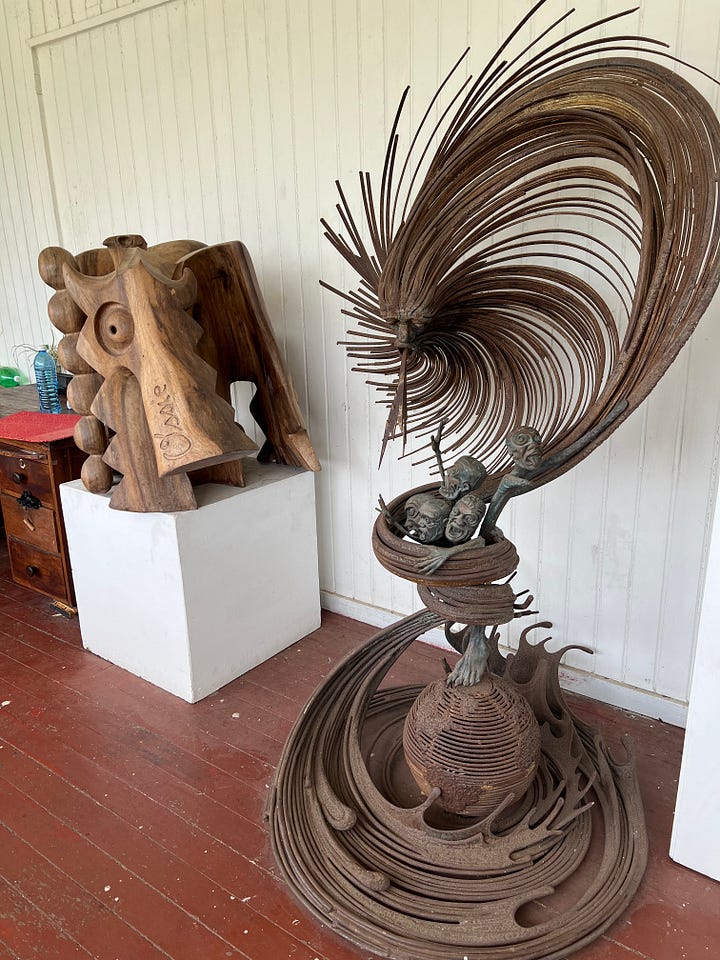
During our last day, we work a little and visit Guyana's Attorney General. We have a convivial chat. We also have lunch at a local spot called Fresh. They have lots of vegan options and make everything fresh on the spot
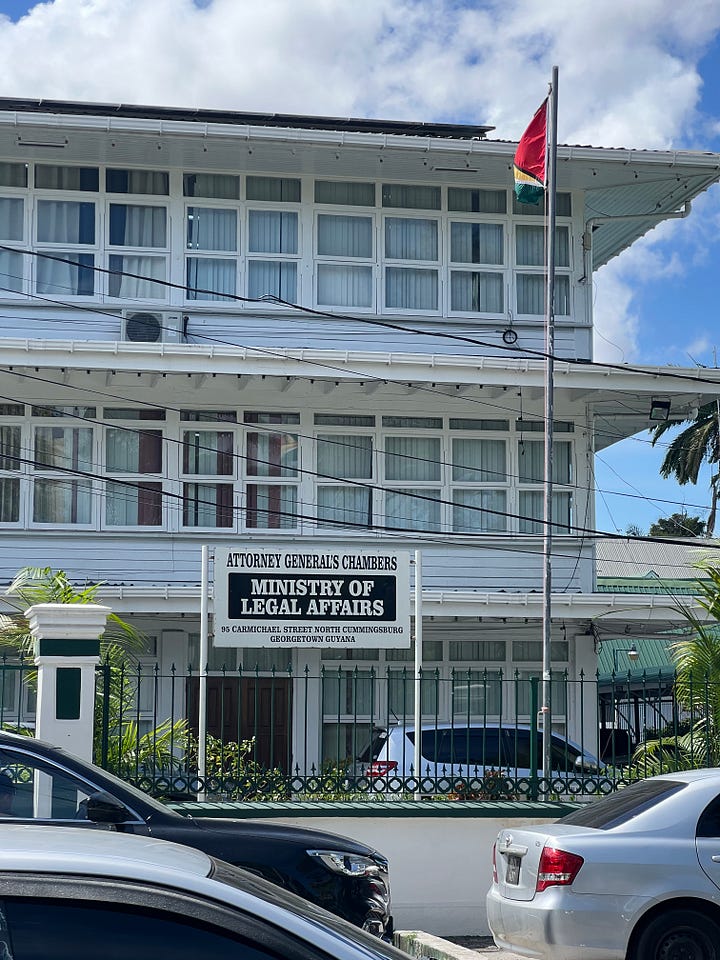
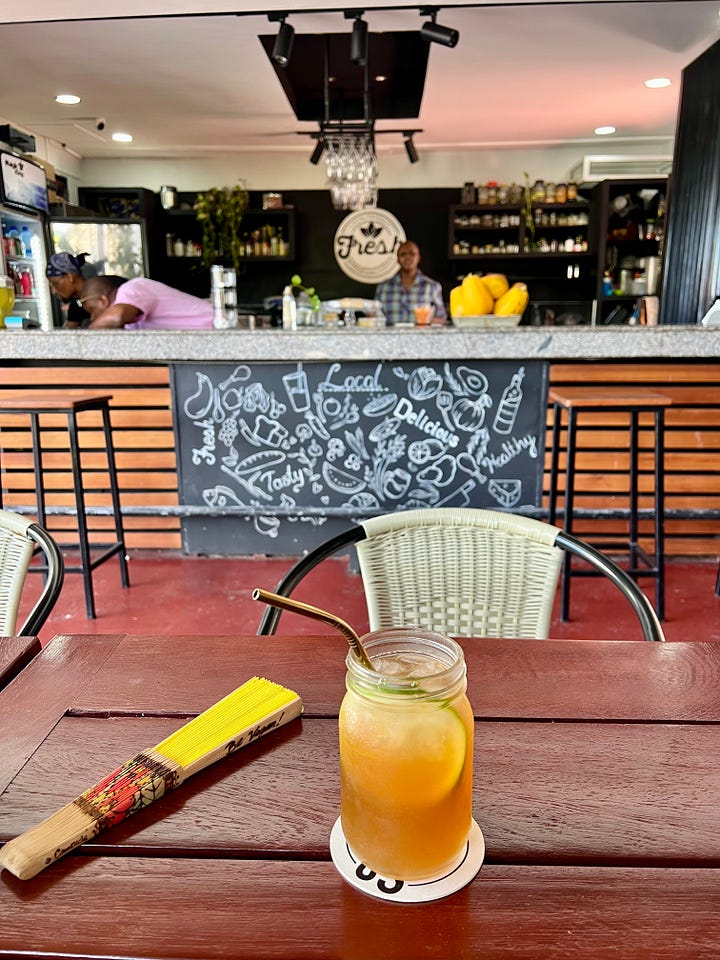
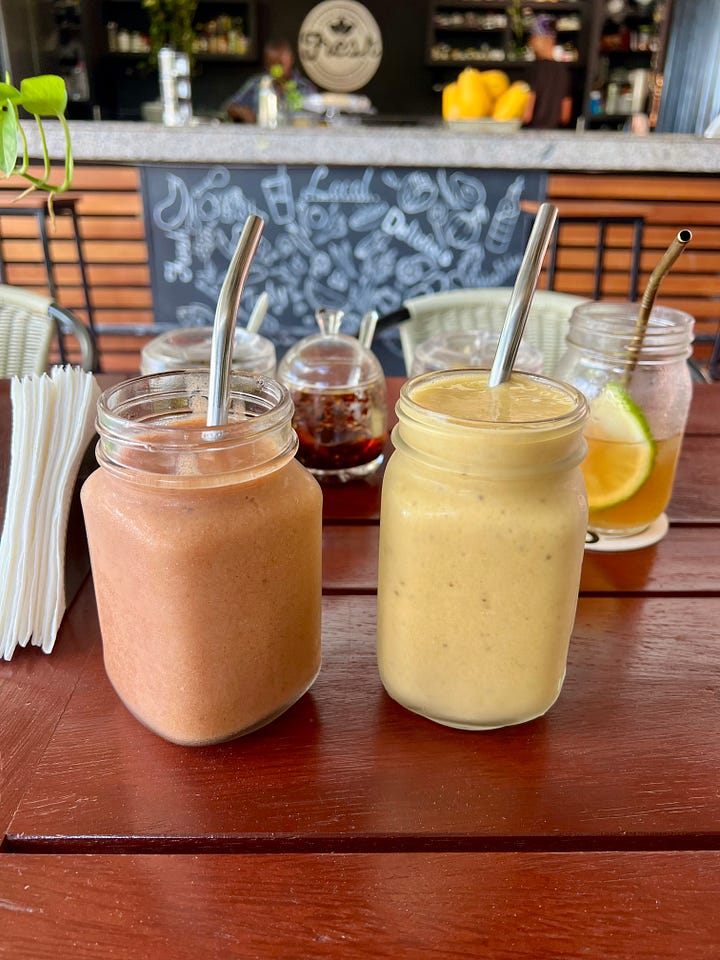
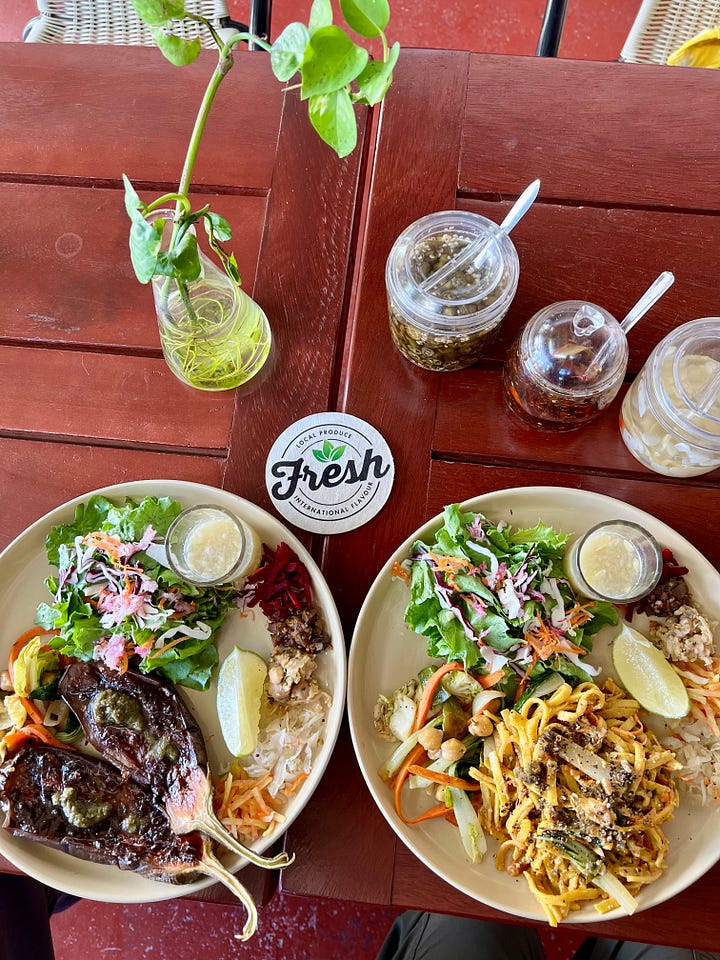
Georgetown is a backwater. There’s no doubt. Probably the number one I’ve ever been to in terms of a capital city. It’s no bad thing really. It’s fine by me and long may it continue to be so ... especially, and in spite of, the current oil rush
Mahaica and Demerara rivers
The Mahica is probably the most unspoilt place I’ve ever had the privilege of experiencing (and we'd experience many more in the next three weeks). A 0445 start for a drive in torrential rain to a place I’d happily spend a few weeks paddling. Many birds and some howler monkeys

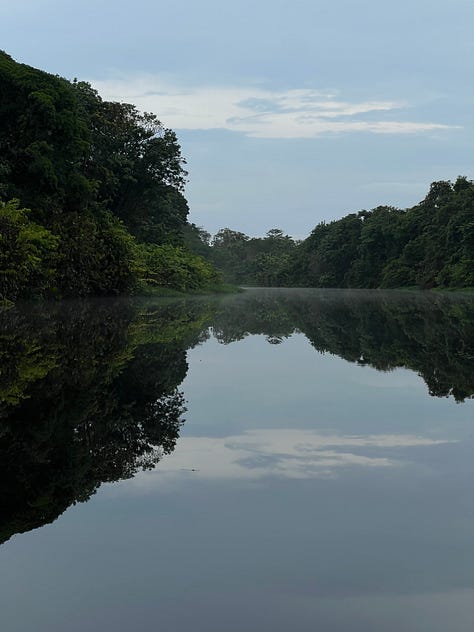
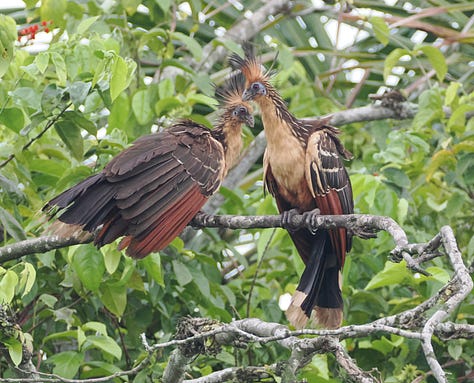
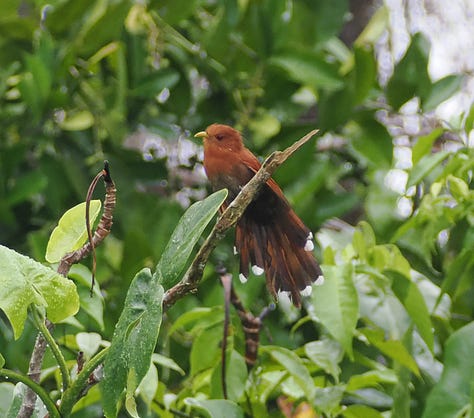
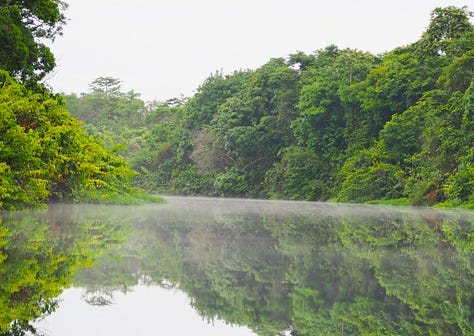
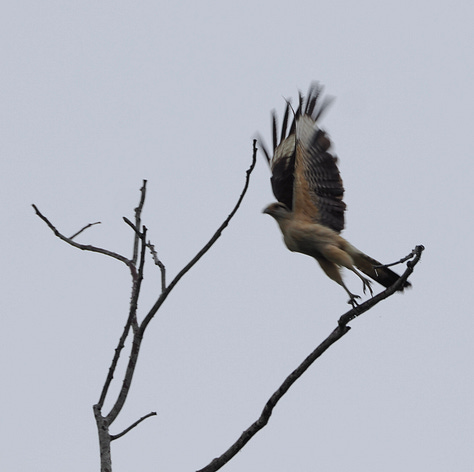
A little before sunset, we boarded a commuter taxi boat from the old ferry port. It’s a super buzzy place, particularly on a Saturday night with sound systems playing soca at levels which would make Notting Hill festival seem quiet

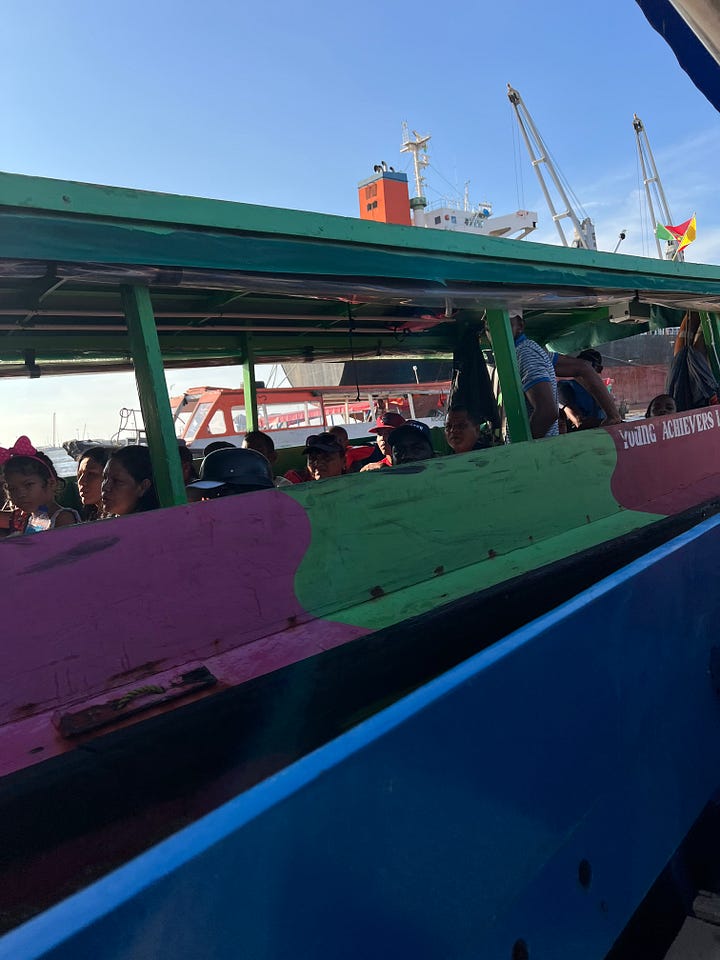
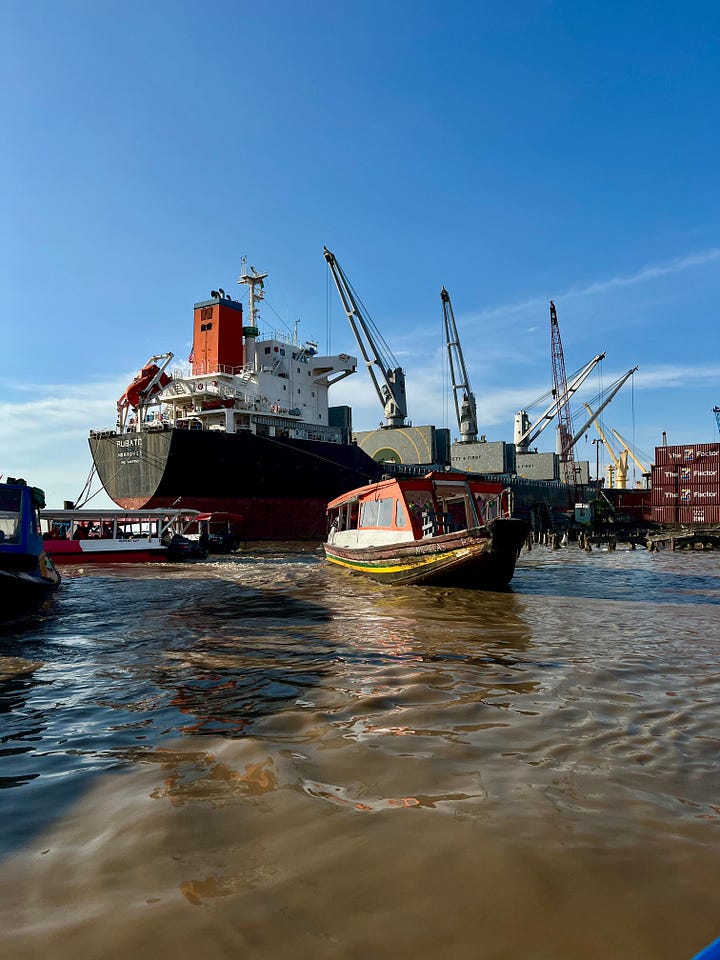
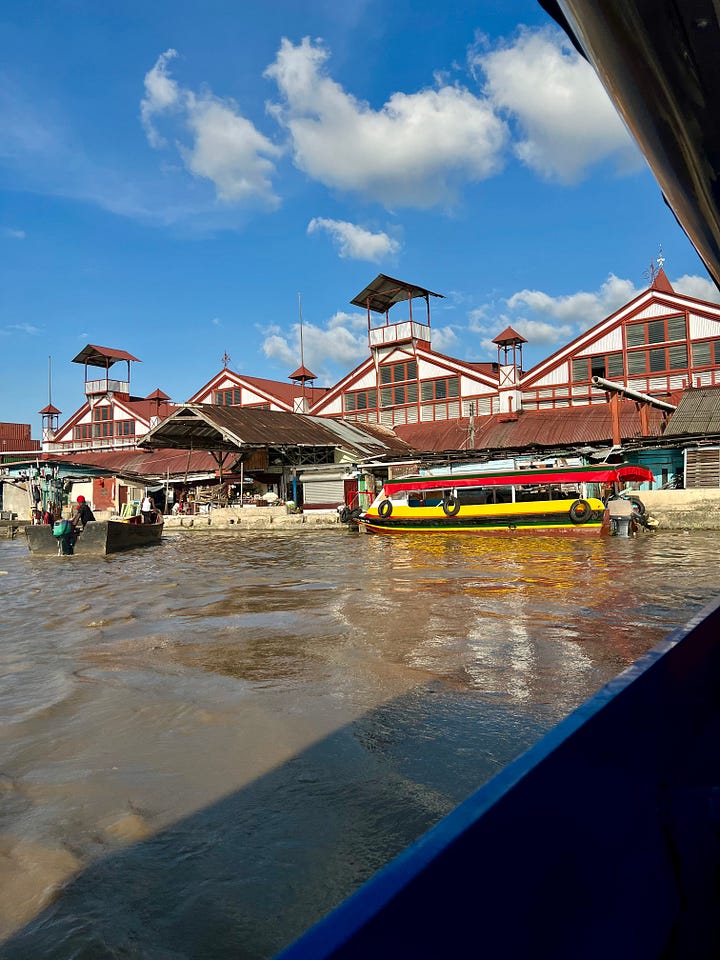
This is the river Demerara, which splits the city sort of. One side is where most of the city is and the other is where plantations were. Lots of people live there too
The river has both an industrial shipping port and a birdlife haven in the mangroves. There’s a pontoon bridge for cars which will remain in place until the massive new bridge is completed


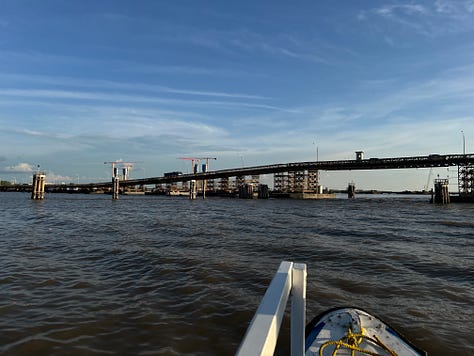
In terms of birds, we’ve already seen more Osprey during our time in Georgetown than our entire 14 years in the Highlands. And I had a black swan event except mine is a scarlet ibis. I had no idea they existed. Look, I’ll read and research a lot but I like to be surprised too. And my god are they beautiful. I’ll tolerate no smack talk about ibises, like bin birds etc. They’re so great
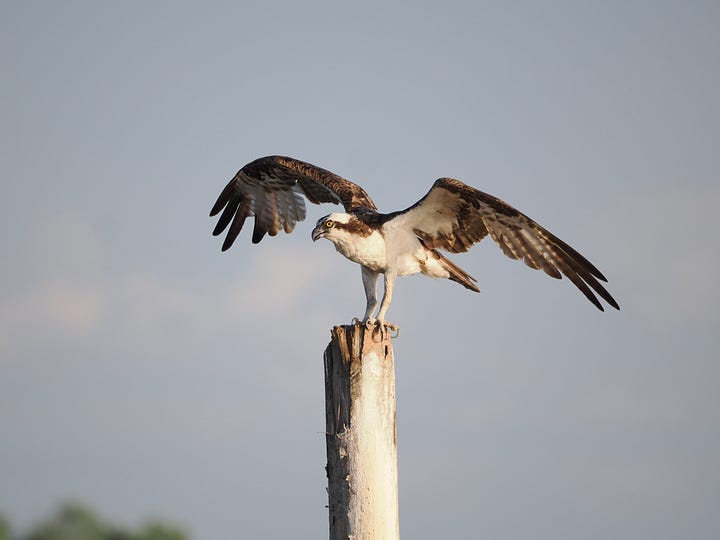
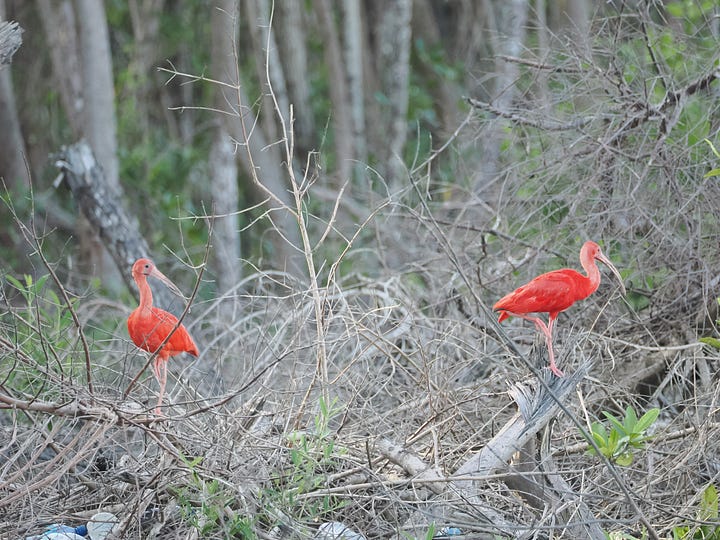
They roost with cattle and great egrets
There’s also a line of brown breasted Martin roosting on bridge/gangway
The juxtaposition of free living non-humans animals and human animals (are we free living btw?) is always something I look for. They adapt to us. Do we reciprocate?
Georgetown Botanical Gardens
Another early start for 6am at the Georgetown Botanical Gardens. They're a green oasis in the city and home to over 100 species of birds and another 80 migratory and occasional. The site isn't huge - maybe 50 acres, probably less. The concentration of rare bird species in this urban park is off the charts. We saw so many birds, including toucans, great horned owl, white bellied piculet (the smallest woodpecker, which I spotted and described as fuzzy white belly with stripy top), parrots galore, a fleet of blue macaws, and so many more
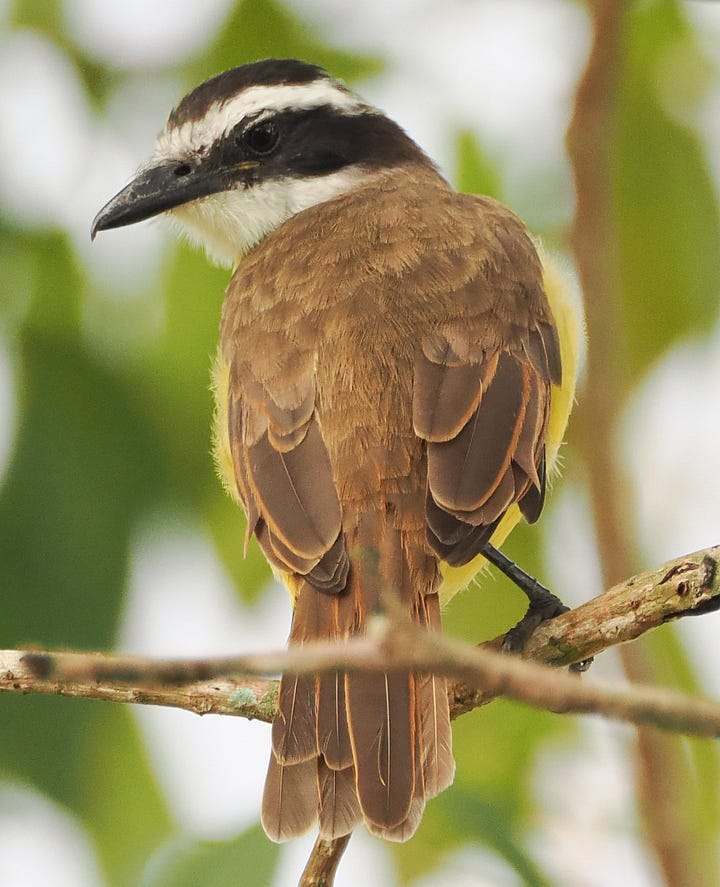

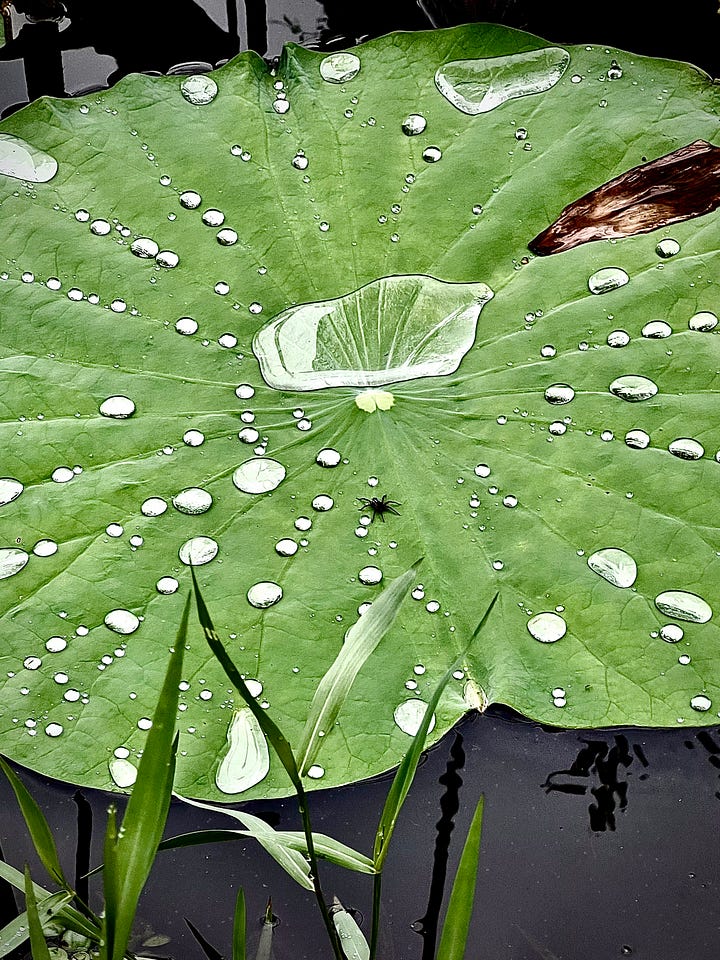
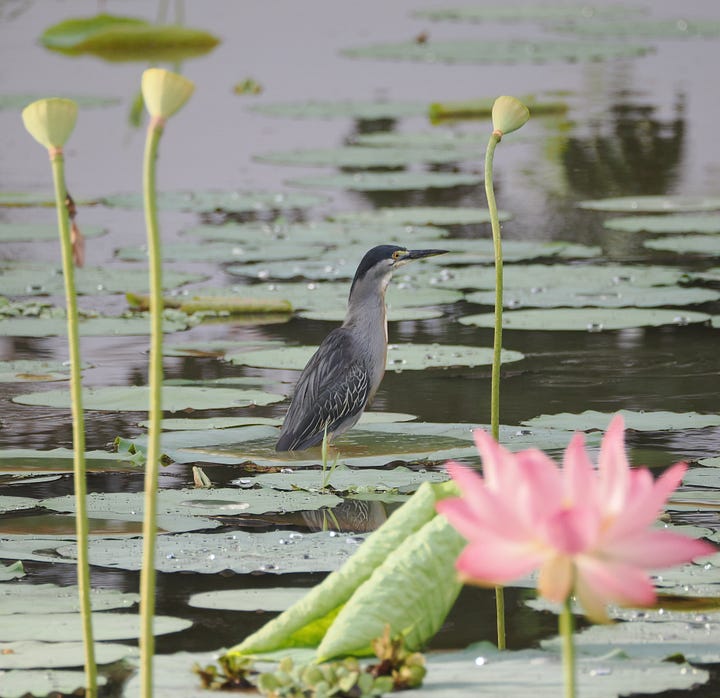
Then we took a flight to Kaieteur National Park. I’ve included a less than 3 minute video of the flight and you can really see how Georgetown is below sea level and flanked by water and mangroves
Flying over an enormous area which hasn’t been logged (Guyana never got into logging) or cleared for cattle grazing/animal feed growing. Seeing what an unspoilt forest looks like was thrilling and moving. This is what our world could look like without destroying forests for animal farming - the number one cause of deforestation globally
Kaieteur Falls is marvellous and now third in most impressive falls. We also got to see the tiny - thumbnail sized - golden rocket frog. They’re endemic to Guyana, specifically the falls and they only live in the giant bromeliad plants which collect hundreds of litres of water a day in between their leaves. It’s the females who are gold
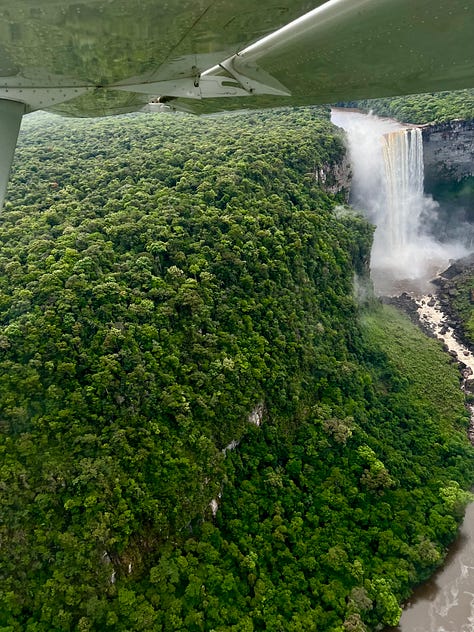
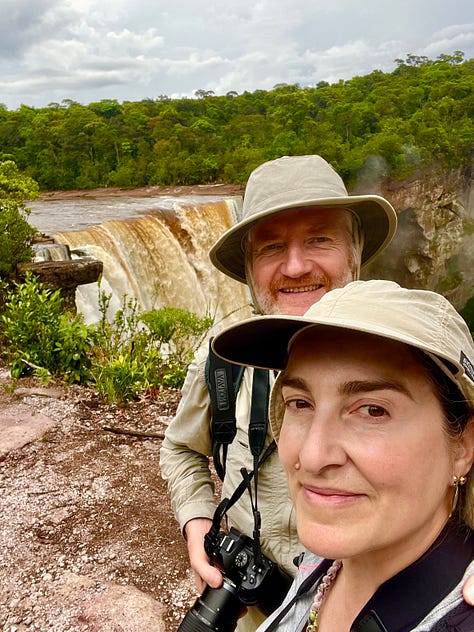
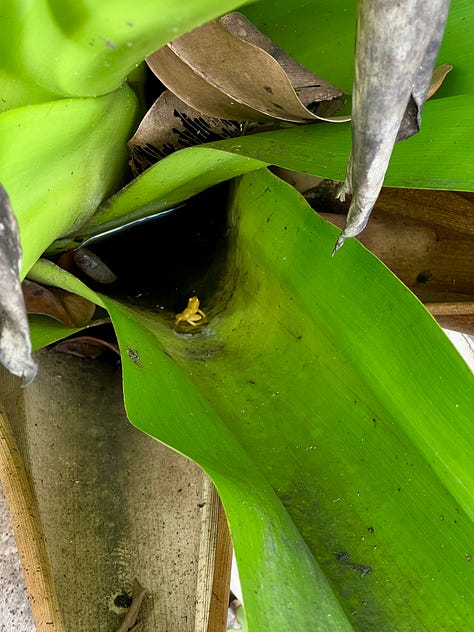
The real travel begins: to Iwokrama
We left Georgetown on a courier flight. It’s like a bus, but for far flung areas in a country with a limited number of roads, no other transport and beaten earth landing strips. Smaller and bare minimum equipment. I tied my seatbelt - no click - tied one piece of fabric to the other. And you can see our stuff in the back - the red rucksack and yellow duffel
The village we landed in is Fairview in Iwokrama, on the banks of the Essequibo river. It’s inhabited primarily by indigenous Amerindians. This is the green heart of Guyana and we’re in an area designated for sustainable use. The rest of the area is protected, which means it’s entirely off limits to human use. I have a lot of questions about this and have yet to fully investigate

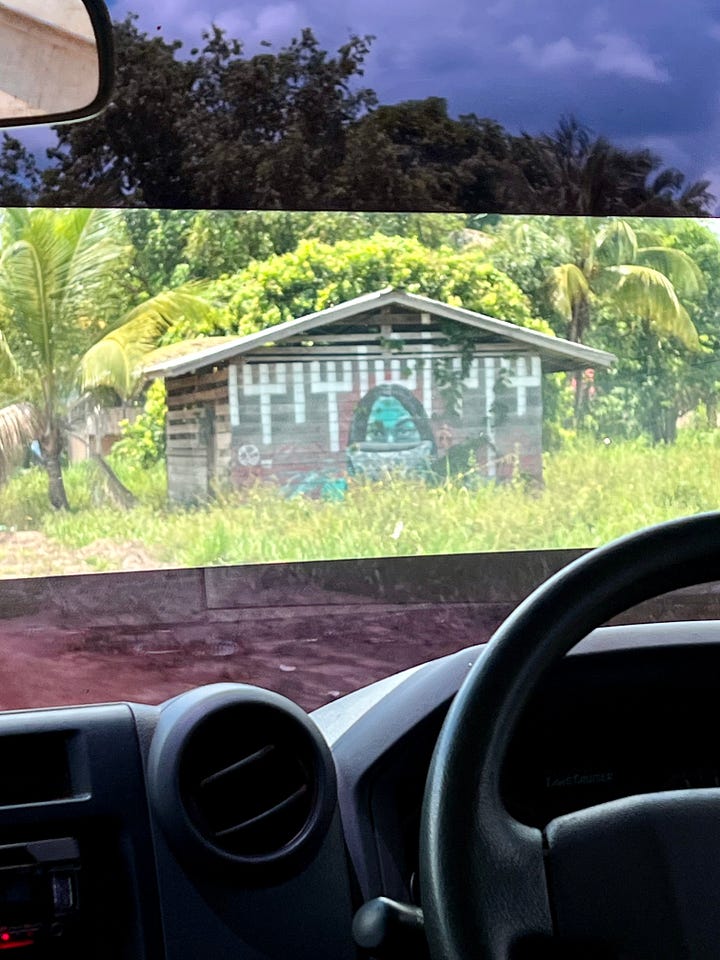
We’re in the rain forest so sightings are different and more complicated. The jungle is seriously thick. But we get out on the boat, go walking in the forest and up Turtle Mountain (approx 300 of the sweatiest metres ever)
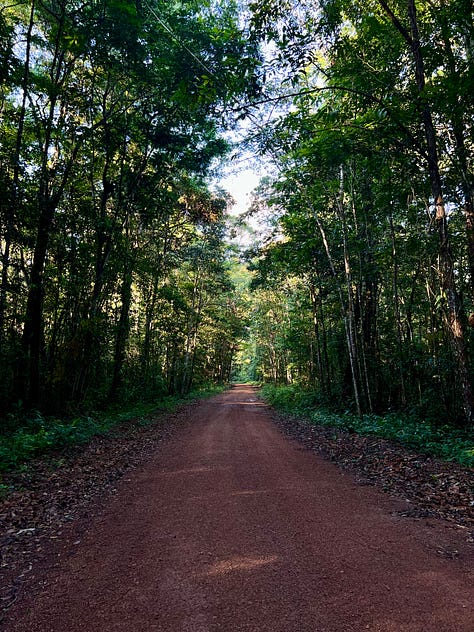
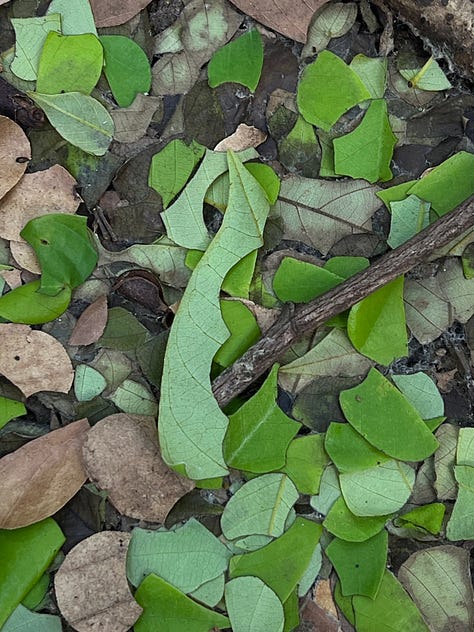
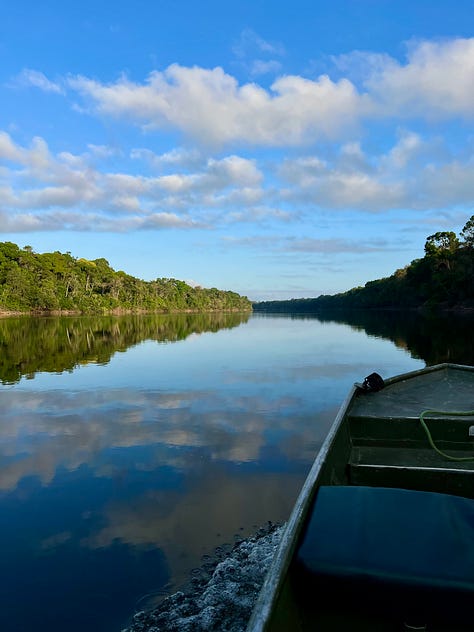
Our wake up call is howlers. And after lunch until 4pm, there’s absolutely no activity other than napping
I’ve forgotten what a meadow with butterflies looks like. Here, there are still thousands. Even saw red ones and the big blue ones. No photos. Same for the vast number of hummingbirds - no photos
We saw petroglyphs in the local swimming spot and my favourite sandals died there. I’ve had them for about a decade and they’ve walked in so many places
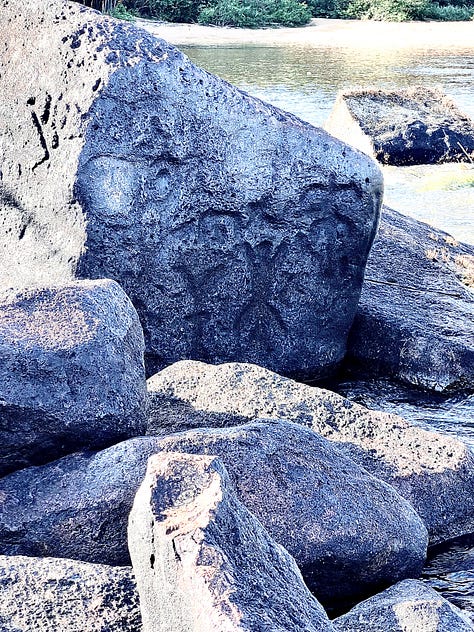
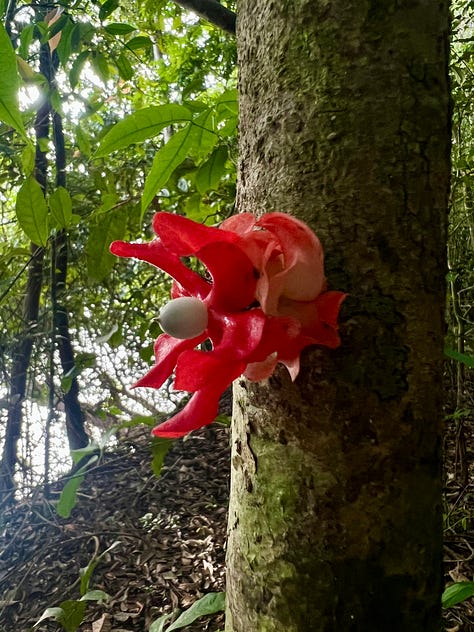
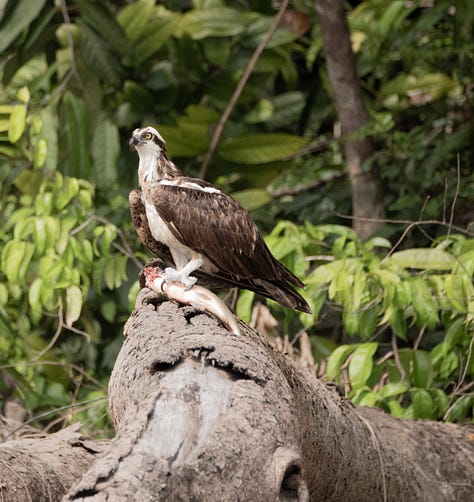
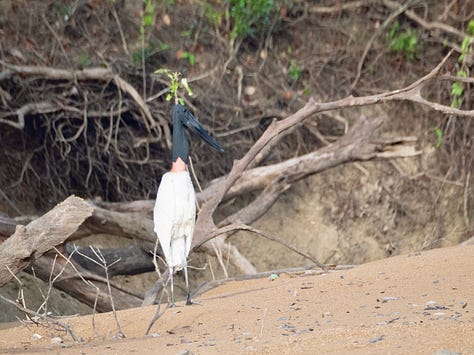
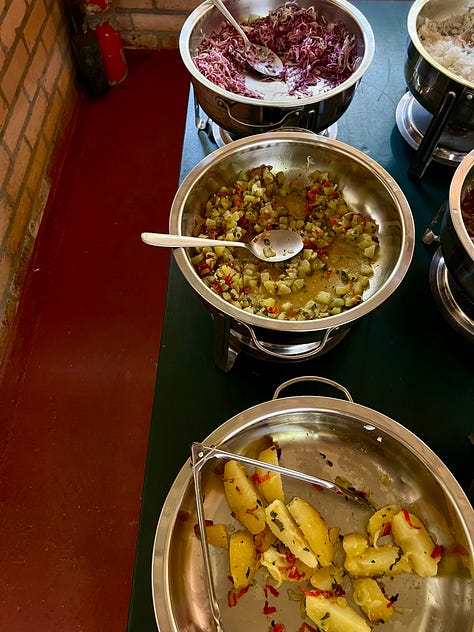
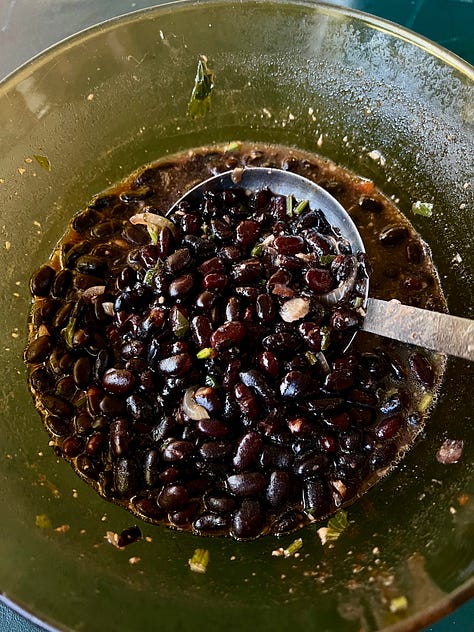
During a walk on a jungle path in Iwokrama, we encounter a fer de lance as we were walking. The guide jumped back. Roger was walking beside her. I was behind them. It took me a while to spot them. See if you can. Fer de lance are a viper and one that’s very venomous
Iwokrama to Atta
From Iwokrama we move 25 miles or so south-east inland to Atta Lodge. It’s also located in the million square mile protected zone of Iwokrama
There is a beautiful canopy walk at Atta from where one can begin to comprehend the scale of the trees, watch macaws fly over and hope to see the zillion other birds and animals all around
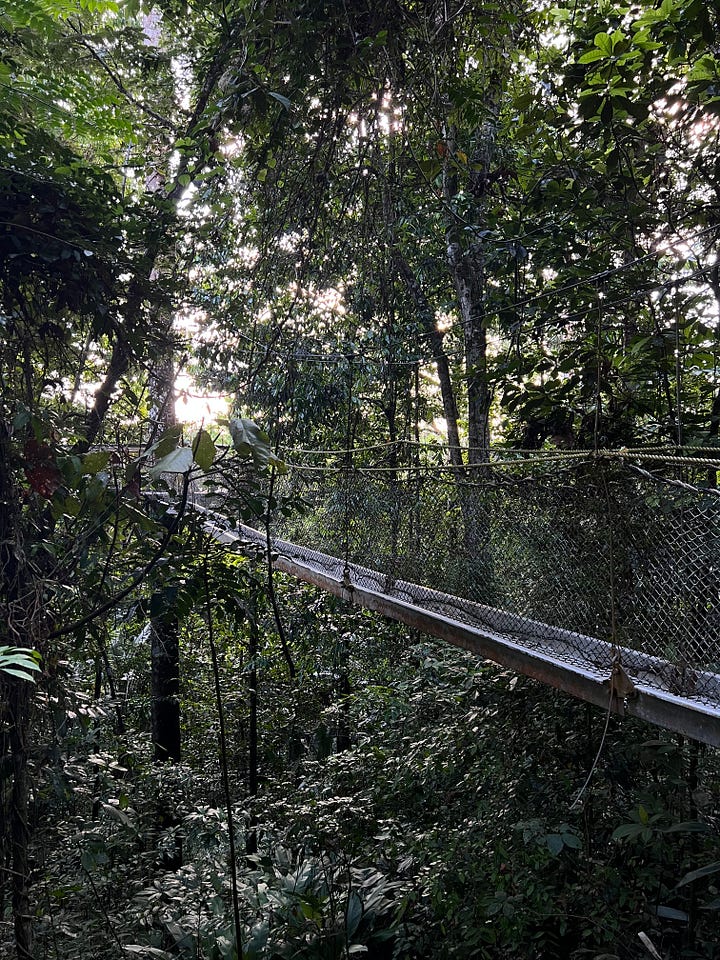

As usual, we’ve seen so many birds, including a potoo, a night bird with an incredibly plaintive call and the currasow, a pair of which were regular visitors at Atta who also make the softest sweetest sounds for turkey sized birds with pompadours. And see video of a lovely channel billed toucan who visited just above my hammock during the heat-enforced siesta. The Death Star and humidity are no joke
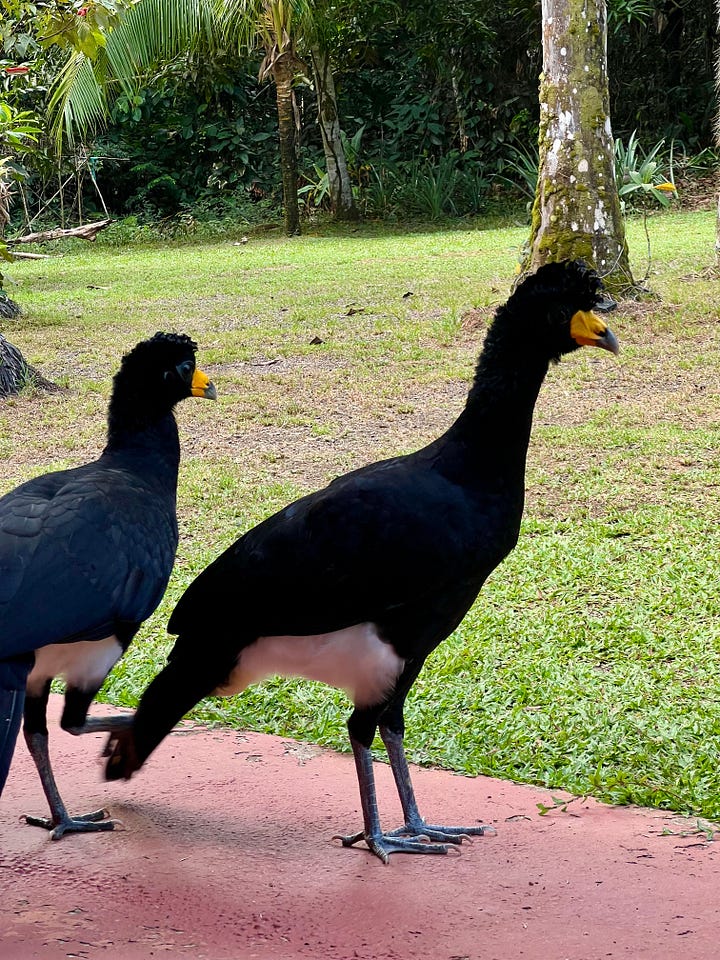
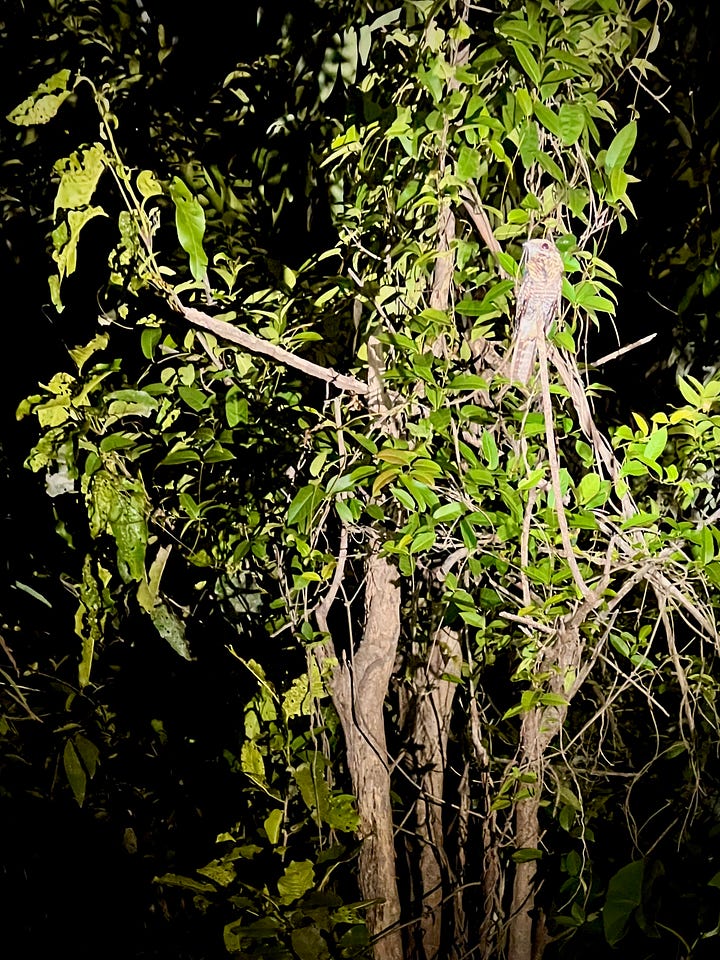
There’s also a photo of moth remains with a peculiar vertical stick pointing upwards. That was the fungus which colonised the moth, made it into a zombie climbing up a high tree to then die and disperse the spores for more zombies
The photos below of a toad (maybe frog) on our door and the indoor/outdoor loo. The morning of our first day at Atta, we woke early to go walking on the canopy walk bridges. At 5am it’s dark and the electrics are off. As I’m sitting there, I feel a soft thud on my head. I’m completely unperturbed because I’m certain it’s a little frog using my head as a springboard for their next stop into the potted plant in the bathroom
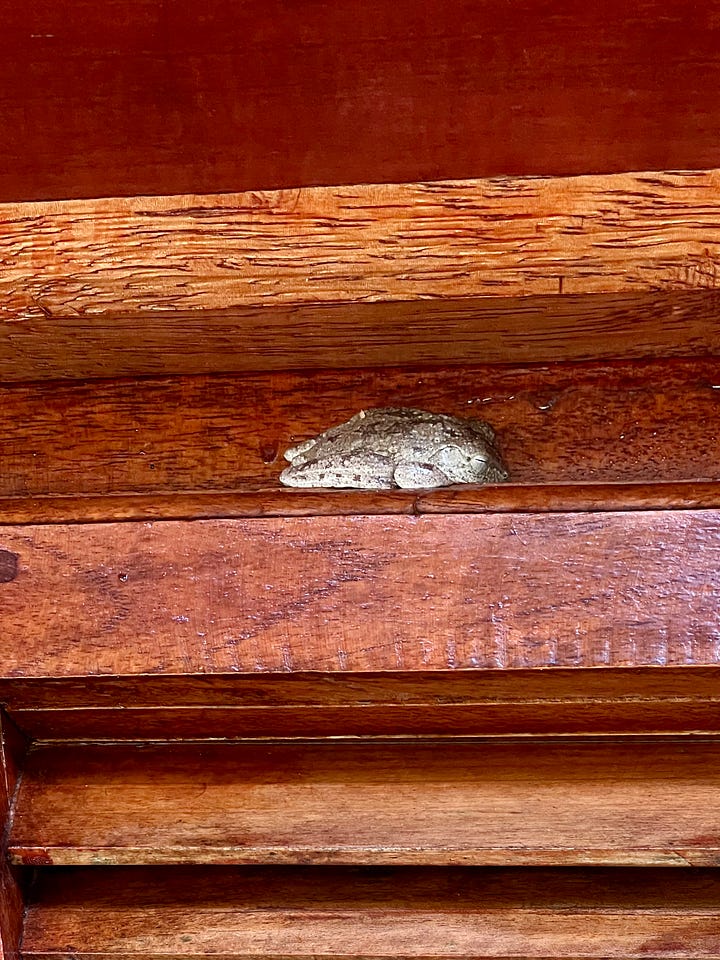
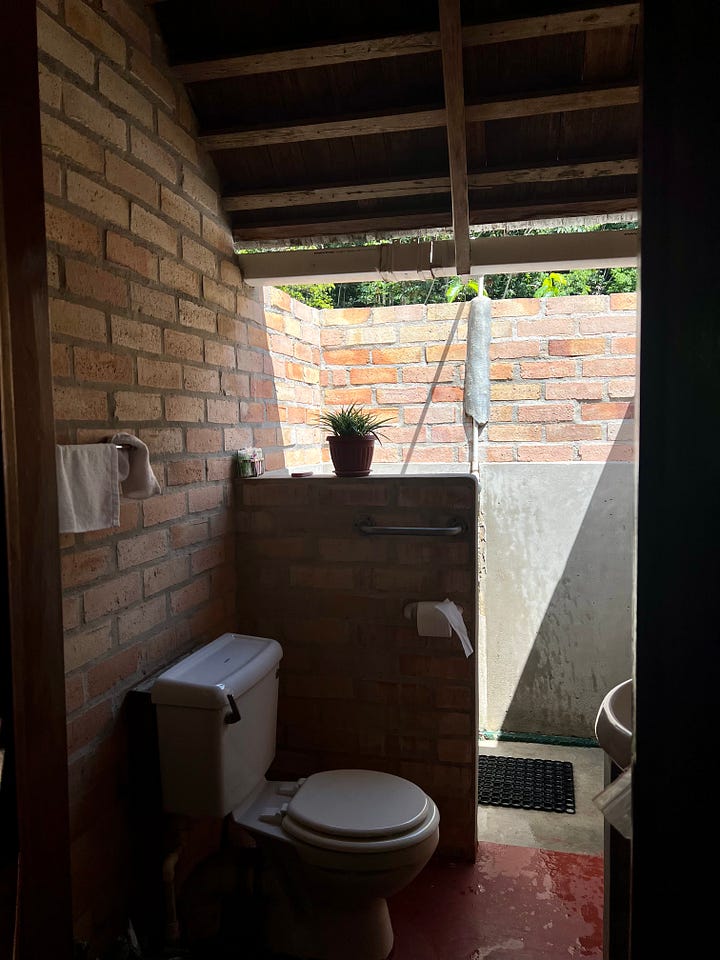
That’s a puma track but no pumas yet
The howlers were extremely loud and close one day. Like an advancing army which just vanishes
Orchids colonise trees
Anatto in the wild is more beautiful than I expected
Pygmy gecko, a caterpillar still in their cocoon and moving around when disturbed, small and super cute praying mantis all in jungle canopy with trees so tall and wonderful
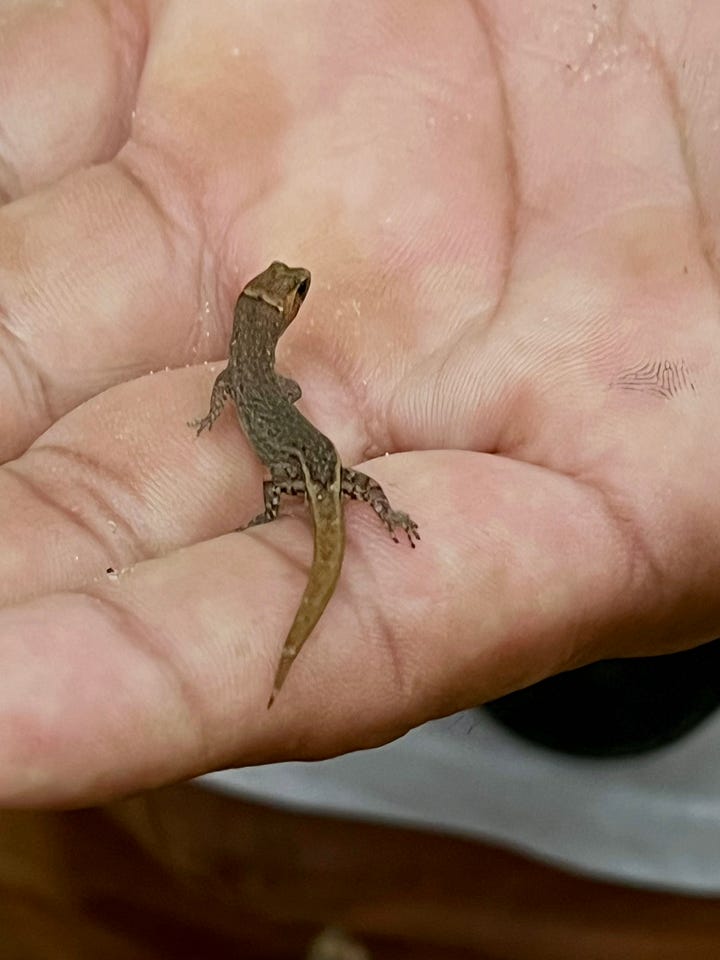
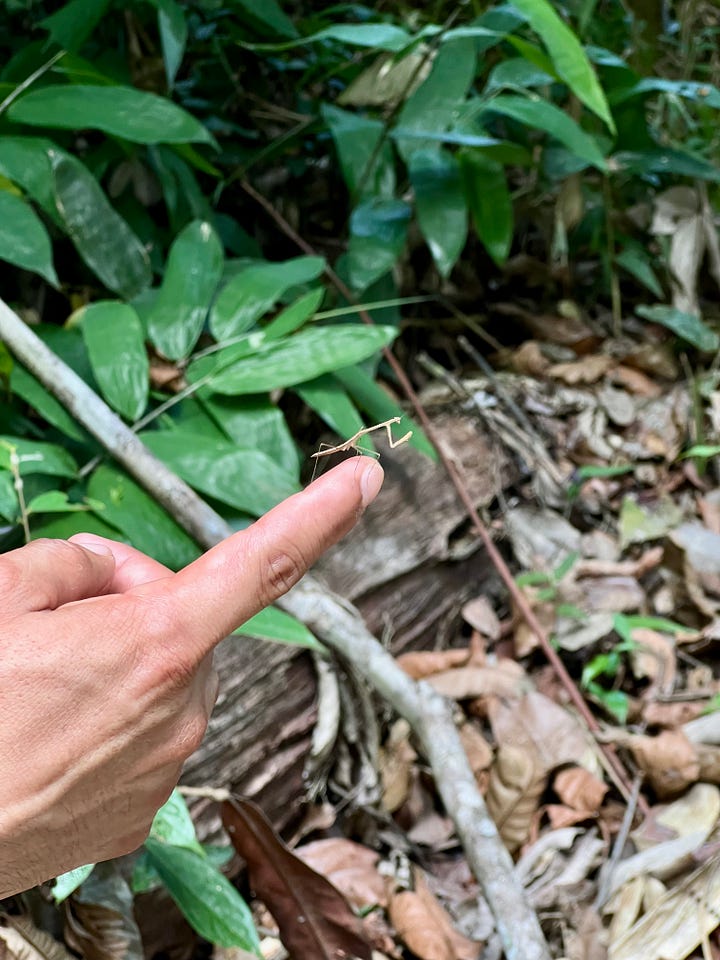
Iwokrama to Rupununi and Surama
There are medium sized lizards everywhere in Iwokrama. I had no idea where they all lived and assumed they didn’t have a fixed abode. But they do. They dig little holes and generally run around digging and scurrying. I was able to watch one from the comfort of my hammock during the after lunch pause until 4. The Death Star in the sky is way too much for anyone
Red, dusty roads. That’s one of the main highways in the heart of Guyana. Most roads outside Georgetown have been like this
In Iwokrama, the road closes overnight to external travellers. Remember, it’s a protected area. The Atta Lodge, Iwokrama Forest Guyana is a cooperative owned and run by local, indigenous people. For our last evening, we ate by candlelight and torches. It was lovely

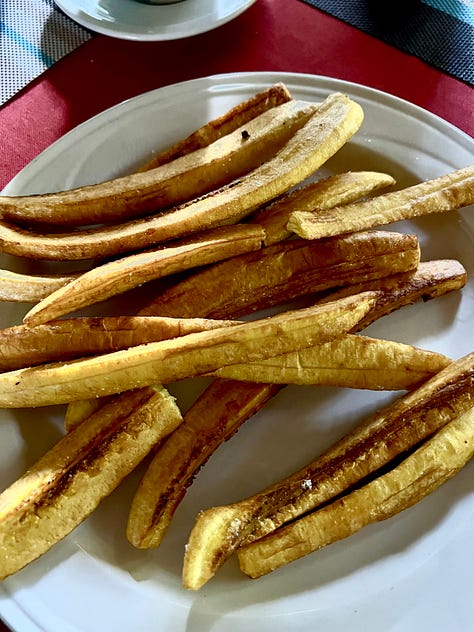
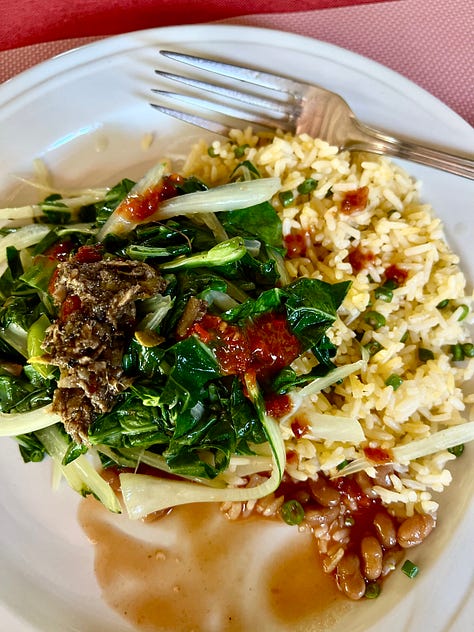
Seeing scarlet macaws is incredible. They and parrots of all sizes are always in pairs or more. They’re extremely social, vocal and have enormous flying ranges. In particular, scarlet macaws have been wiped out by the “pet” trade - legal and illegal (there’s no difference in my view. It’s all horrific) - and habitat loss. These birds - like us and all other animals - do not ever belong in cages. Ever. No one deserves such a wilfully diminished life
From Iwokrama, we go south to the Rupununi
This is also primarily an indigenous area. Most indigenous people fled the plantations back to their homes as soon as enslavement of people was abolished
The Rupununi is remote. Surama Lodge is also owned and operated by local, indigenous people. The village of Surama has a nursery and primary school, a health office, a pretty big landing strip, a football field (they prefer football to cricket here, unlike on the coast). There are just under 400 inhabitants from 68 families
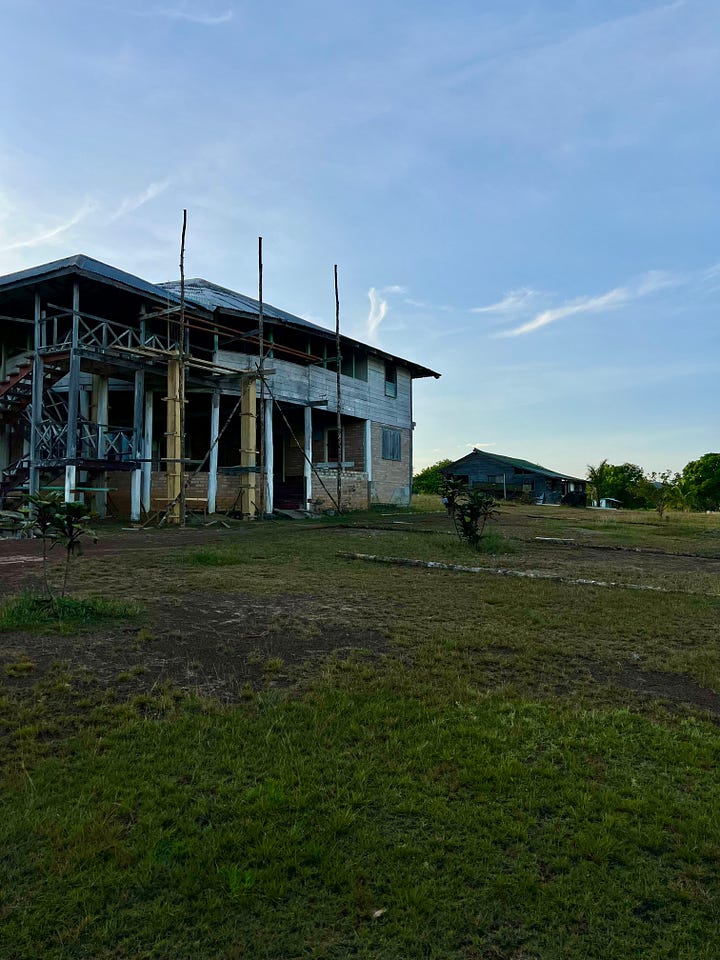
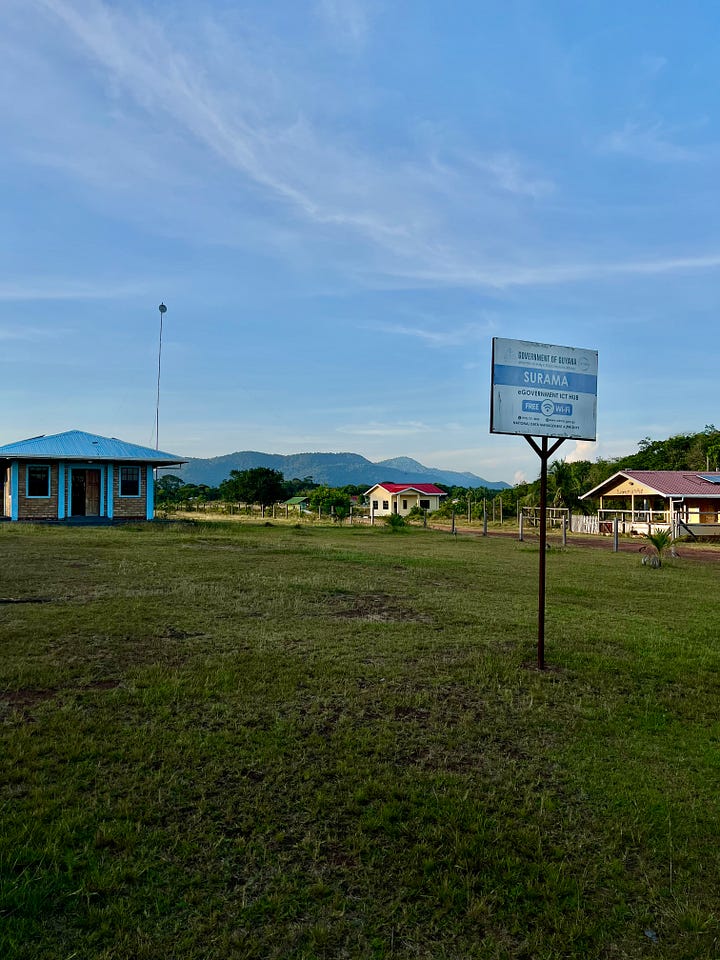
Surama borders the state owned lands (which border Venezuela and Brazil - with Venezuela making noise they want to invade to take the Essequibo area) where no person can go. We’re told the jaguars there have never seen people and they’re huge. As our guide says, if you go, you’ll never return. He also told us a story about guiding for a group of researchers who did go in the area. One of them was followed by a jaguar and he didn’t realise until he got back to camp. Our guide was sure the researcher would be eaten. My sense is the jaguar was curious. And yes, probably also assessing what type of meal this new creature might make. But if the jaguar wanted to despatch of the researcher, they’d have done so instead of following for some time
We take a short boat ride along this border and see a capuchin monkey. During the rainy season, this river becomes so massive and the area around it floods. See those banks, they’re about 20-30 metres high and they disappear underwater

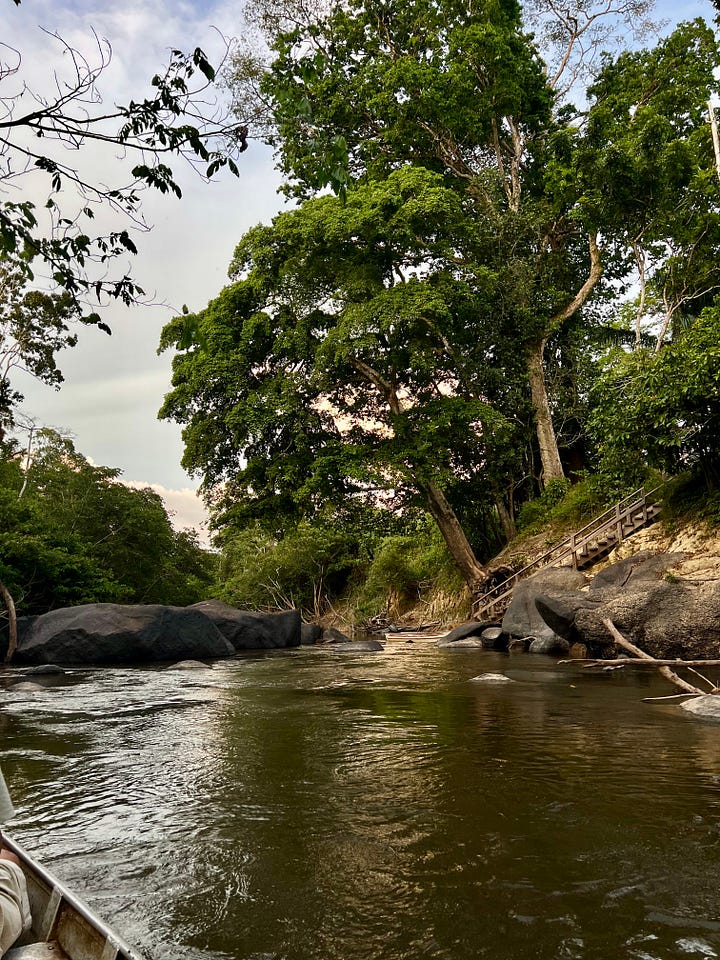
We also walk up a local mountain, meet a forest crab who isn’t happy with us passing through. And see two spider monkeys. It’s a 9km walk round trip, with an elevation of maybe 150 meters to the summit. Despite starting at 5am, we are absolutely soaked by the time we reach the summit. The heat and humidity here are no joke at all
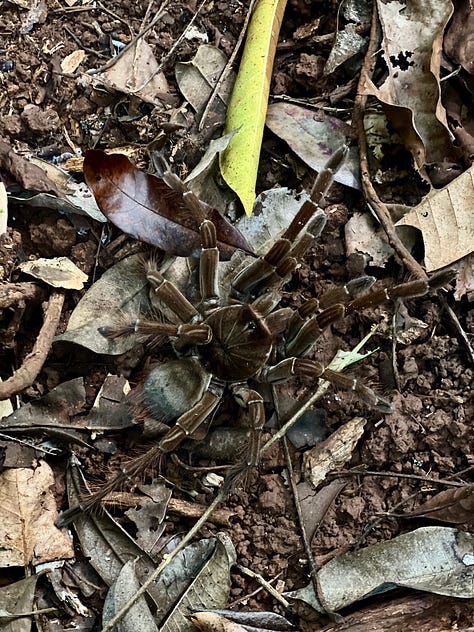
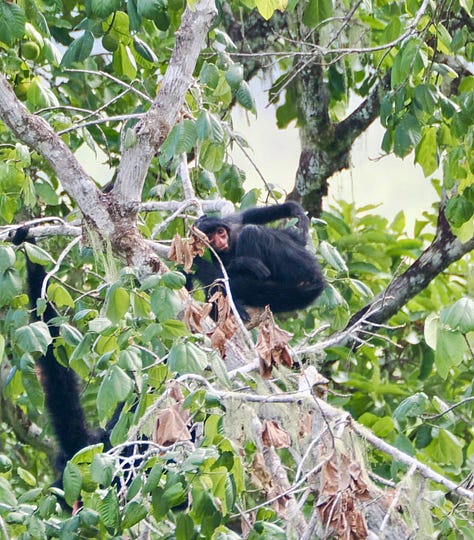
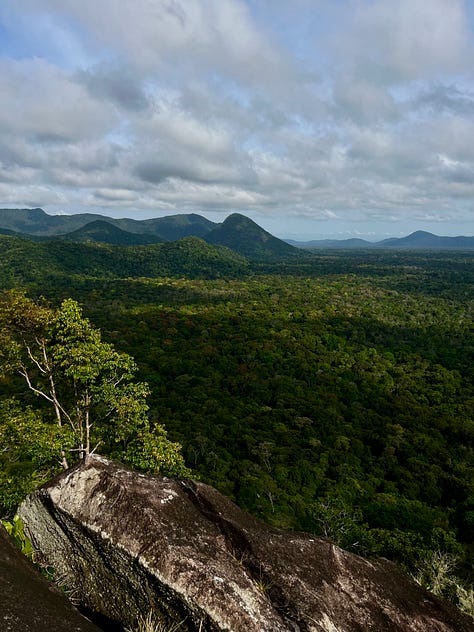
Highly recommend the book US Intervention is in British Guyana by Stephen G. Rabe (U of North Carolina Press) to understand just how awful and damaging to others US hegemony is. It may not seem like hammock reading but there’s not many books about Guyana
Once the non-vegan folks we've been mixed with leave, the food in Surama went from mediocre to very tasty

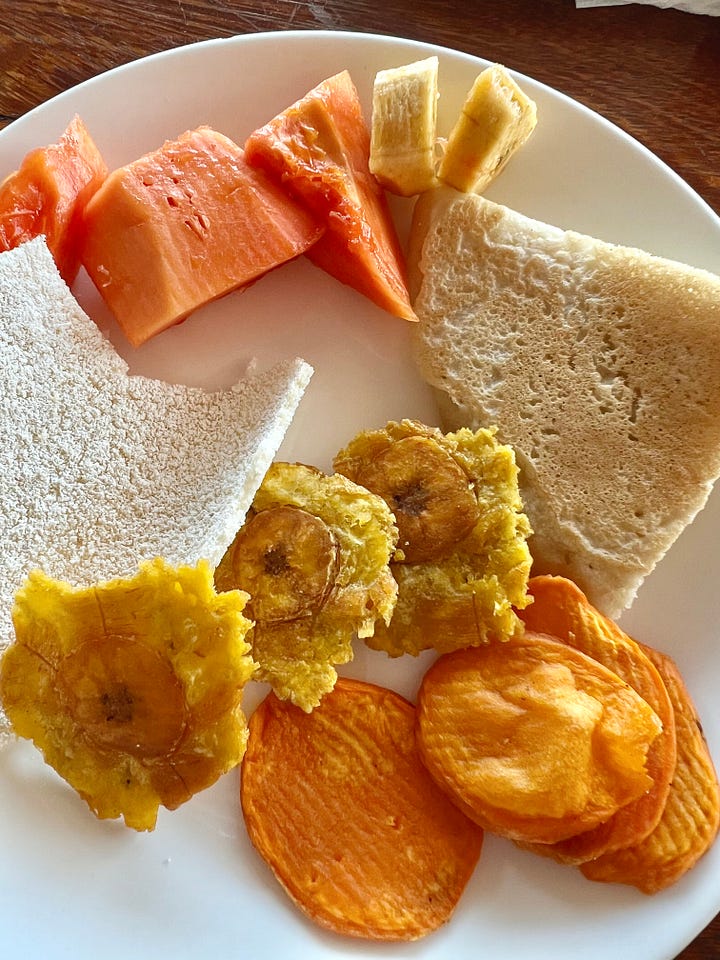
During an evening walk, our twenty-something year old guide asks, "why do you eat like that?" I tell him simply we don't eat animal products because animals want to live just as much as we do. And it's not fair to them to take their lives away when there's so much other good food to eat. He responds, “huh, yeah, you’re right”
Surama to Rewa
From Surama, we leave the forests, head southeast into the open savannah and from the Essequibo River to the Rupununi River and to the Rewa River, reaching Rewa EcoLodge.
We’re on an aluminium motorboat for about two hours and see one pirogue with two people on it. This is, once again, the wildest place we’ve ever been
Rewa is a Makushi village of 400 people. Since the lodge opened in 2008 to now, approximately 80% of the village works at the lodge. Young people return to the village after getting their education instead of leave for the old bauxite mines from whence they often didn’t return at all. Tens of thousands of acres are protected Makushi land and all of it held in common for the benefit of everyone
During the pandemic, they closed all access. No one came or went. All was fine until a villager was bit by a fer de lance and had to be brought to hospital. Within 24 hours of his return, 42 people had contracted the virus. Luckily, they suffered no deaths
Here, people still use traditional, handcrafted bows, arrows and lances
We hiked up Awarmie Mountain with views over some of the oldest mountain in the world, Makarapan - two billion years old
As I was sitting on the rocks looking and filming, I feel things drop on my head. They roll off and I don’t see them on the dark rocks. I look up and don’t notice anything. But they keep dropping. I move a bit and I look up again. And then I see them: massive caterpillars (sphinx moth) writhing about munching on the leaves of a small milkwood tree. And the dropping was poop! Caterpillar poop. I had never thought about whether they popped. It’s logical they do, obviously. So there we have it, I’ve been pooped on by caterpillars
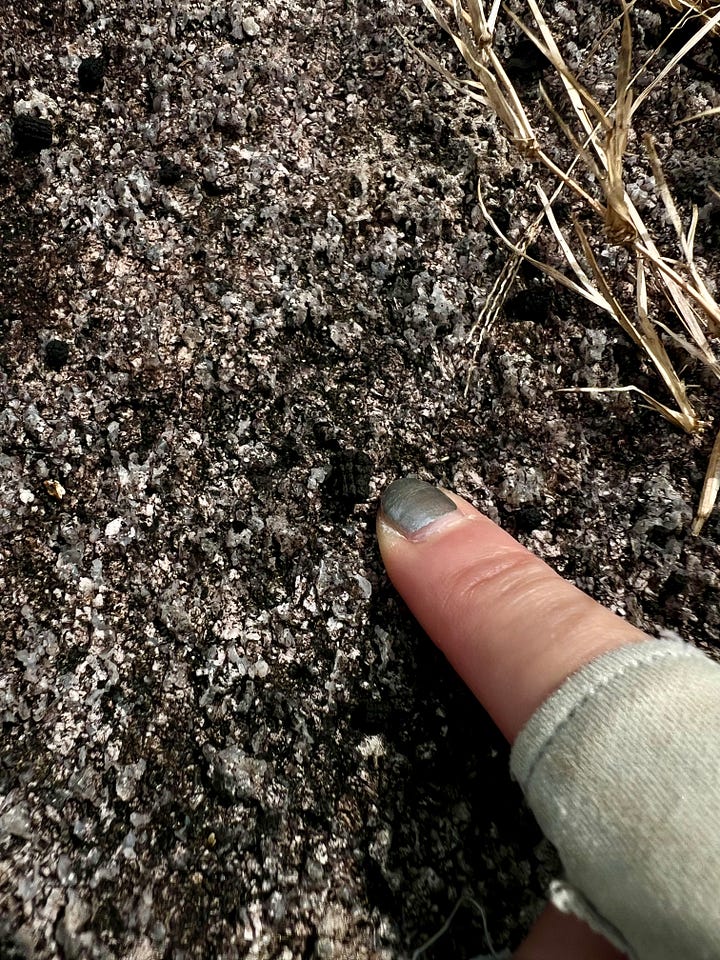
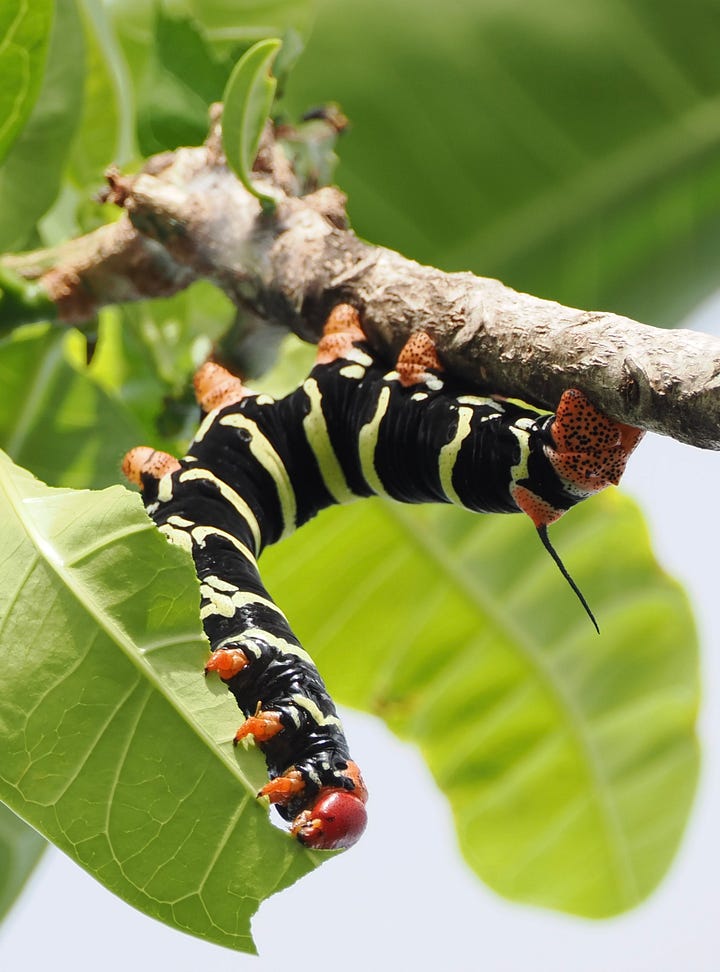
In the lakes and rivers, we see lots of rolling arapaima fish and we have no photos. They're too fast for us. They’re enormous and get to over 80 inches long and massive girth. We don’t fish obvi and we’re happy to just see them when they come up for air, which they do every few minutes depending on age
The skimmers are angry with us and the black cayman swimming nearby. None of us is nearby to disturb their nest. They take no chances. They want you far away and they’ll divebomb and screech until you go. And we oblige
Saw cute squirrel monkeys and saki monkeys. No photos
And this baby cayman among the water plants will become an adult someday. We don't see adult caymans during the day. But at night... that's when we understand why the rule is: don't go swimming in the river! Their eyes pop up everywhere
On Roger's birthday, we go looking for Goliath bird eating spiders. We see a small one. The giant mara tree in front of which Roger is posing is about 50cm in diameter and I don't know how tall
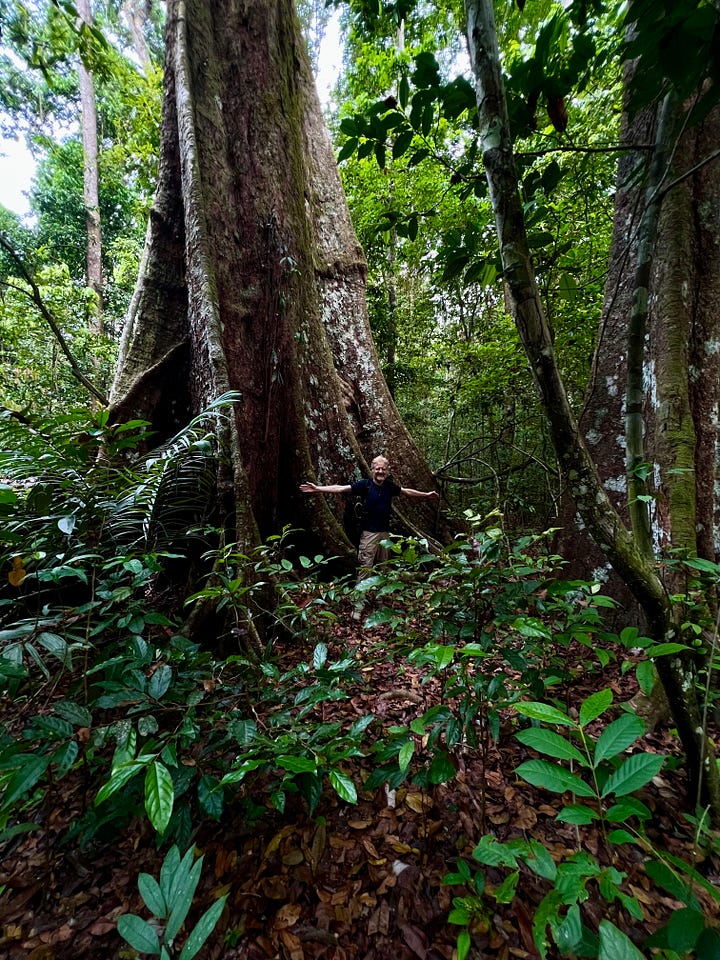
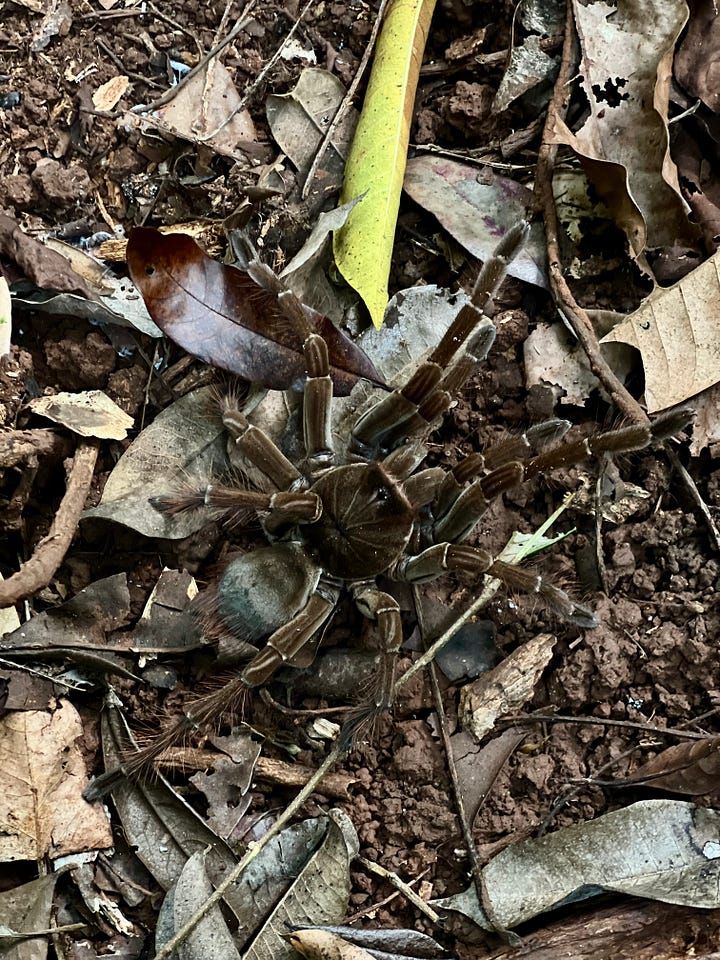
The river and forests at Rewa are dreamy in the evening
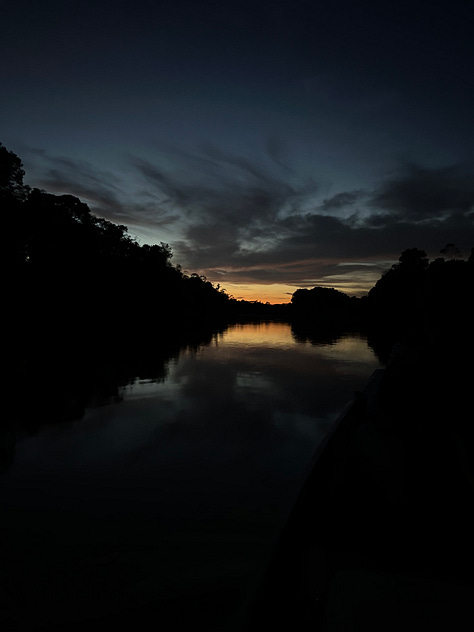
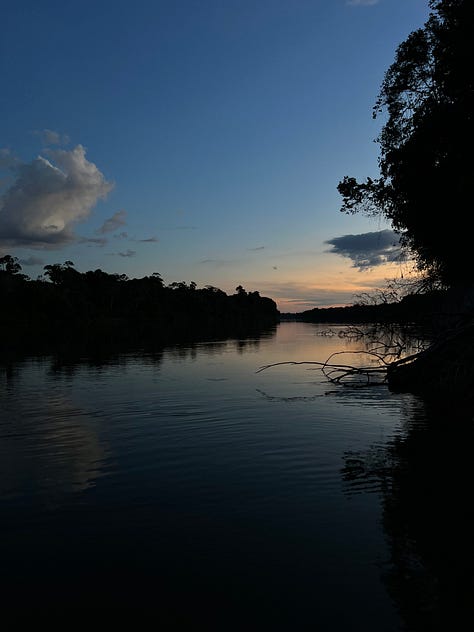
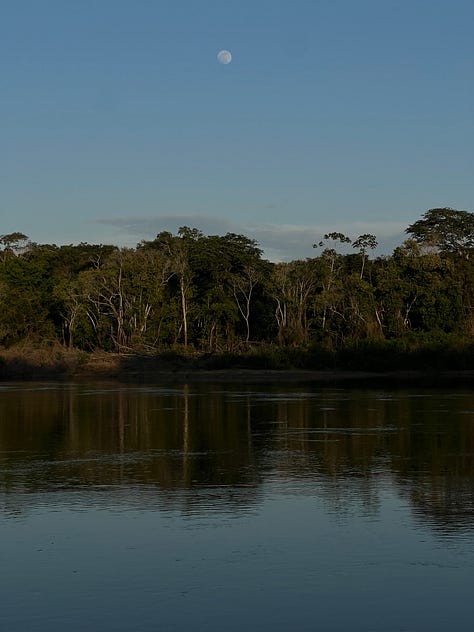
And the food - it’s all seasonal, fresh, and yes, straightforward ingredients. Fab
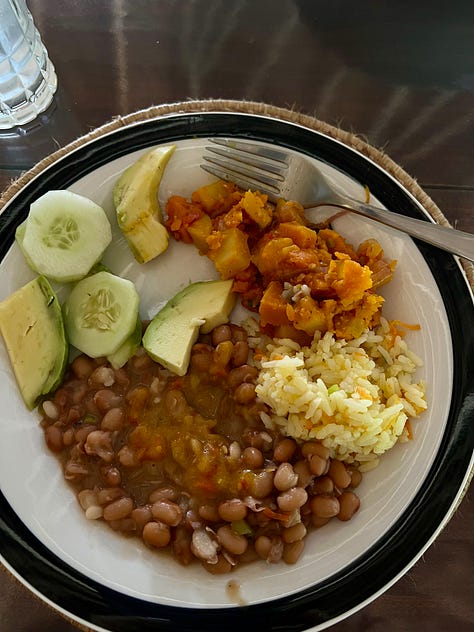
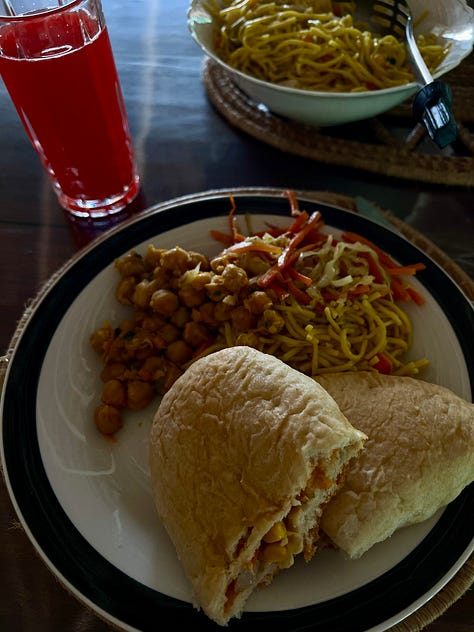
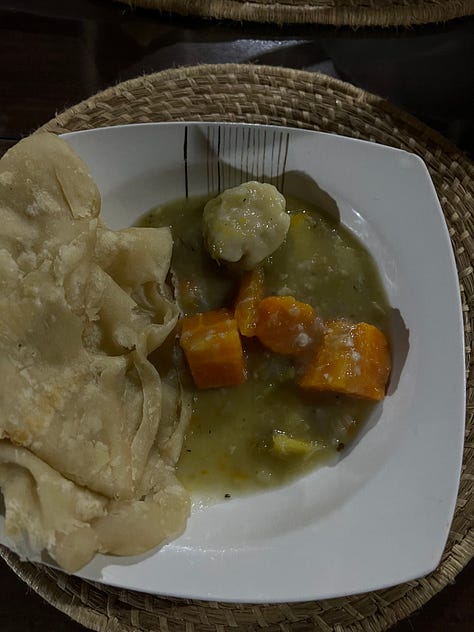
Journey to Karanambu
We retrace our journey back up the Rewa River for two and a half hours, returning to the Kwatamang Landing. We’re heading to Genip Landing on the Rupununi River so we can travel farther south, deeper into the savannah and Karanambu
Along the way, we see a tree full of the wondrous and bizarre jibaru stork.
Two are having an aerial fight
On the road to Genip, we spend some time with Charles DeFreitas a 70 something year old and his wife who own Pakaraima Mountain Inn, a lodge on the road. She makes us lunch. He’s “third generation Portuguese”, he tells us. His sister returned to Madeira years ago. One of his brothers is in California and hasn’t seen him in decades. And the other brother lives with them. Charles speaks the patois and English with the sweet lilt we’ve now become accustomed to. And he tells us how in 60s London when he was studying at Imperial College London, people would ask him why he spoke “like a Black man” imagining no white guy like him could speak like everyone else in Guyana. I took no pictures with him because he was a relentless story teller (Michael Caine’s wife was my brother’s girlfriend!) and it was a million degrees in the shade. Lunch was outstanding
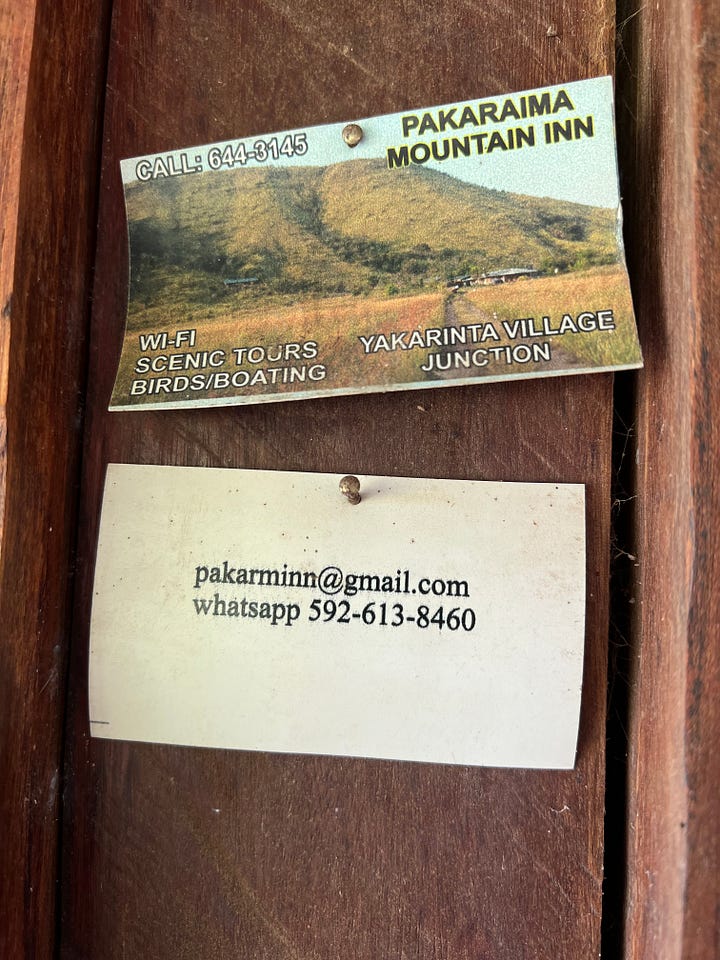
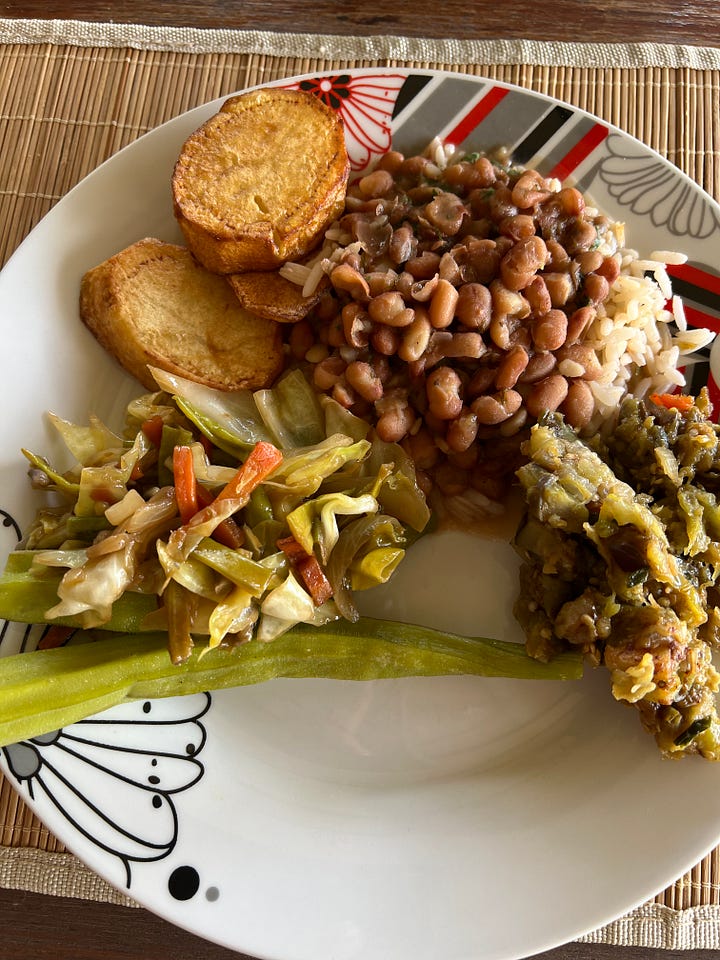
Finally, we’re back onto the Rupununi River and head to Karanambu
It’s on the open savannah with bush islands along the river and some inland
We see giant river otters
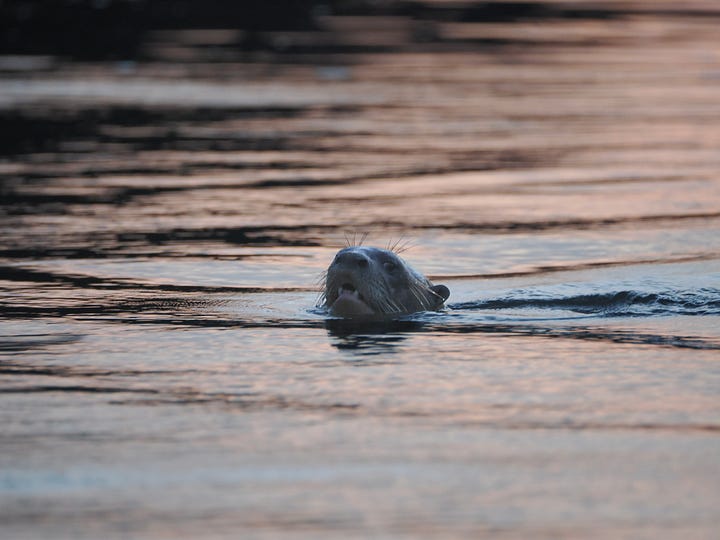
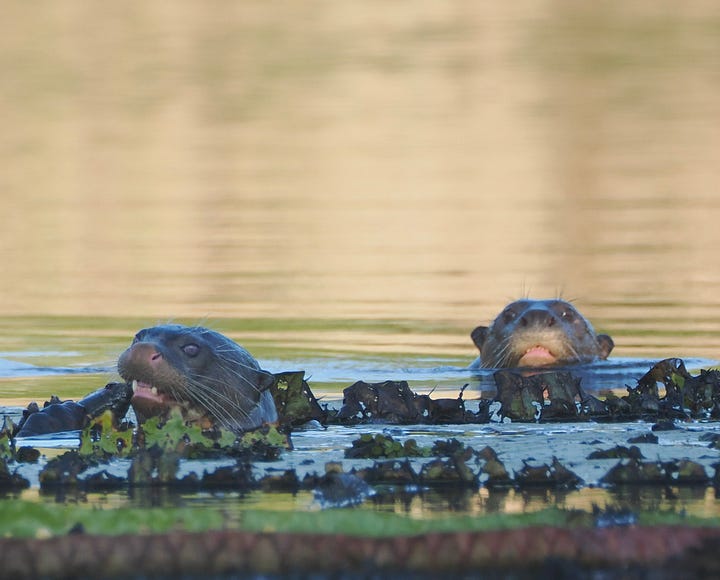

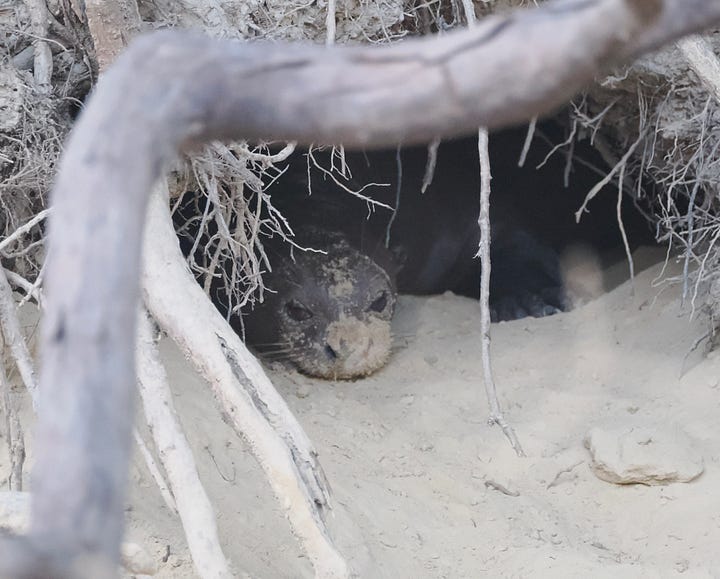
And the magnificent Victoria Amazonica water lilly
These plants are extraordinary. The pads begin like sea urchins, unfurling to leathery pads reaching 6ft (1.8m) in diameter and which can hold up to 30lbs (14kg) in weight. Their flowers bloom only at night. Around dusk, they begin to open. At that moment, the flower is female. The full bloom takes 45 minutes. And the perfume they emit is intoxicatingly sweet and delicious. This attracts a special beetle - hundreds of them, in fact. By dawn, the flower will have closed, trapping the beetle inside. The beetle feeds on the flower’s nectar. The next night, the same flower repeats its bloom. This time, it’s male and will have turned pink. The beetles will leave with the pollen and will go into other flowers. The bloom eventually closes and sinks to the bottom to make more pads
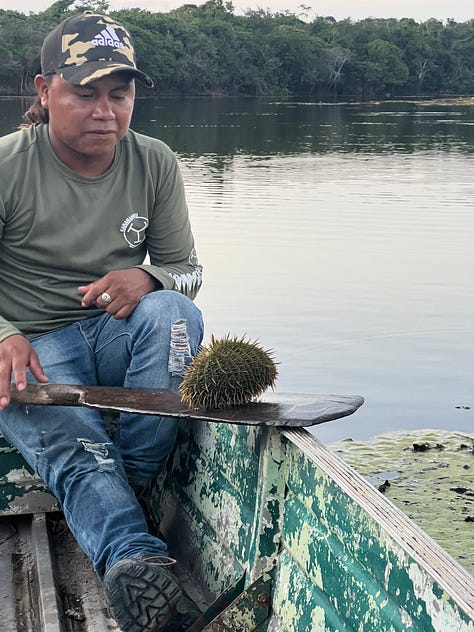
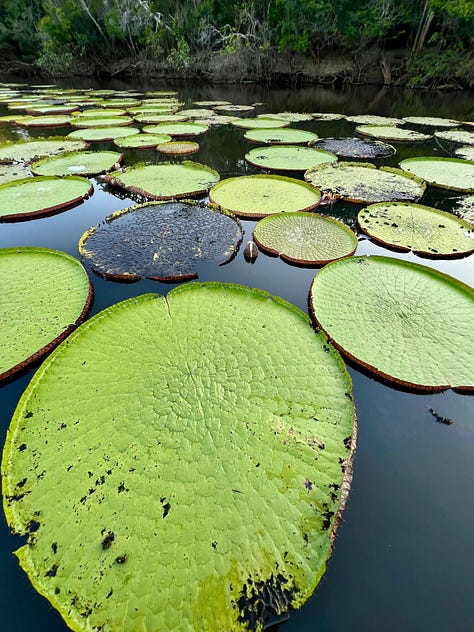
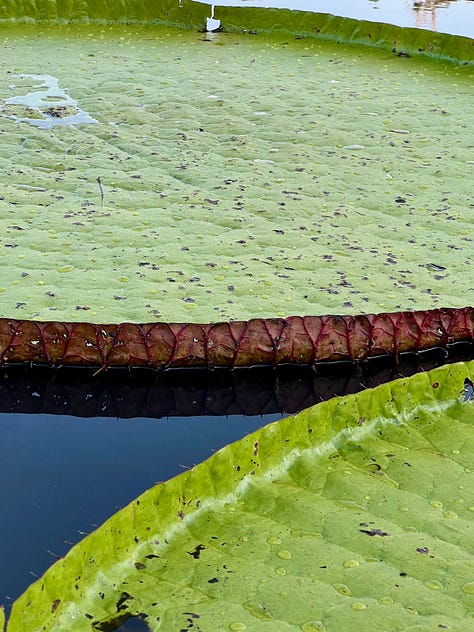
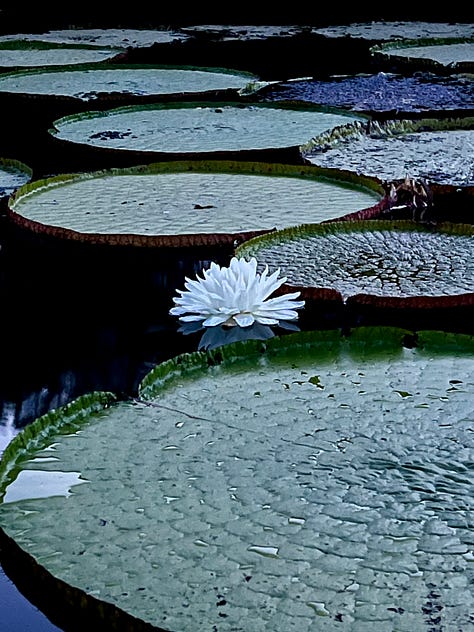
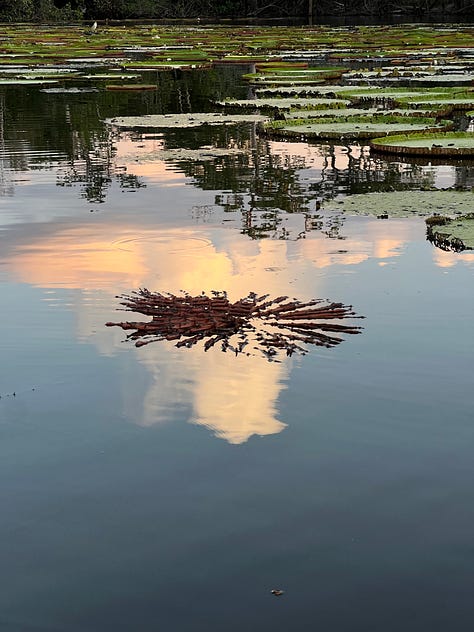
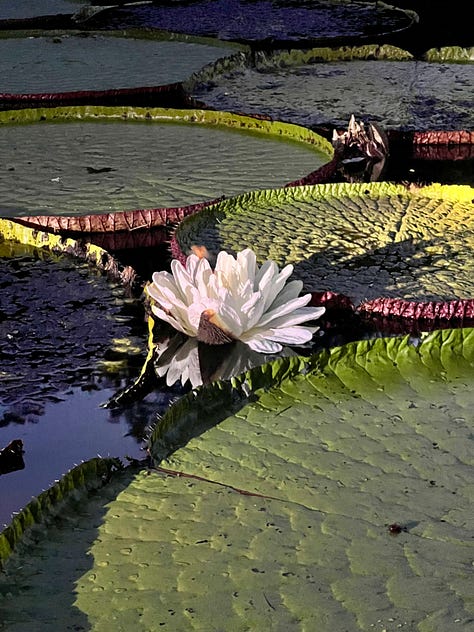
We see the Tsuchinshan-Atlas comet and a spectacular full moon. This was my first comet. It won’t come around for 88,000 years
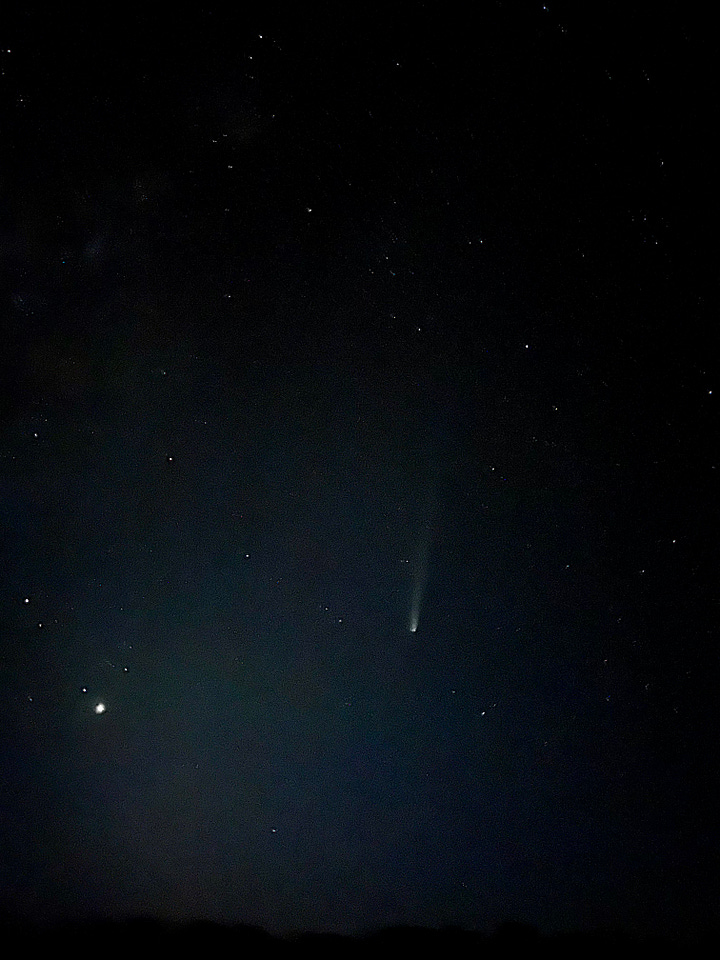
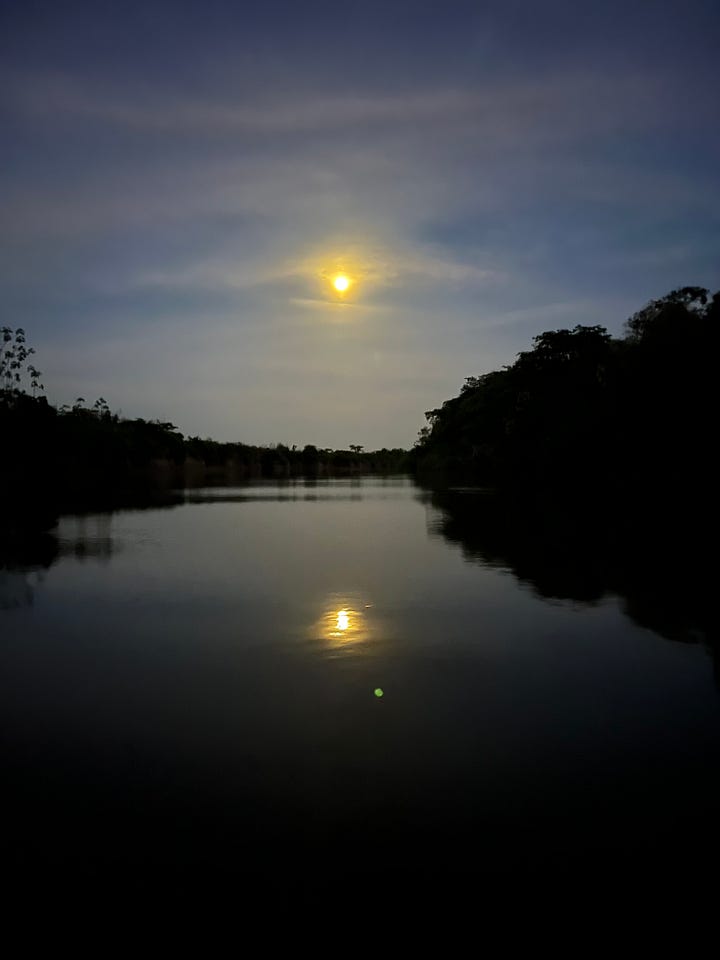
The sunsets and sunrises on the savannah are phenomenal
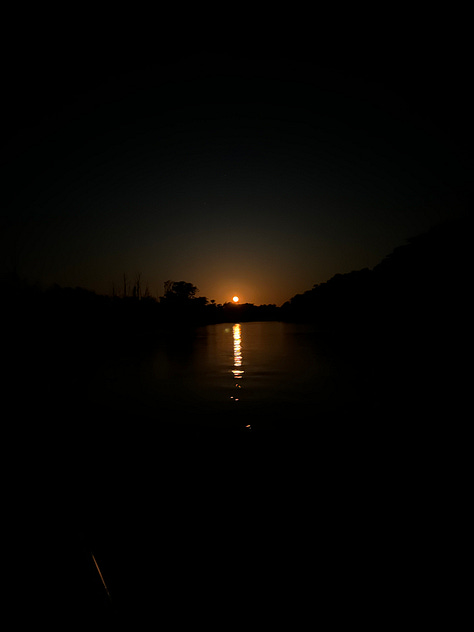
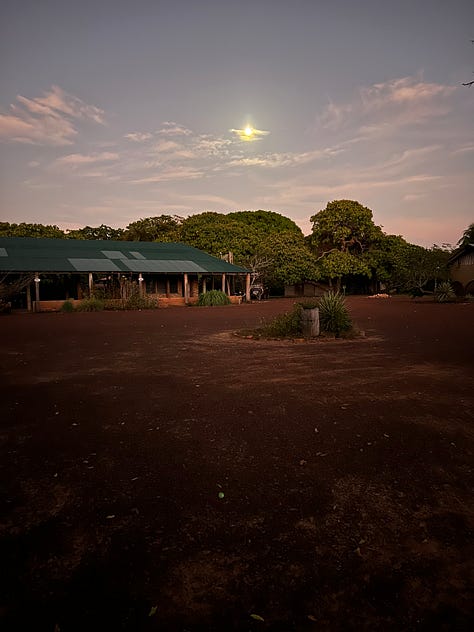
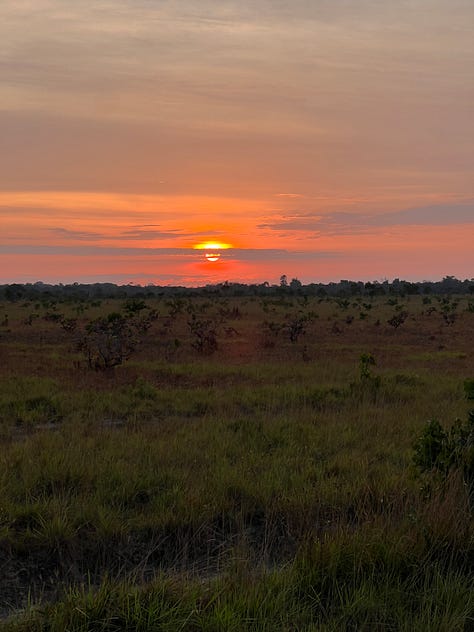
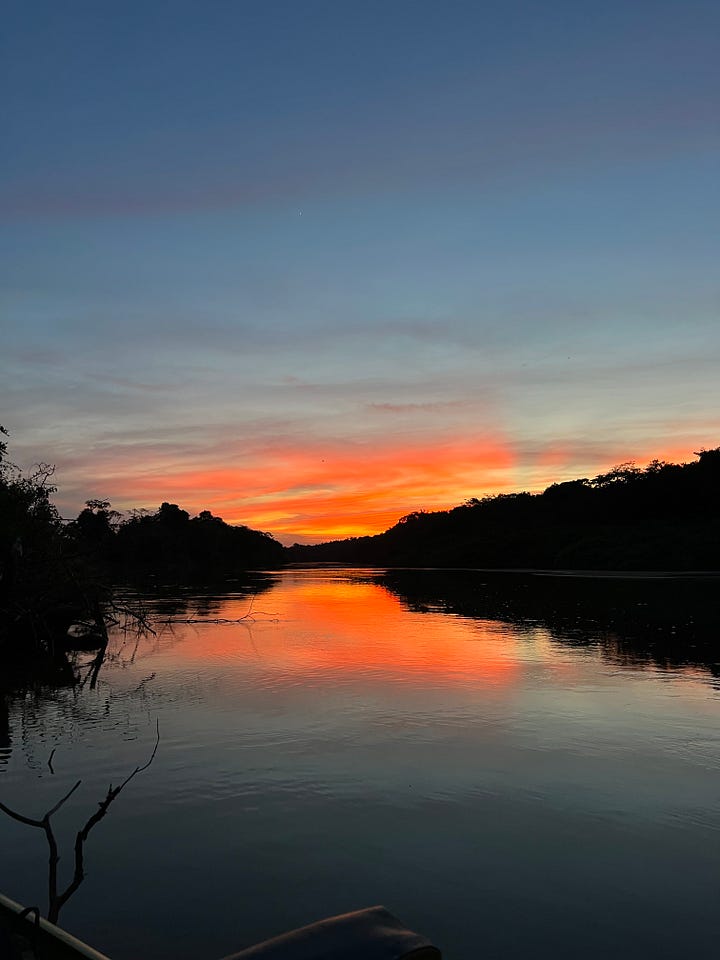
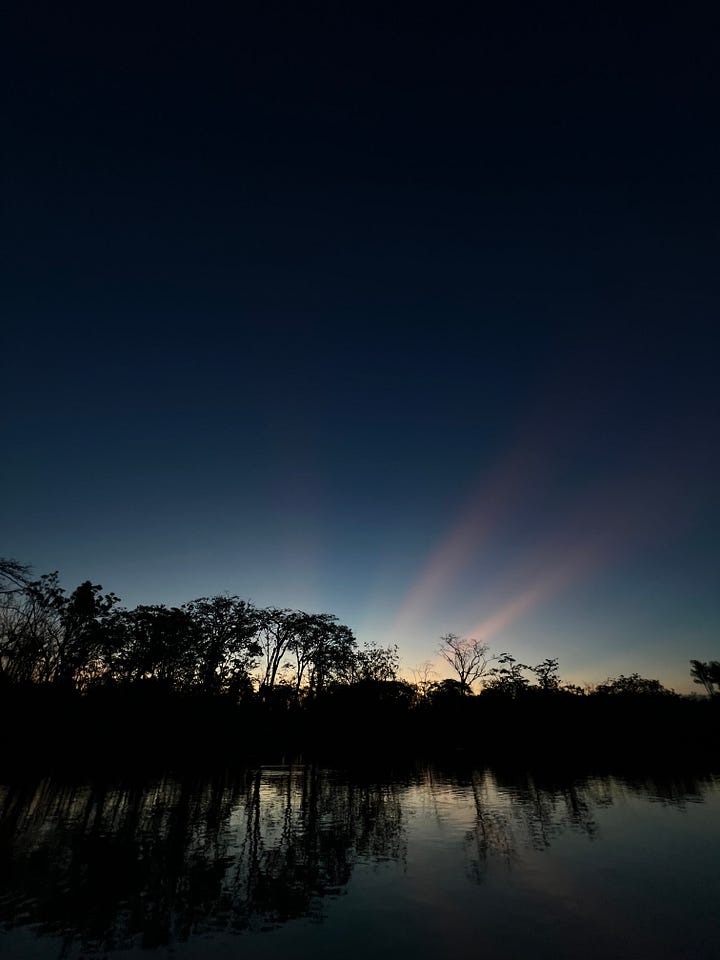
The lodge at Karanambu is run by the daughter and her family of Diane McTurk, who was known as the otter lady. She used to rescue otters orphaned or injured due to otter fur trade. The trade stopped sometime in the 80s and the need for rescuing otters waned
Unlike elsewhere, there was a divide between guide and host. All meals were only with the host who regaled us with stories about Diane or complaints about the taxes in Guyana. I wasn’t into it and I didn’t care for the “old world” attitudes. Karanambu used to be an 1,100 square mile ranch, the largest in the world, encompassing several villages. Fortunately, that’s no longer the case and hasn’t been for several decades. The current 110 square miles are leased from the state
The cows who graze on the estate do so in matriarchal family and social groups. With an older male and all the females, everyone looks after the babies
Excellent food once again, including delicious cookies for sundowners on the river or one of the many lakes
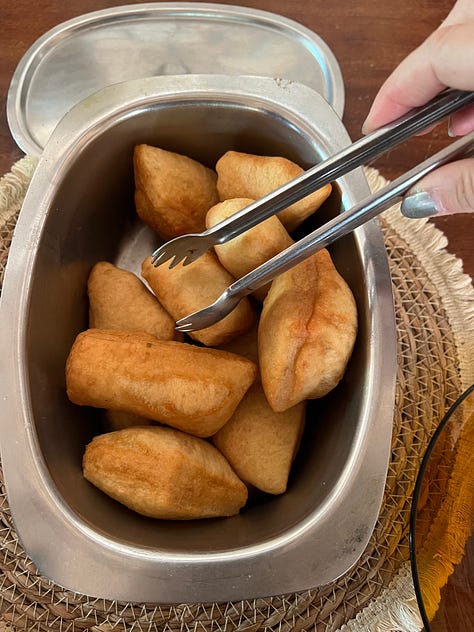
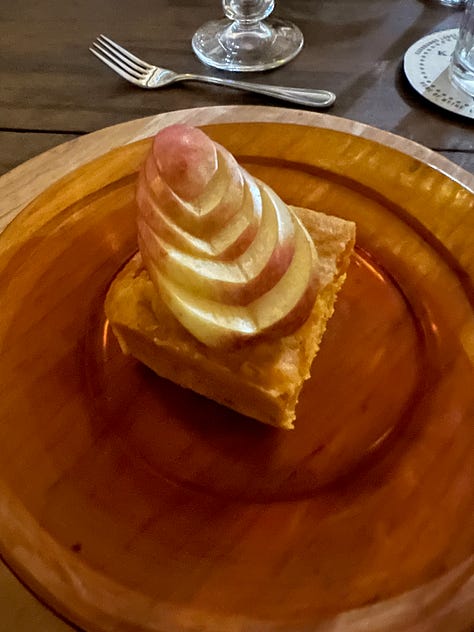
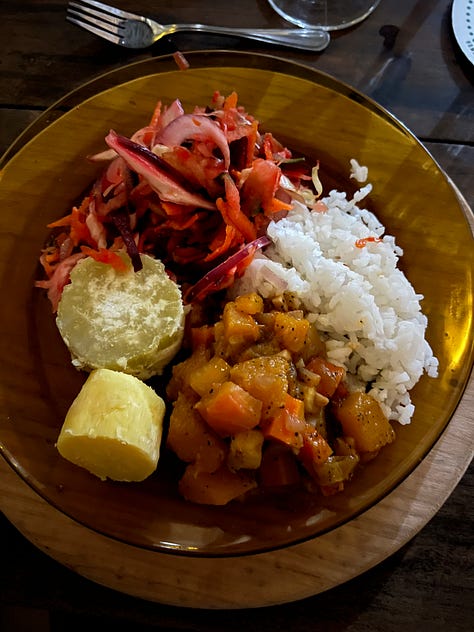
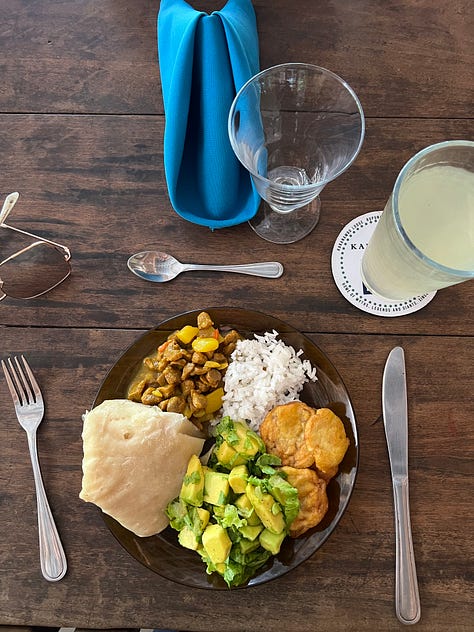
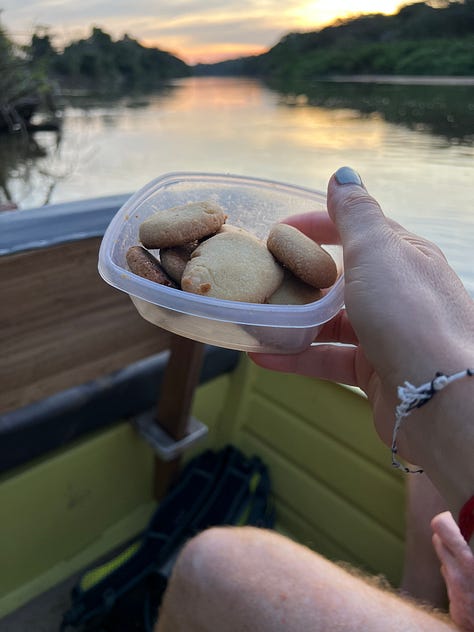
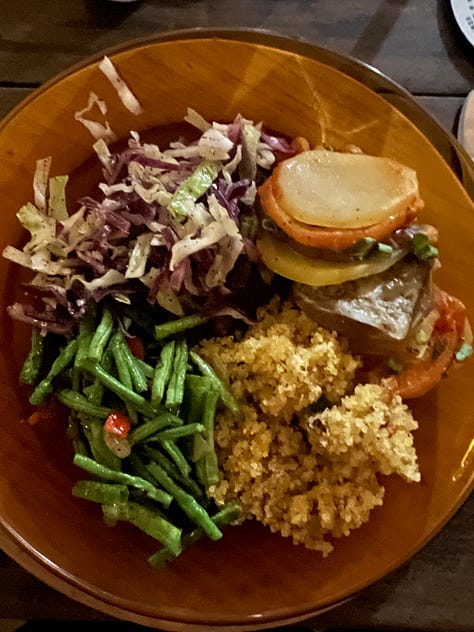
Wichabai and the wild South Rupununi
We travel even farther south through Lethem and into the South Rupununi
Lethem is a dusty border town with Brazil just on the other side of a bridge and across a porous jungle border. But you can get just about anything there
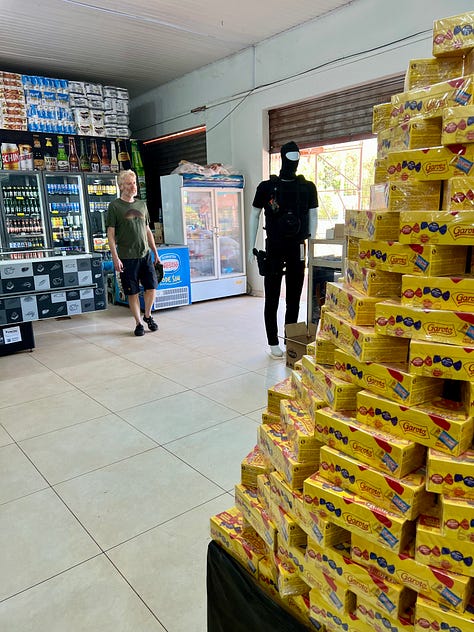
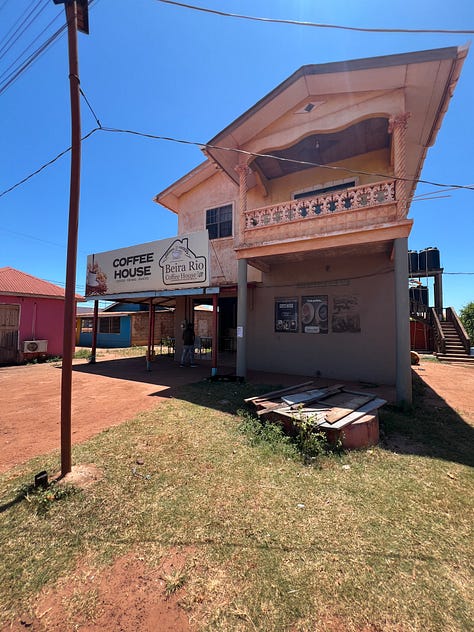

We drive a few hours out to the last spot where any travellers go, deep in the savannah and onto the Rupununi River, Wichabai. It’s a glorious place run by a family
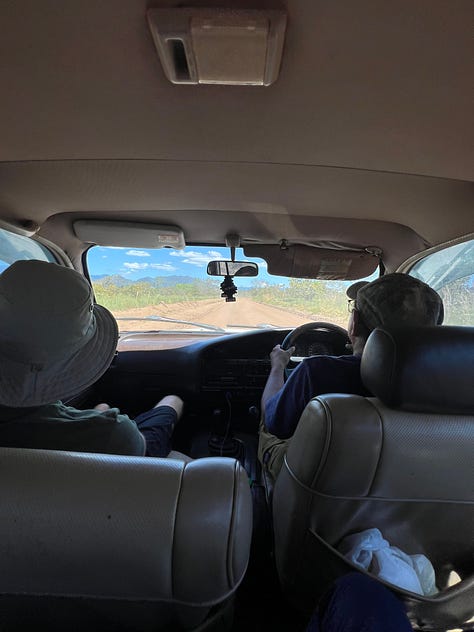
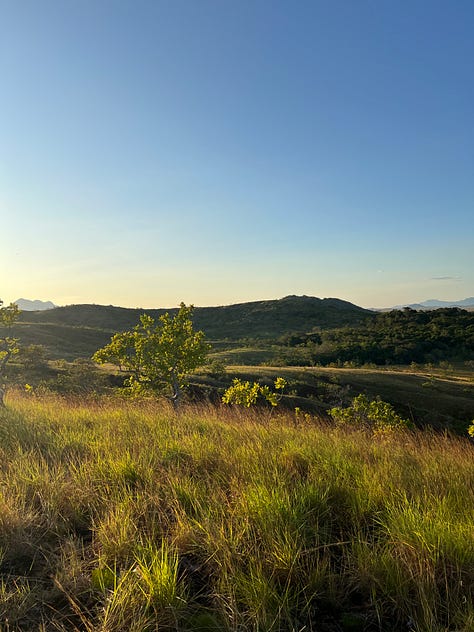

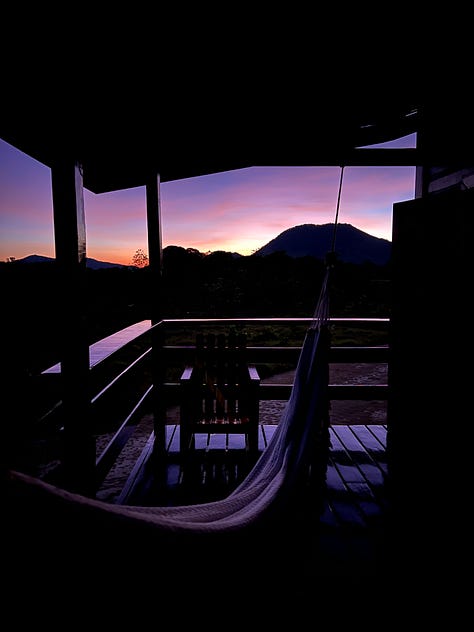
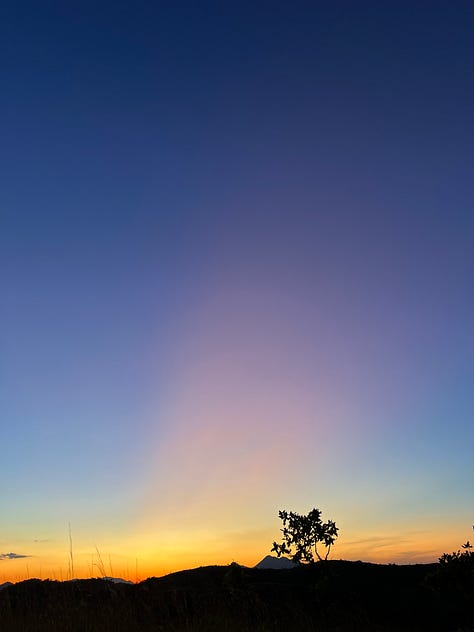
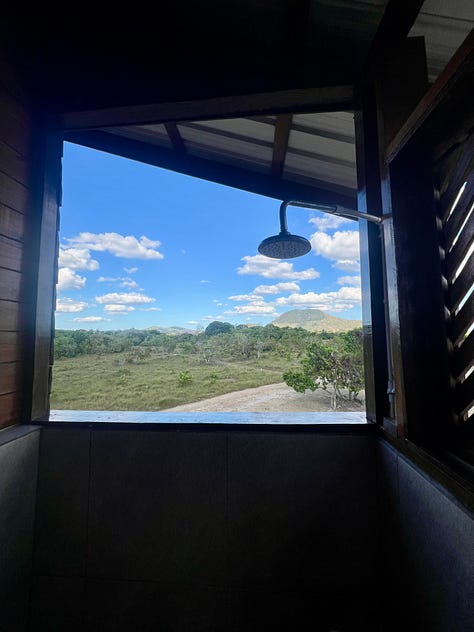
Leroy, our guide, is one of the founders of the South Rupununi Conservation Society and he’s obsessed with the bird, Red Siskin. We look for them on a hill and have a great picnic breakfast (there is no sleeping late if you want to do anything before it's too hot)
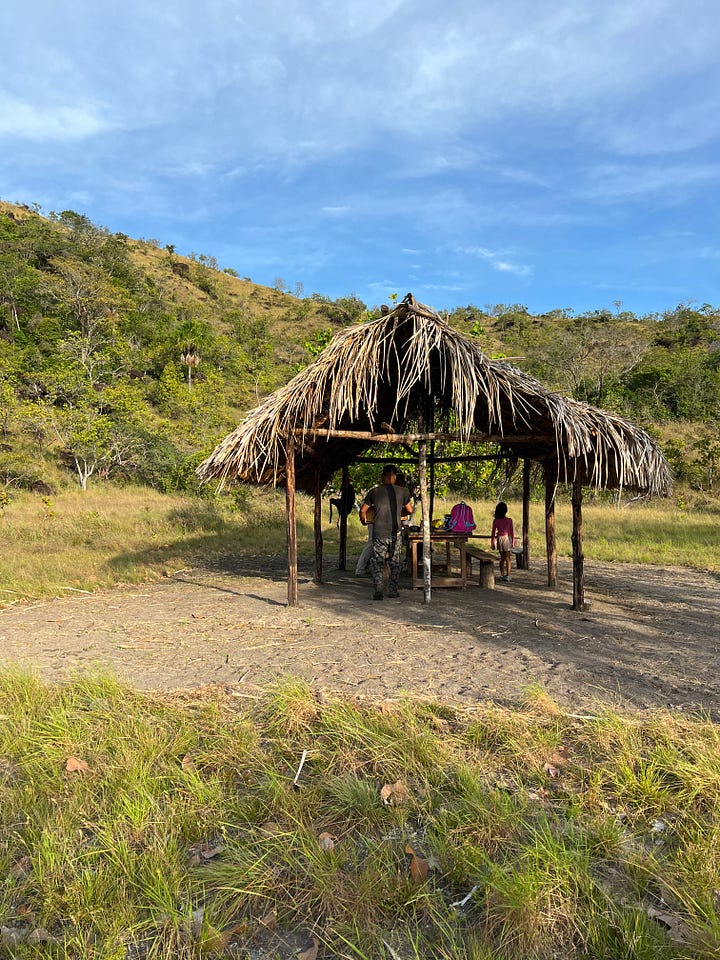
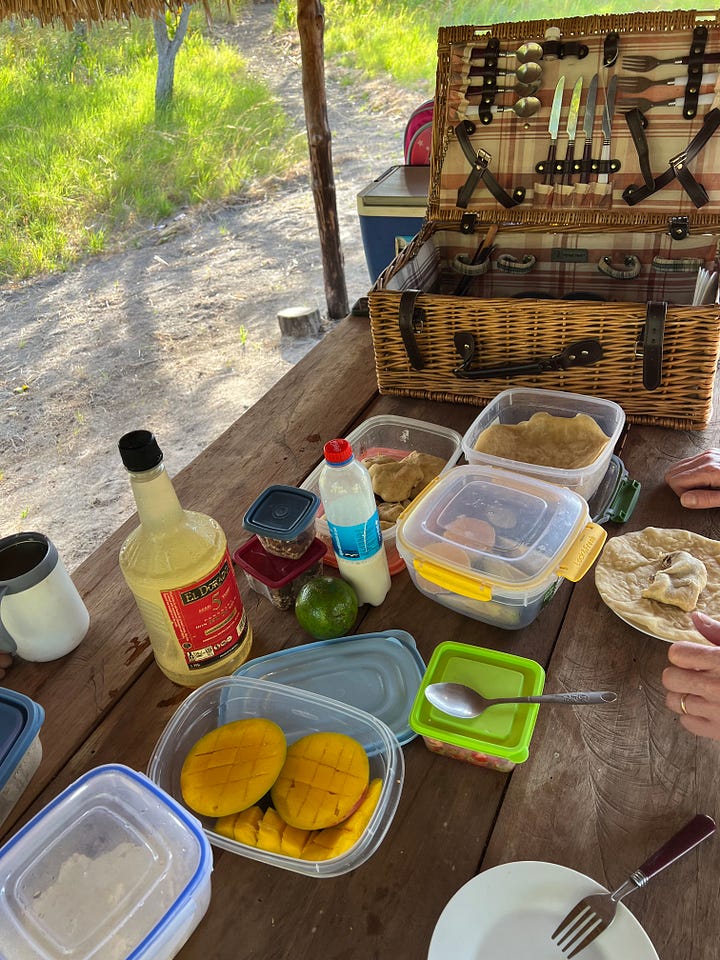
Eventually, we find siskins perched on trees in an old villager's farm. The man cultivates mostly cassava, one of the staples
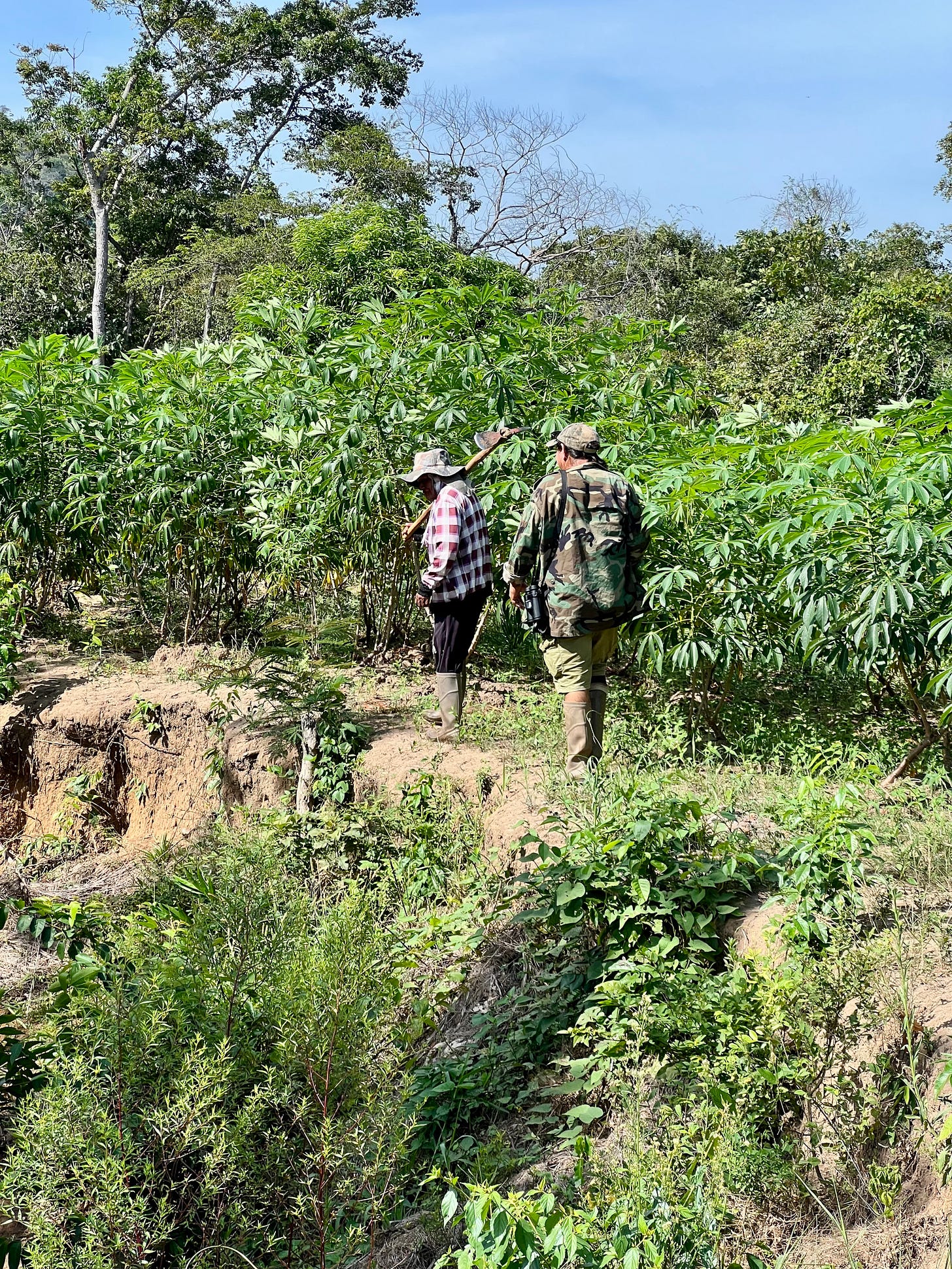
Leroy is also a great driver wherever roads may or may not be – mostly not, in fact
Red Siskin are beautiful birds persecuted to extinction in Venezuela because people were obsessed with their red plumage and to breed a red canary. The Germans started the obsessive process and the Americans completed it. The Guyanan Red Siskin is now protected and suffered somewhat less than their Venezuelan counterpart. But they’re imperilled as we all are by climate catastrophe and habitat destruction. We are very happy to have seen them. May they continue and thrive
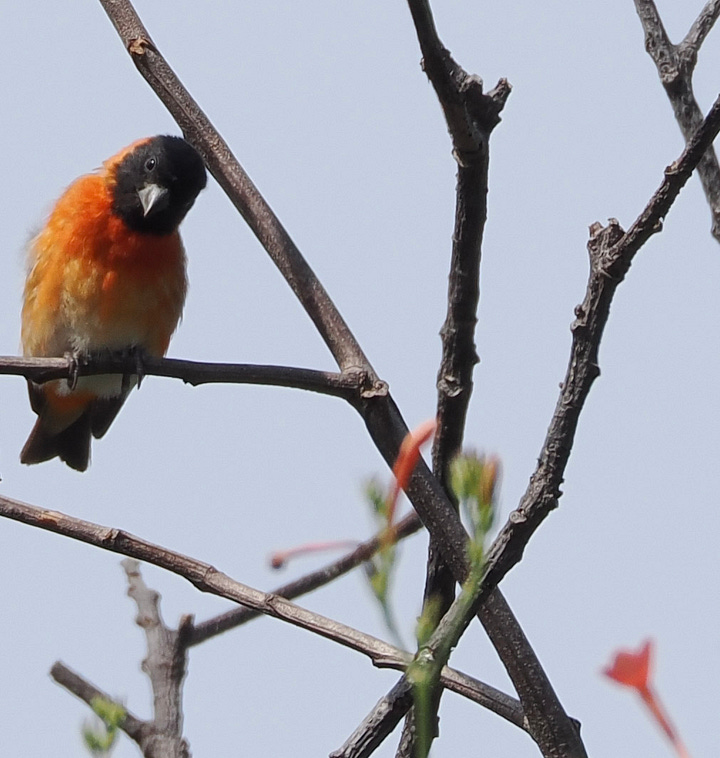
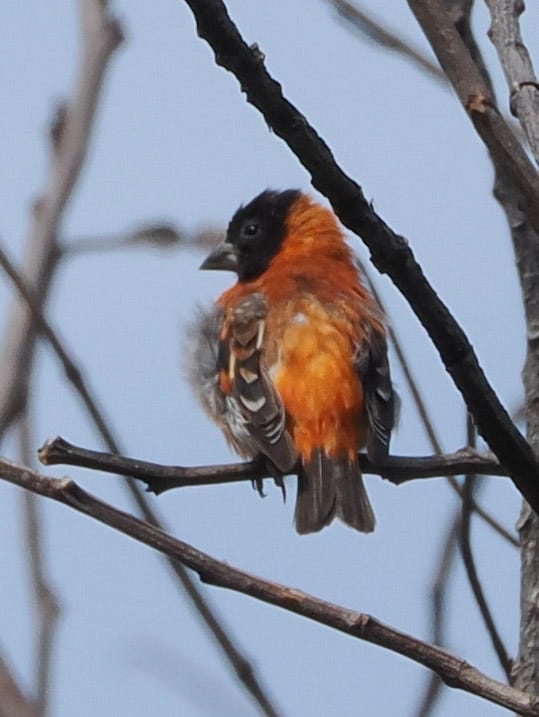
In the afternoon, we go for a dip in the local creek at Rupunau and stay at “Grandma Katie’s” house as the tiniest member of our travel gang calls her grandmother
Katie has a gorgeous kitchen and by that I mean all the pots and pans are well used, there are plenty of staples jarred everywhere and you know the person in charge of this kitchen can cook, which she does for all of us and once again, it's hearty and delicious
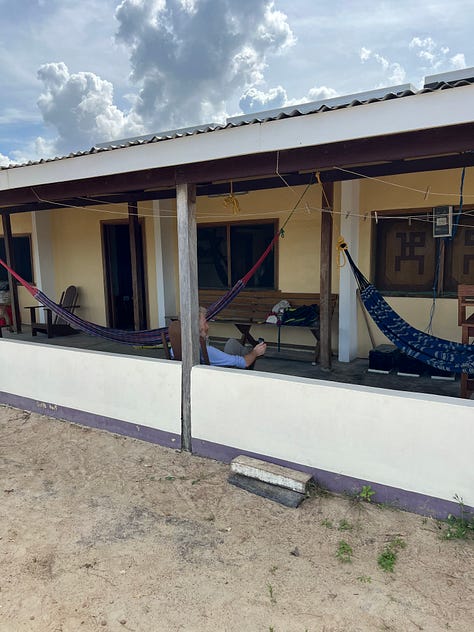
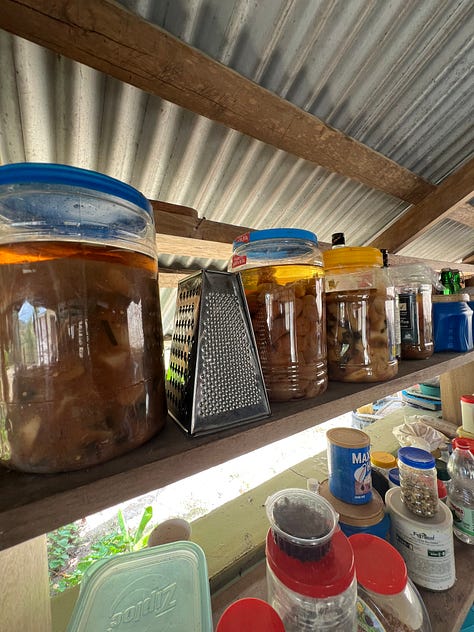
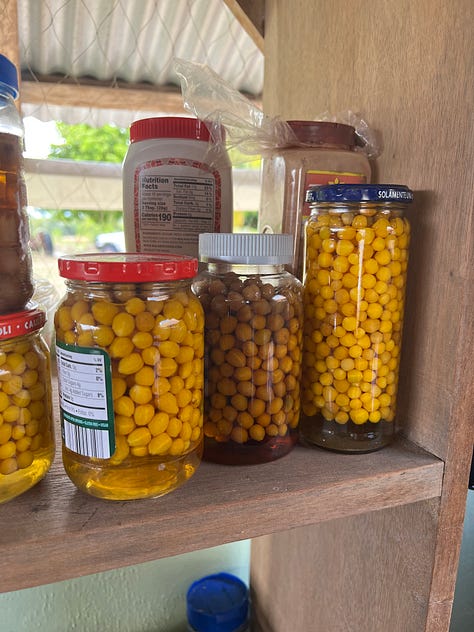
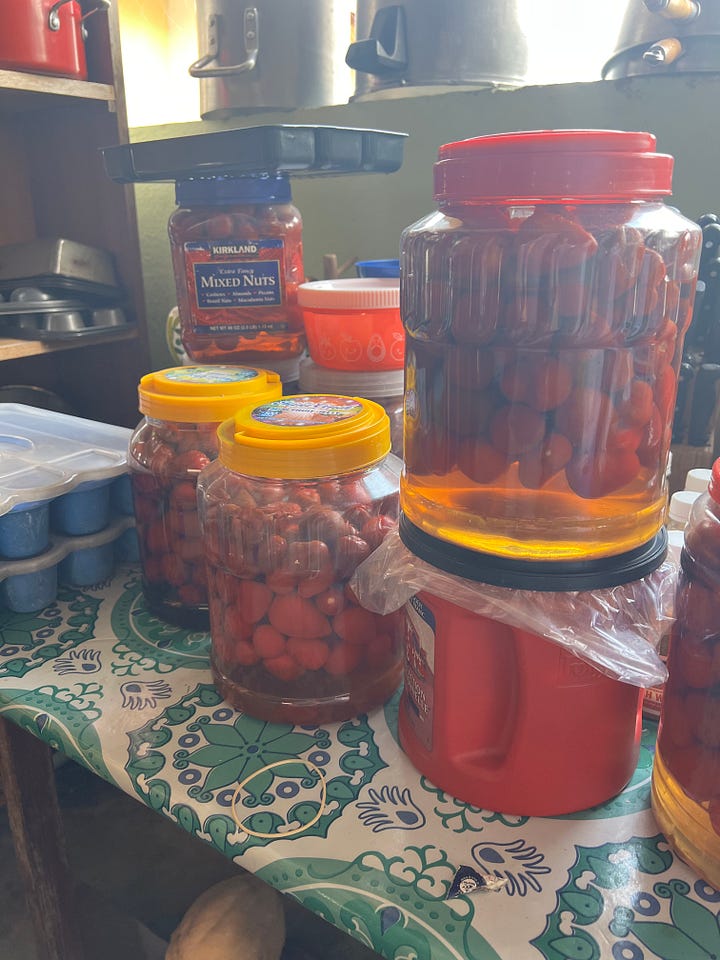
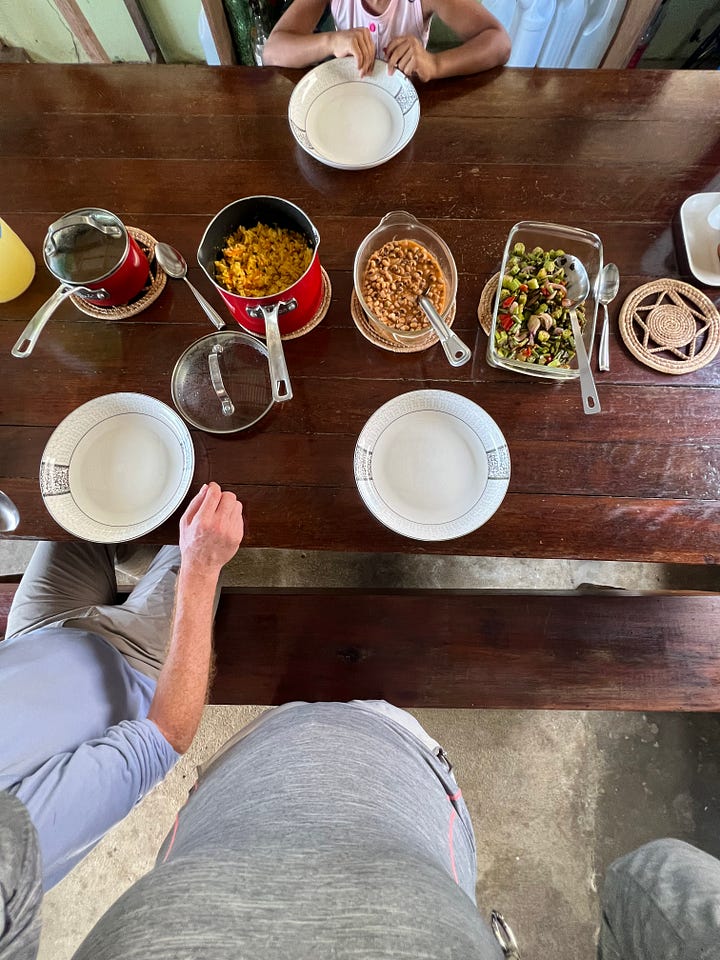
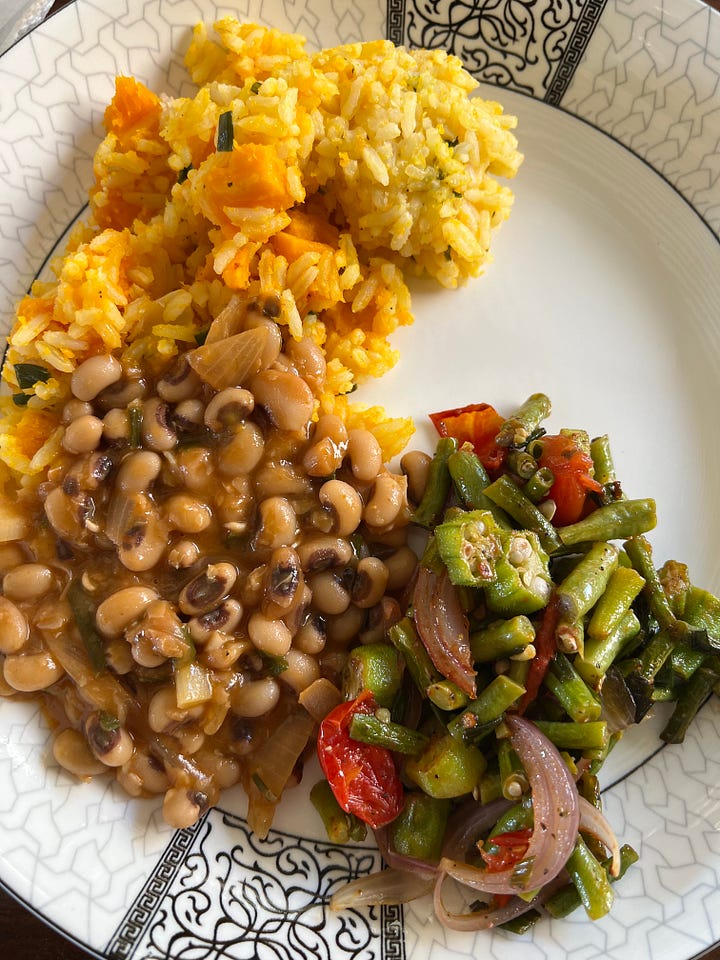
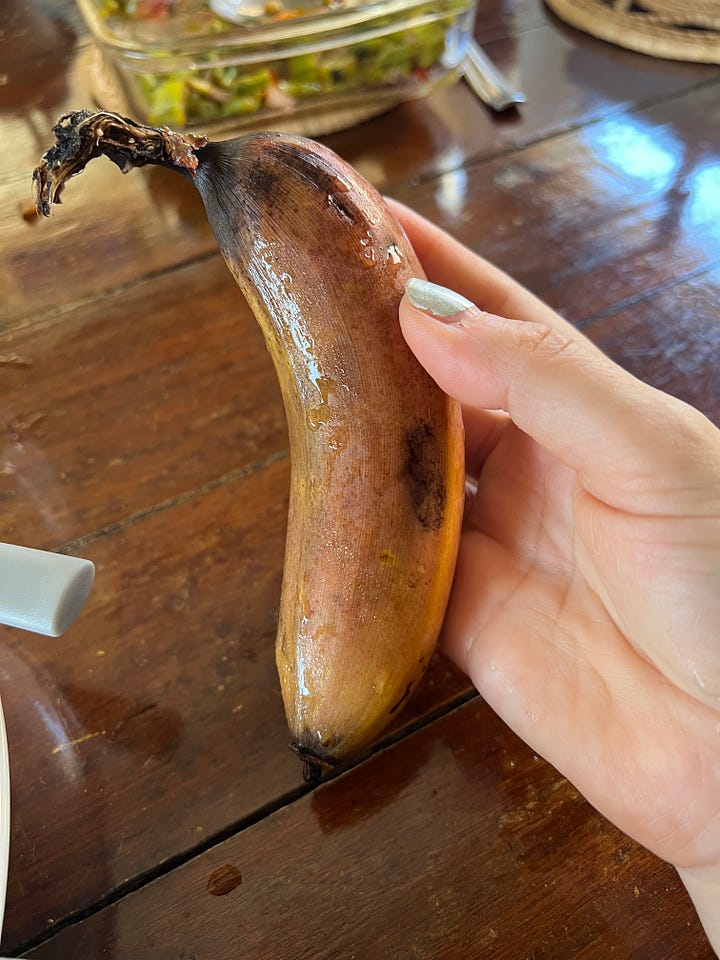
The earth is scorching and we head out, barefoot, covering the distance of a hundred metres between the back of Katie's house to the river, in record time. It’s been so hot. And before the savannah, so humid. We certainly have made up for not having a summer in Britain
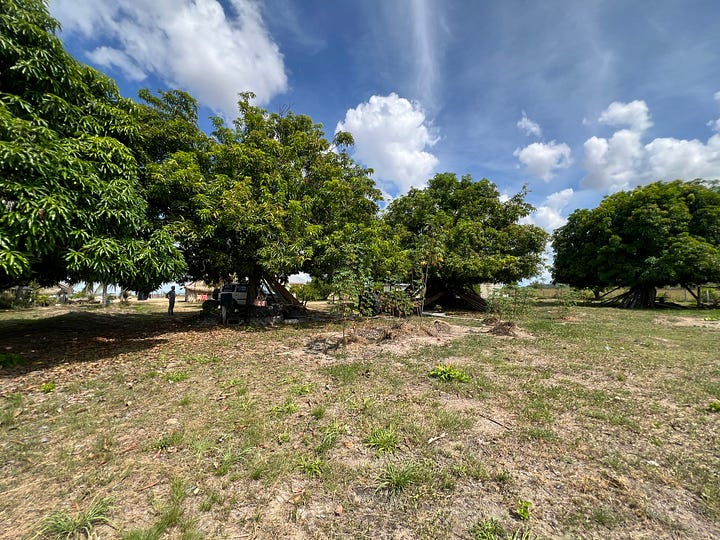
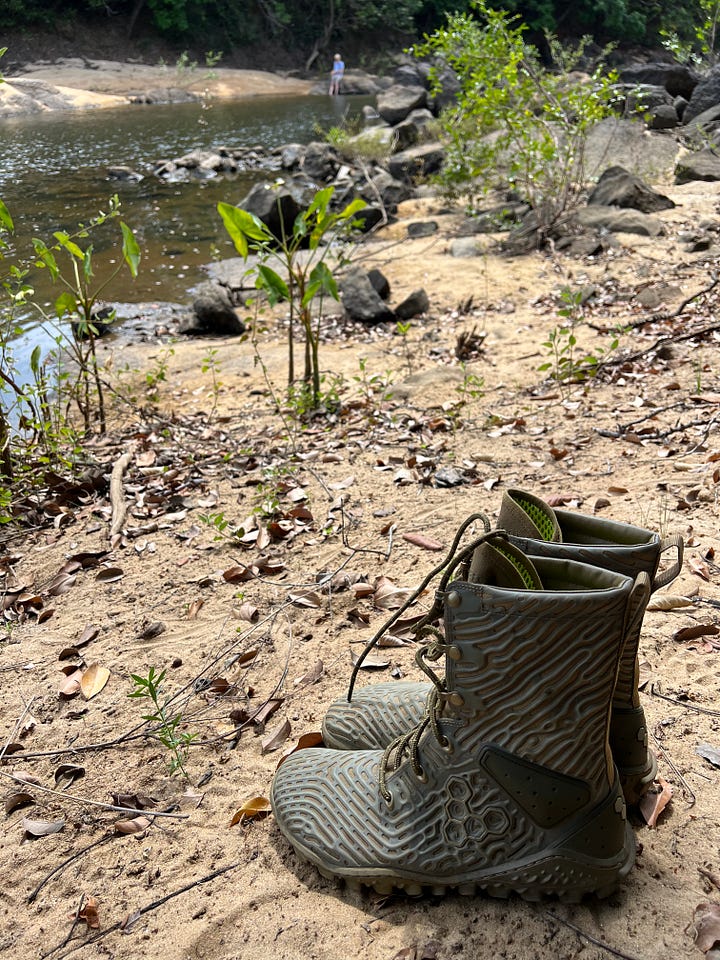
Outside Rupunau, through the savannah, there are hills with incredible petroglyphs. Probably six or seven thousand years old and their meanings are lost. There are beautiful cactus there too
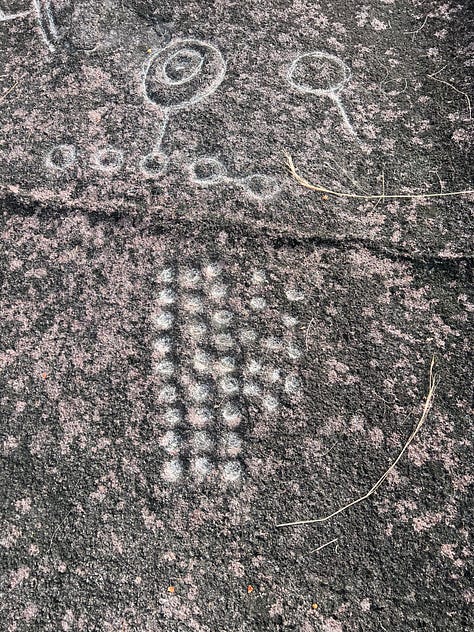
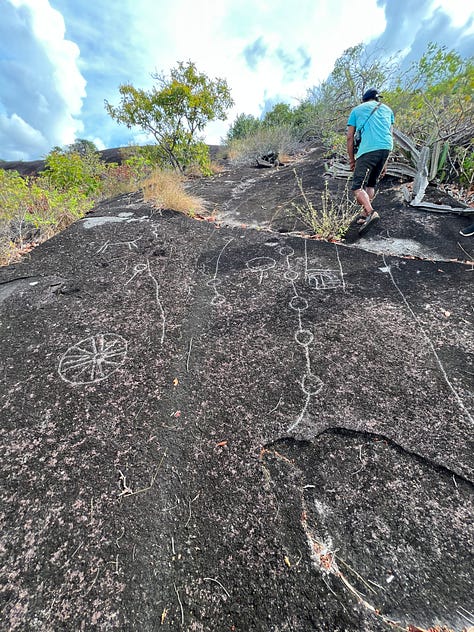

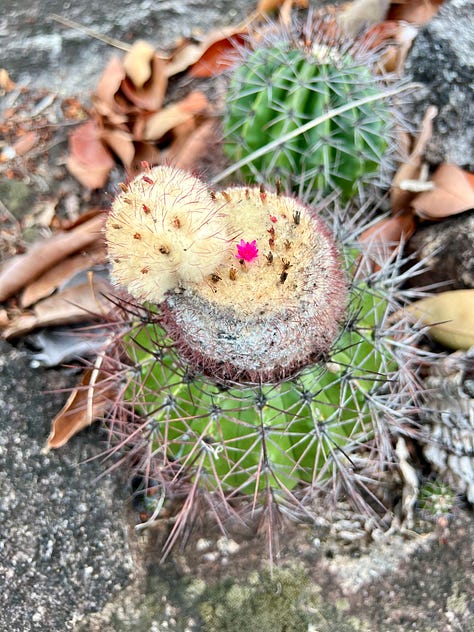
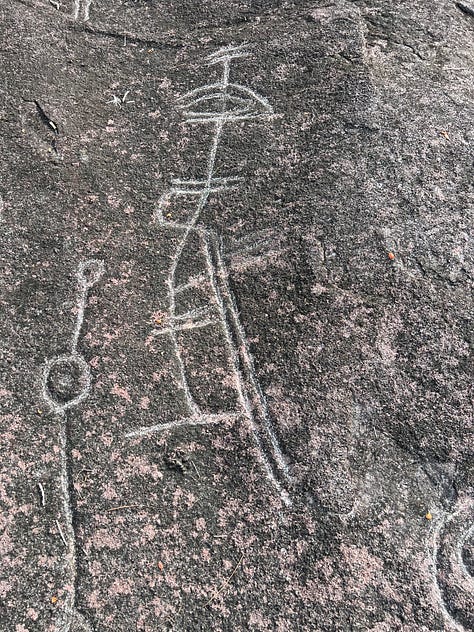
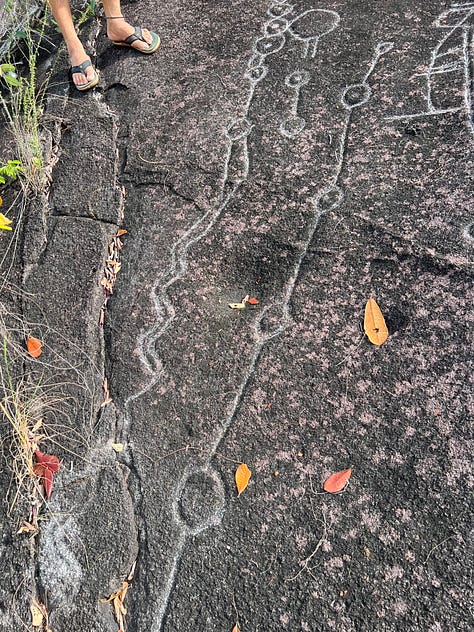
Nicholas, another founding member of the South Rupununi Conservation Society, invites us to his farm in a forest island to make cassava bread from picking it, grating it, squeezing out the cyanide and baking it. When we're about to enter the forest island, he says, "Welcome to the edge!" He means the edge of the forest and the savannah. Is that all though? Edge is what we'd been travelling through since arriving in Georgetown. Edge is what Guyana has been all about all along
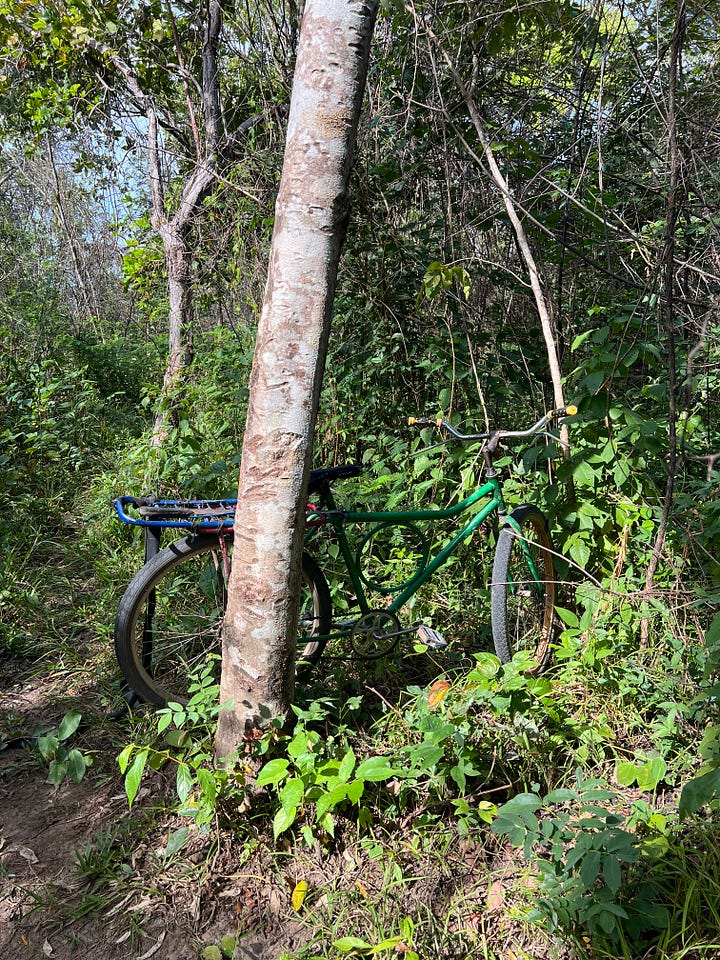
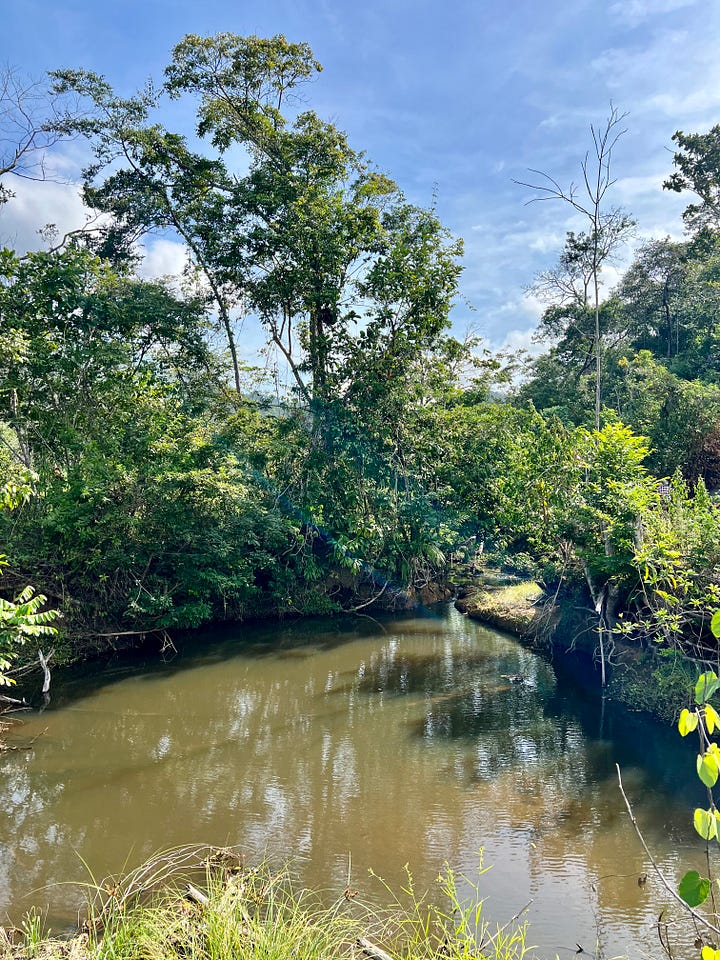
Making cassava edible is tough work and mad respect to Di, our chef for the day, and all the women who make it regularly. Preparing it is primarily a woman's job. The process goes from digging it up, cleaning, cutting and washing, grating, putting through snake-like tubes for squeezing, sifting, then finally baking on the special hot pan. I love anything made with cassava. It's a little bit tangy and all delicious
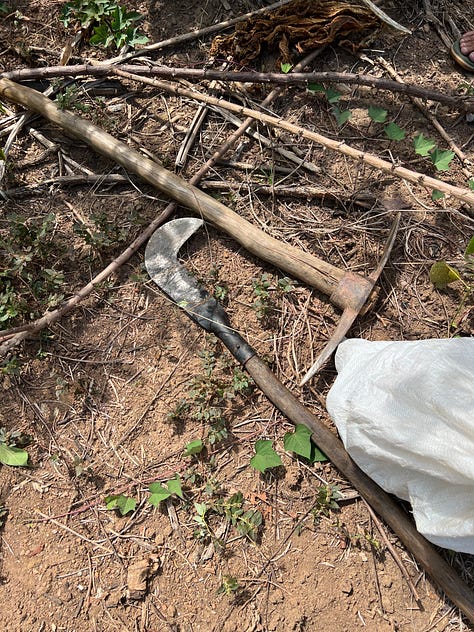

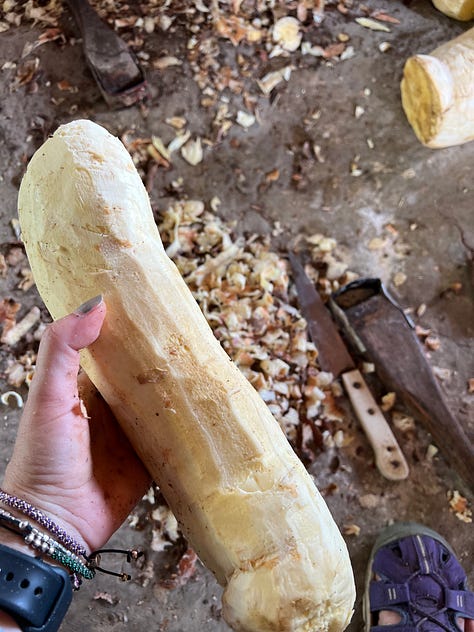
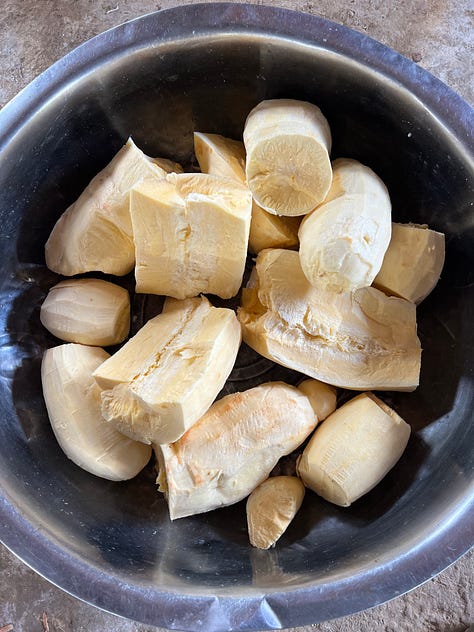
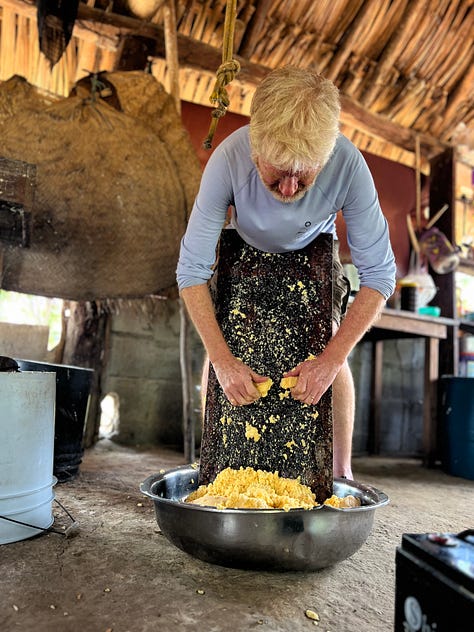
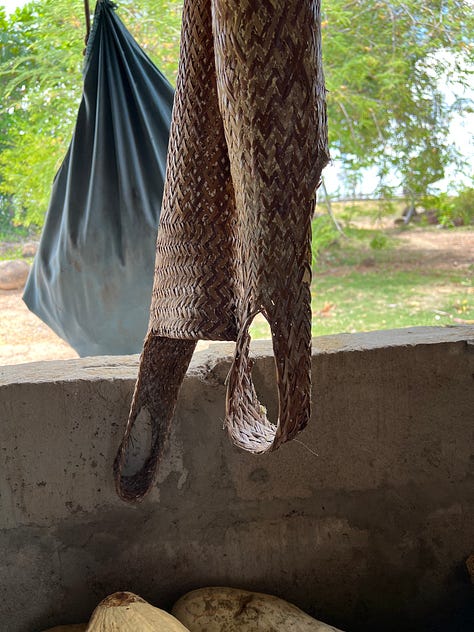
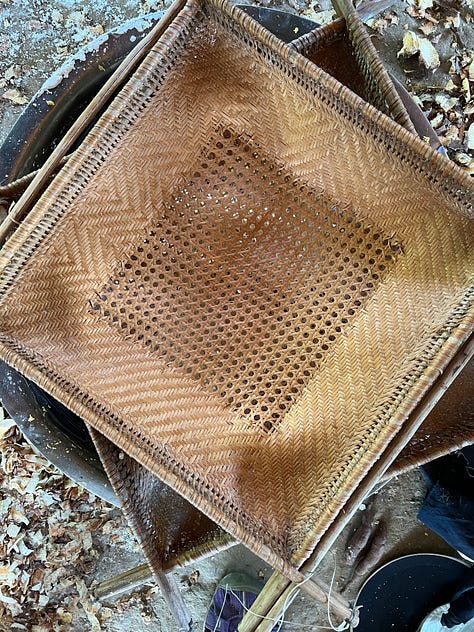
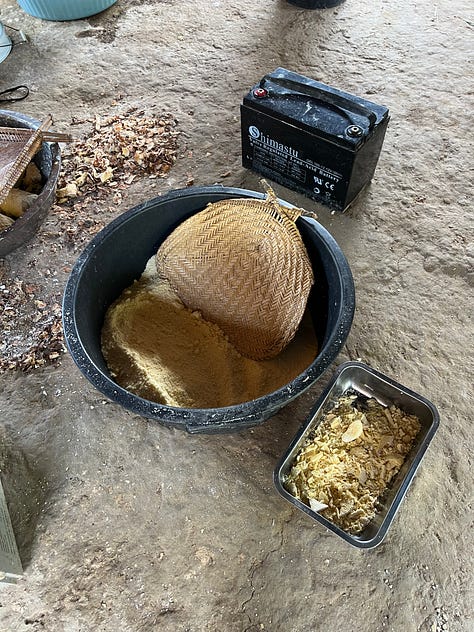
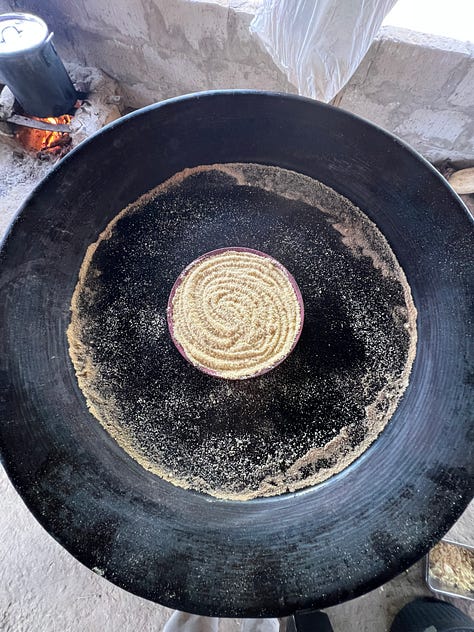
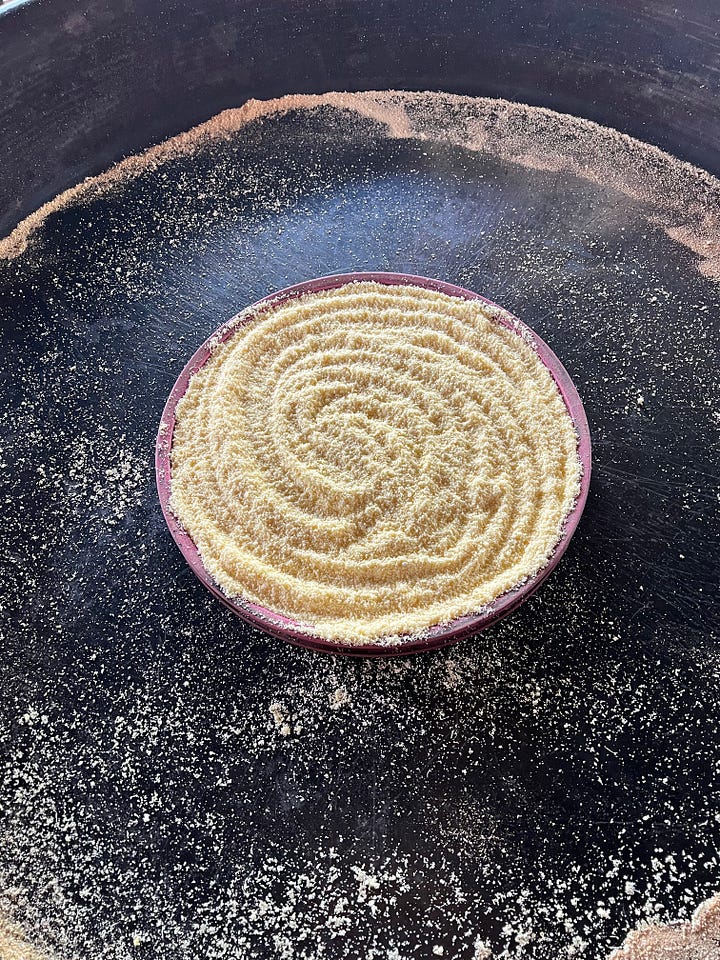
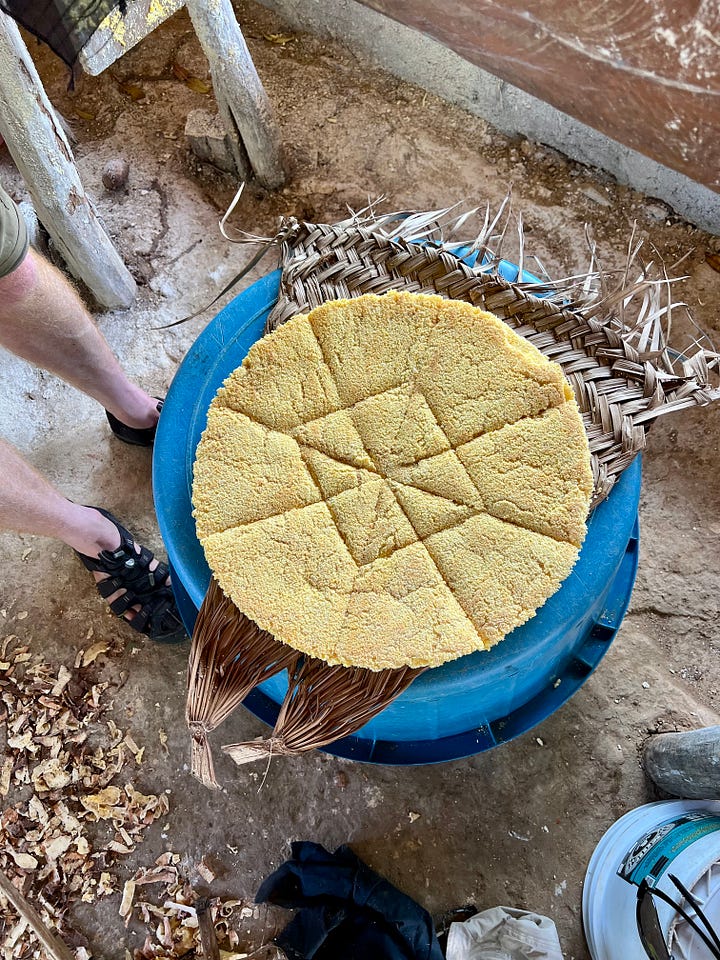
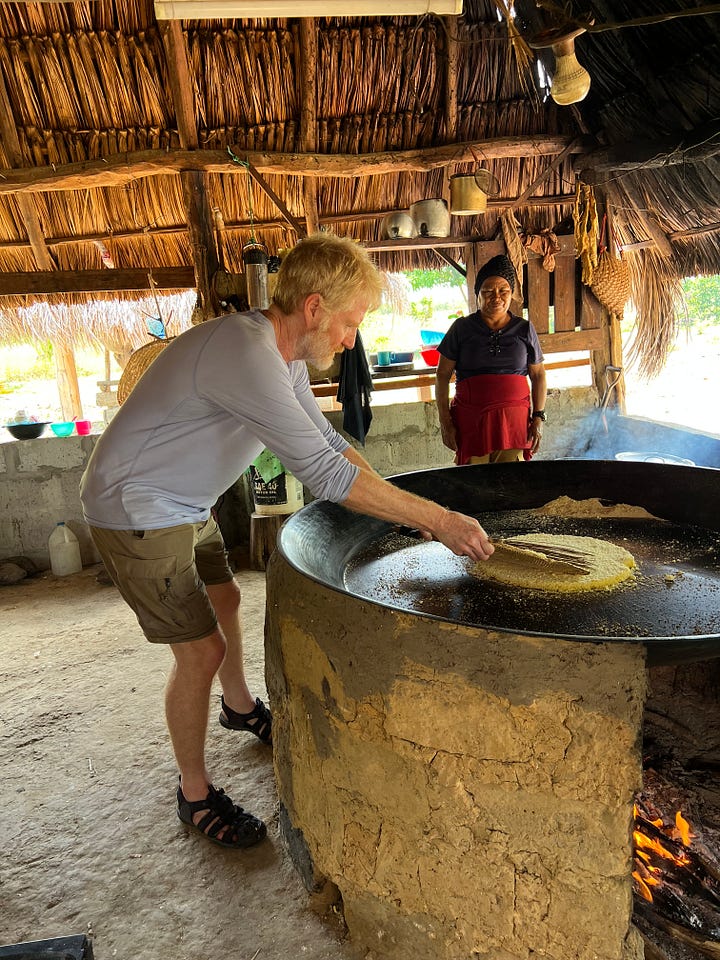
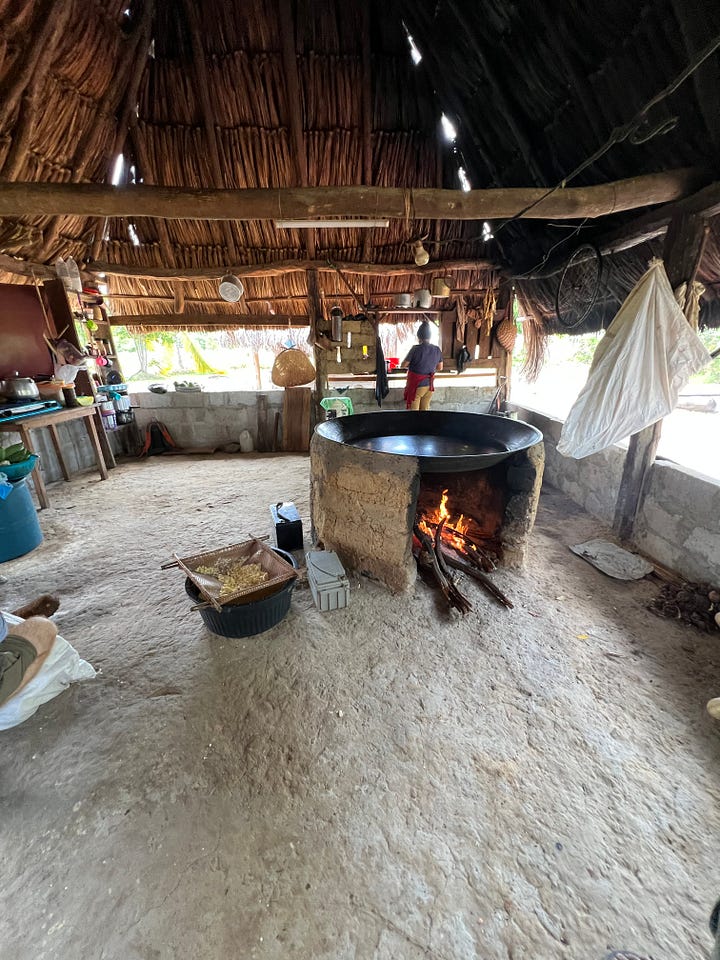
Our hosts prepare an exceptional lunch, complete with a variety of cassava-based drinks and our own freshly prepared cassava bread
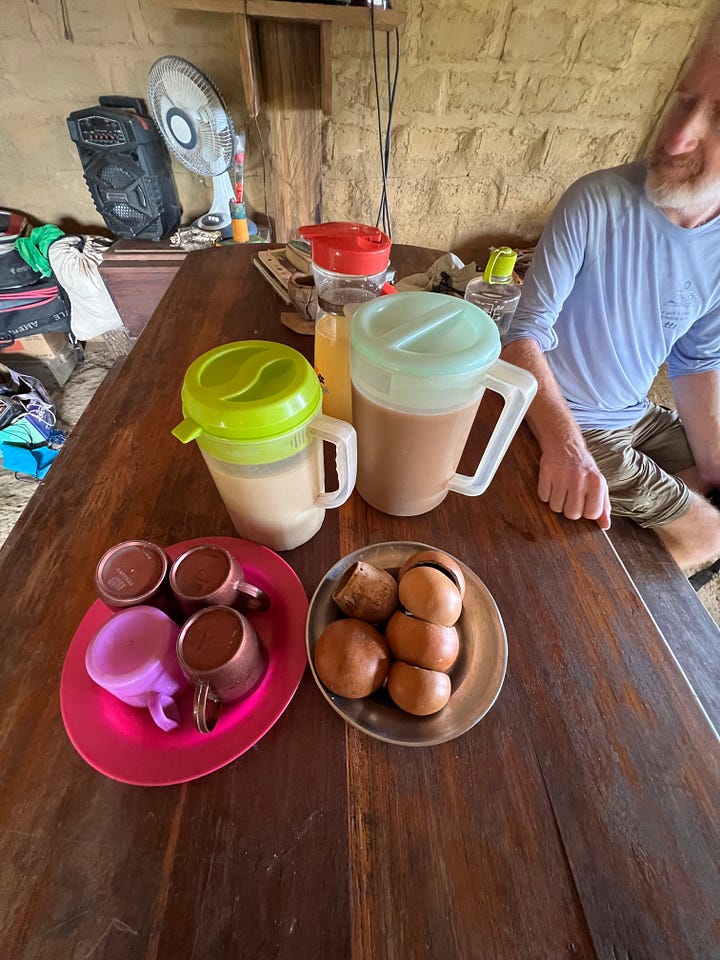
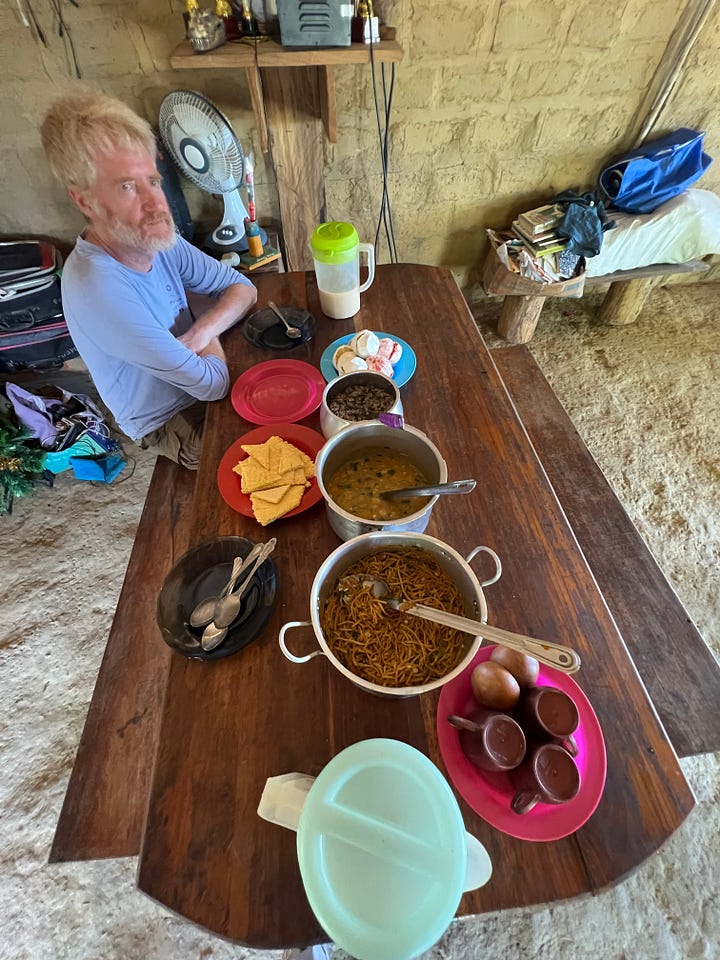
And Asaf, the third founding member of SRCS, shares his basket weaving skills (traditionally, a man's occupation)
The sunrise and set are spectacular
We will miss this place and everyone we've met, including our little bathroom frog
The food - also spectacular
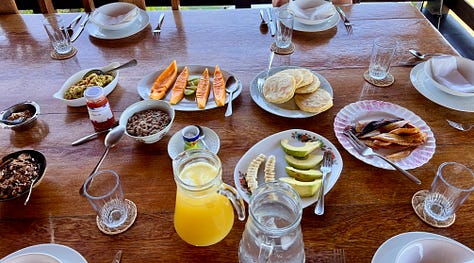
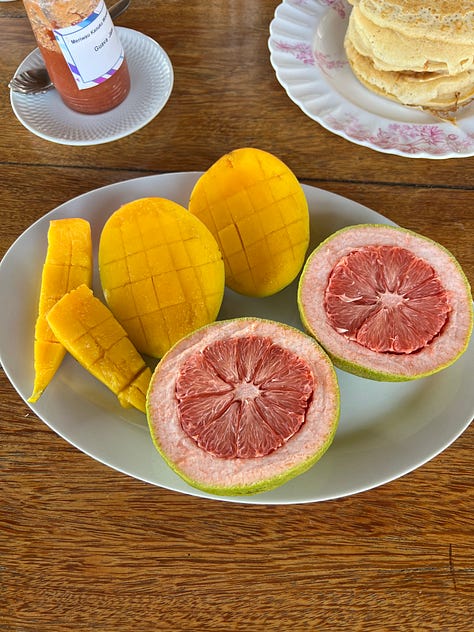

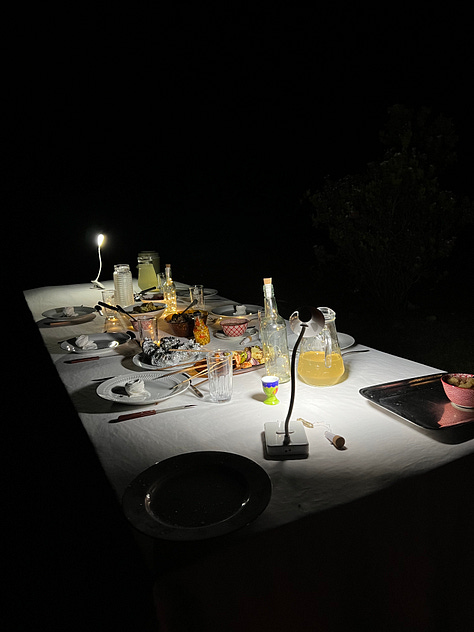
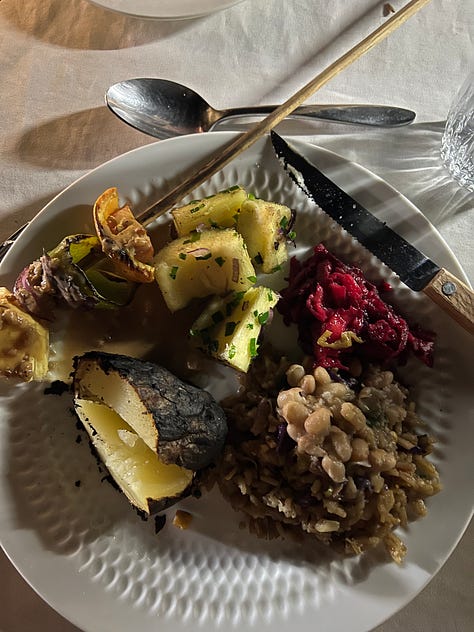
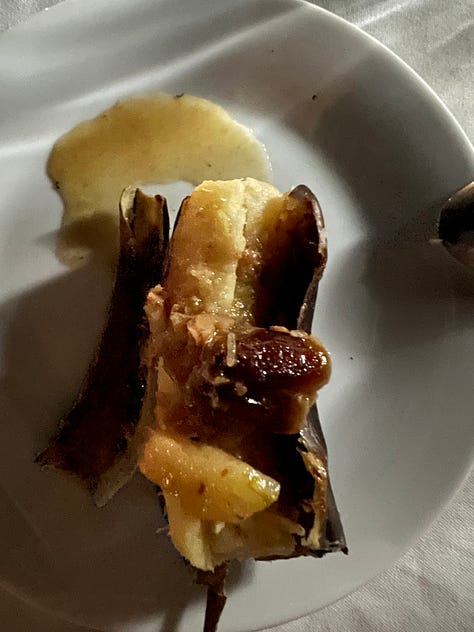
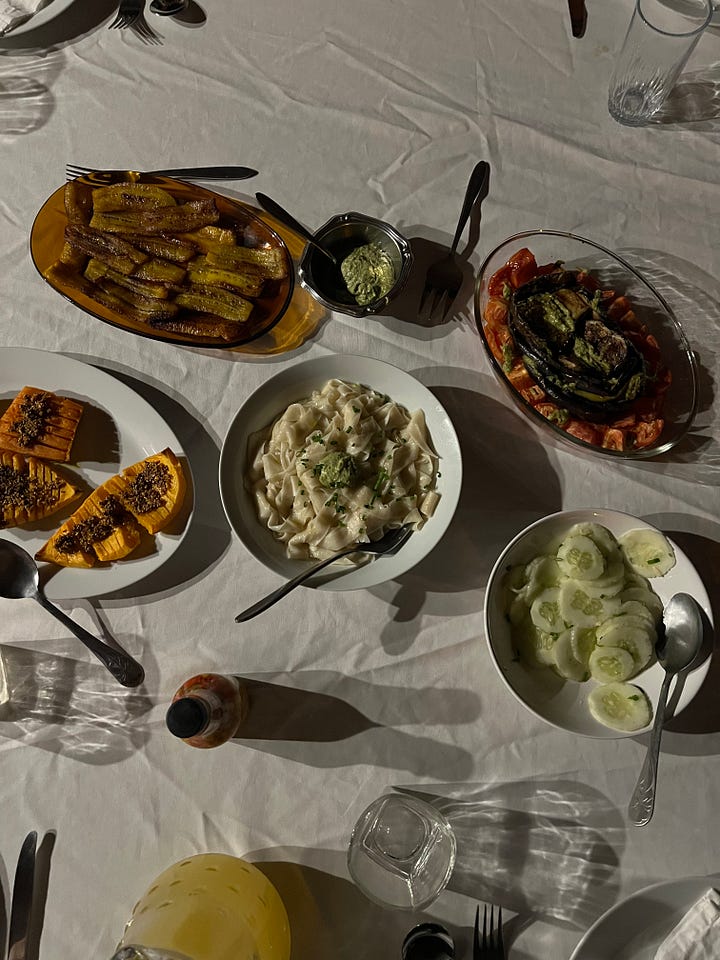
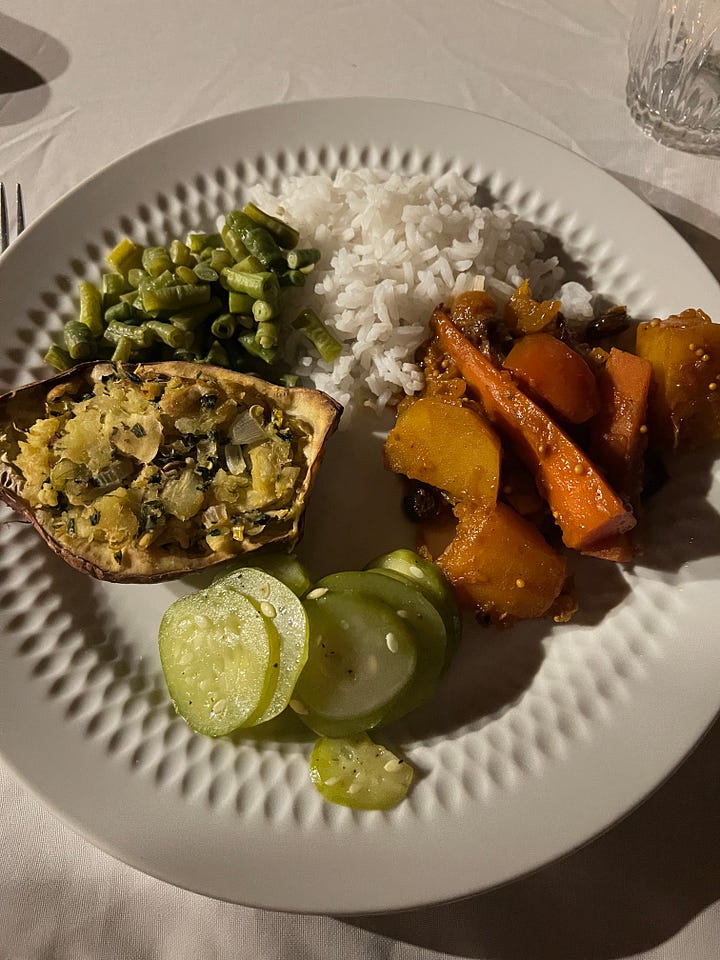
Extra: Hydra and Ulysses
Erin is from Northern Ireland and now lives in the South Rupununi and runs Wichabai ranch. She rescued Hydra, capybara, when she was little. Hydra loves having her own space near people despite having her own multi acre pond and capy companions. Did you know capys purr?
Erin also rescued Ulysses, anteater. He was a tiny baby and is now (October) about 10 months old. She had to feed him hourly around the clock and he views her as his mum. Ant eater mums carry their babies on their backs. So once a day, Ulysses still loves a cuddle. During the day, he roams around, sometimes climbing the stairs and into the kitchen. Then seeks out Erin for a hug
Erin now feeds Ulysses infant formula once a day. He otherwise eats ants and termites. He’s not yet fully grown but they begin to leave them moms around a year old. If he decides to leave, he will be free to do so. He is incredibly loveable even with the giant claws. His coat is bristly in places and soft in others. In contrast, Hydra is all bristly and very solid

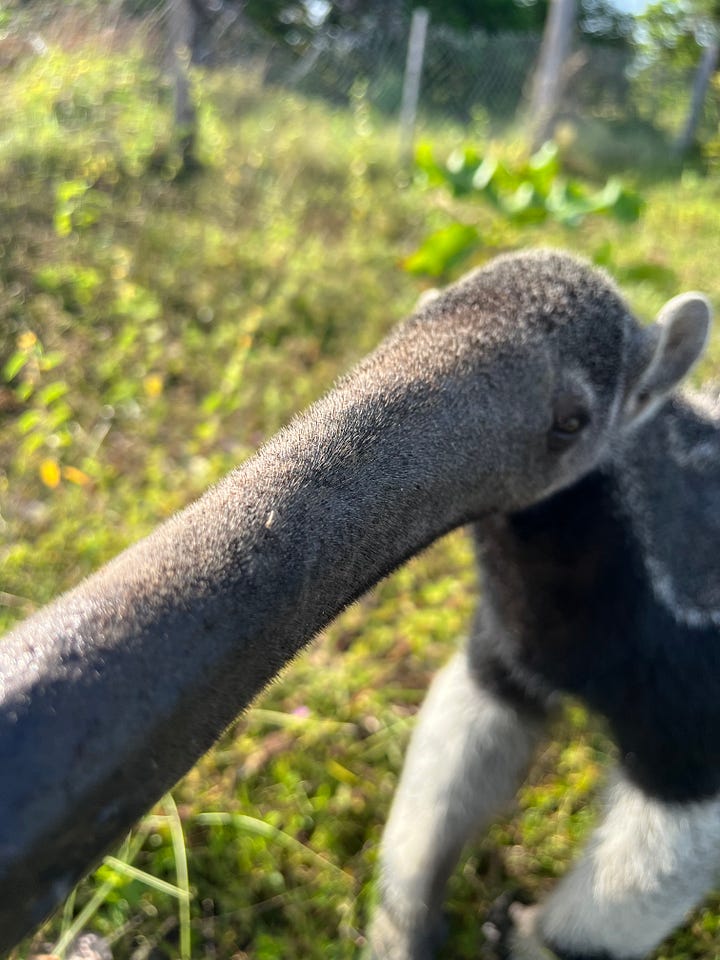
One day, unbeknownst to us, Hydra hadn’t come home. She does that from time to time. Roger and I were soaking in the Wichabai lake. And suddenly I hear rustling and feet running towards the lake. It’s Hydra. She jumps in the water - capys love water - and beelines towards me in the water. She’s purring and making all the happy capy sounds. She had heard us from her spot in the bush and come to play
She demands I hold her front paws so we can both float/soak. She then sees Roger who’s slightly farther out in the lake. She swims over to him and demands same float assistance. This back and forth continues for a while
Roger swims farther out whilst Hydra is with me. When Roger’s turn came up, she looks over, gives the alarm squeak, swims over to the spot where he was and gives another alarm squeak. She returns to me
When Roger returns to the spot a few minutes later, Hydra joyfully swims over to bestow her graces on him. And lets him know he mustn’t swim away anymore
We continue like this for about 45 minutes. It’s just the three of us so there’s no footage or photos. But I get to walk her home and it was the greatest
When a non-human animal chooses to spend time with you is one of the greatest things life can offer
Guyana - thank you for everything!


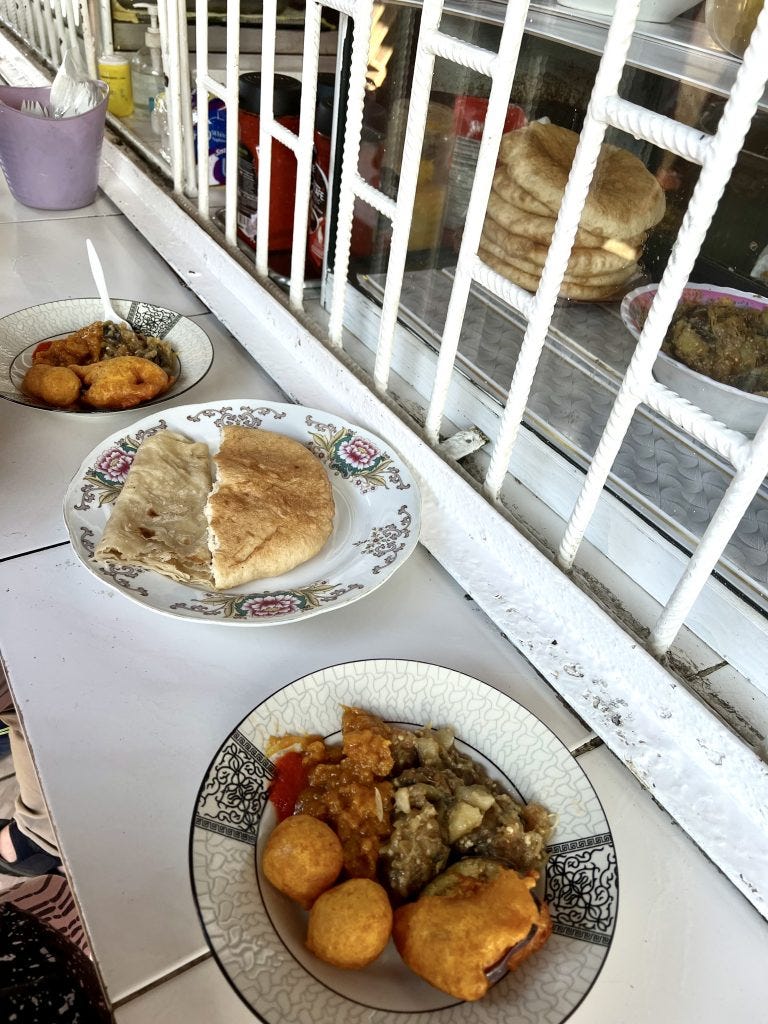
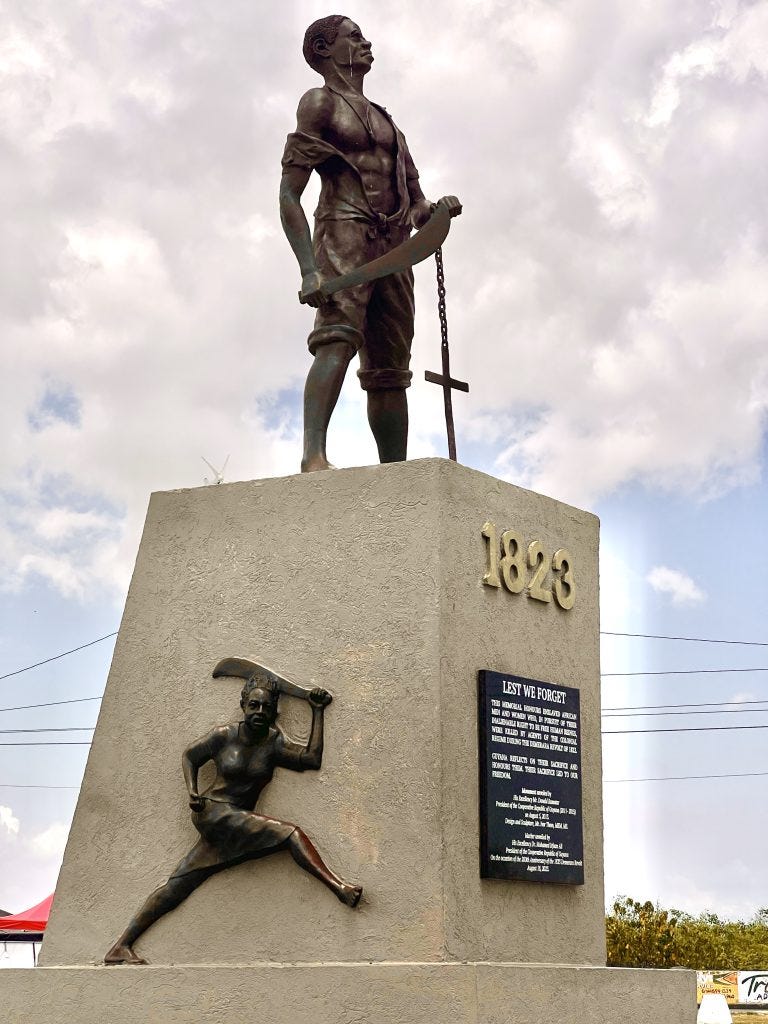
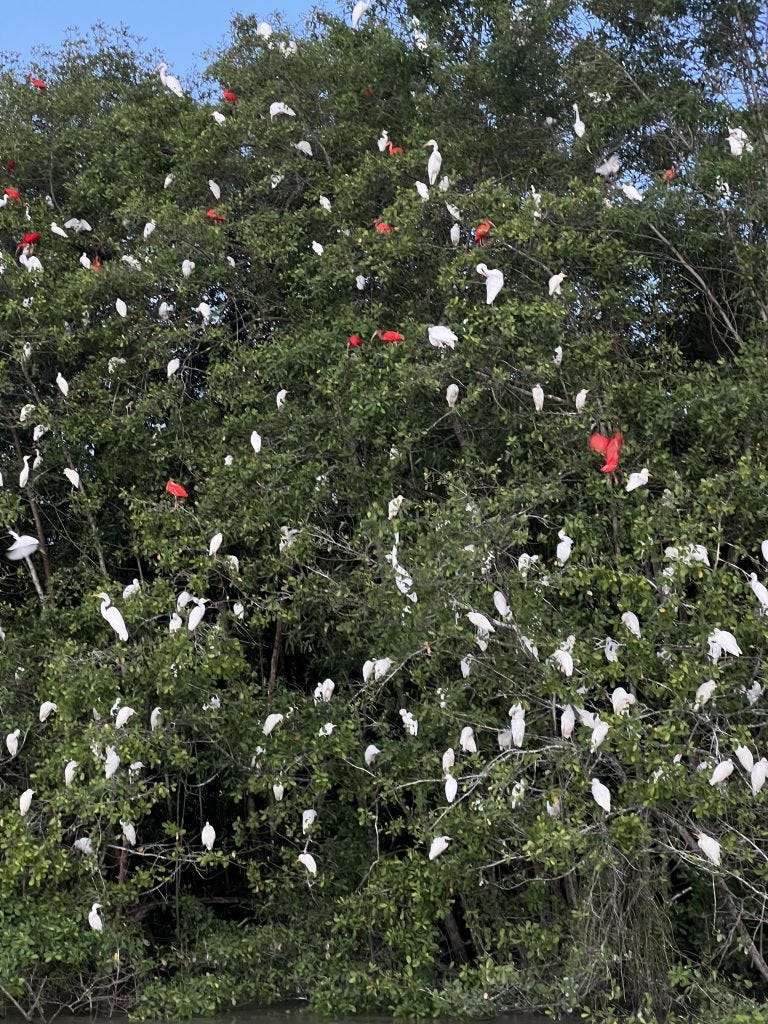
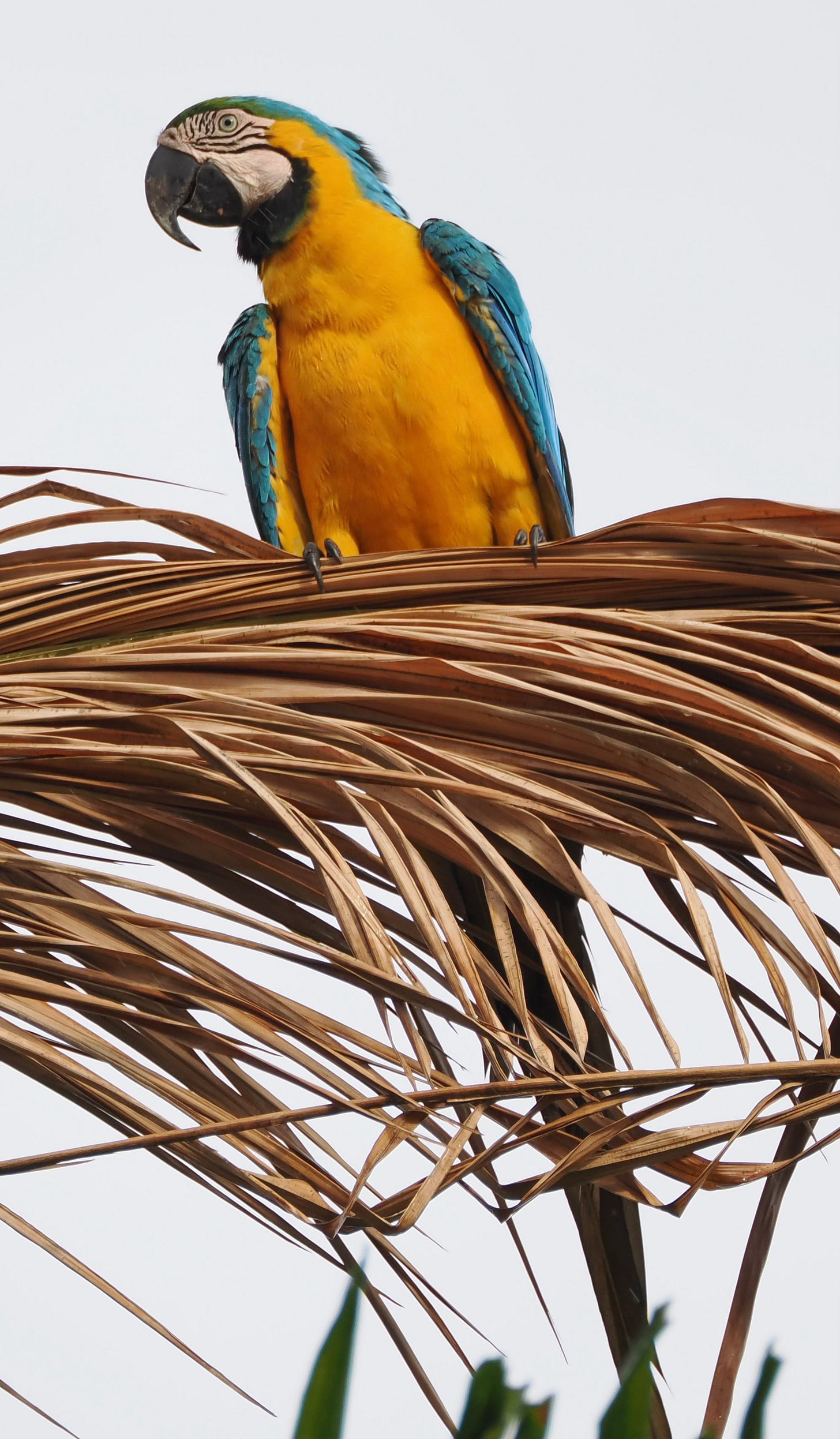
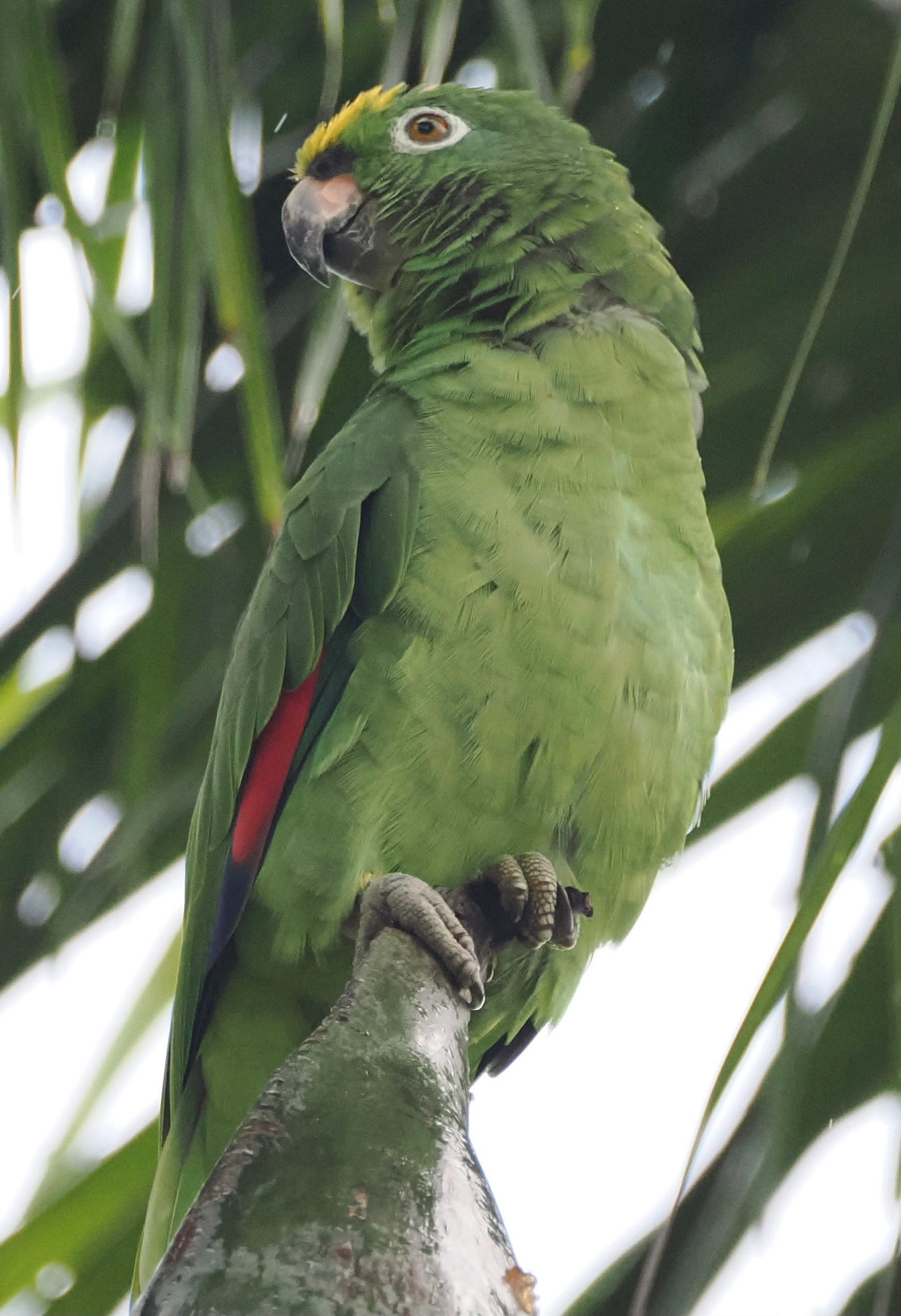

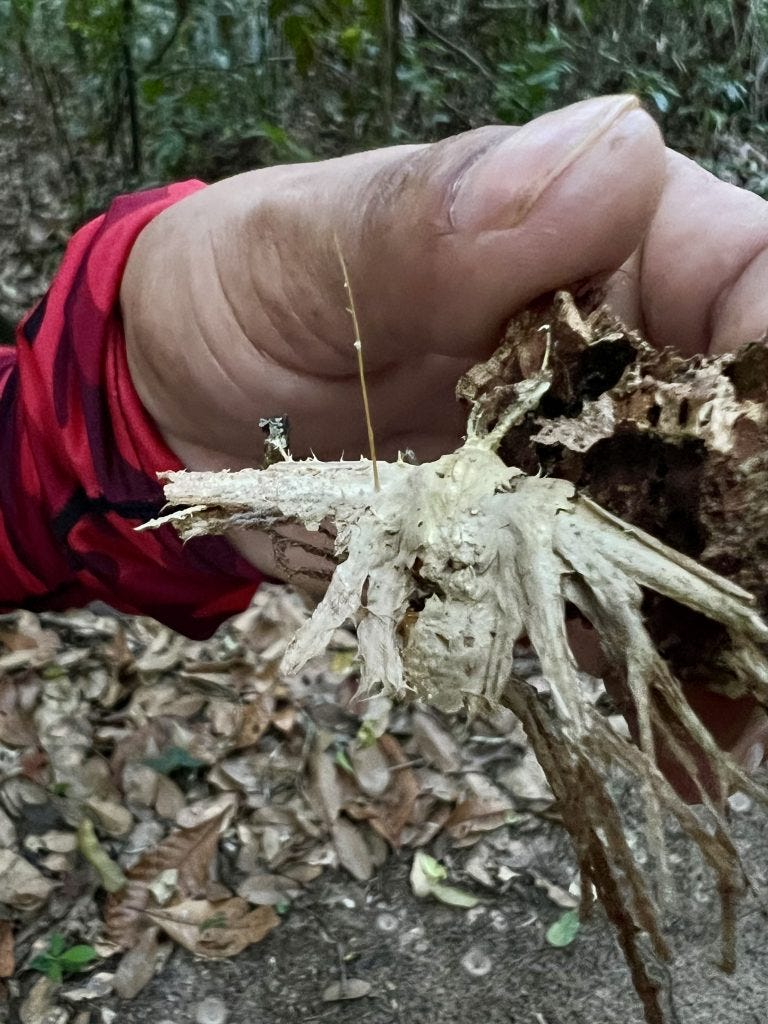
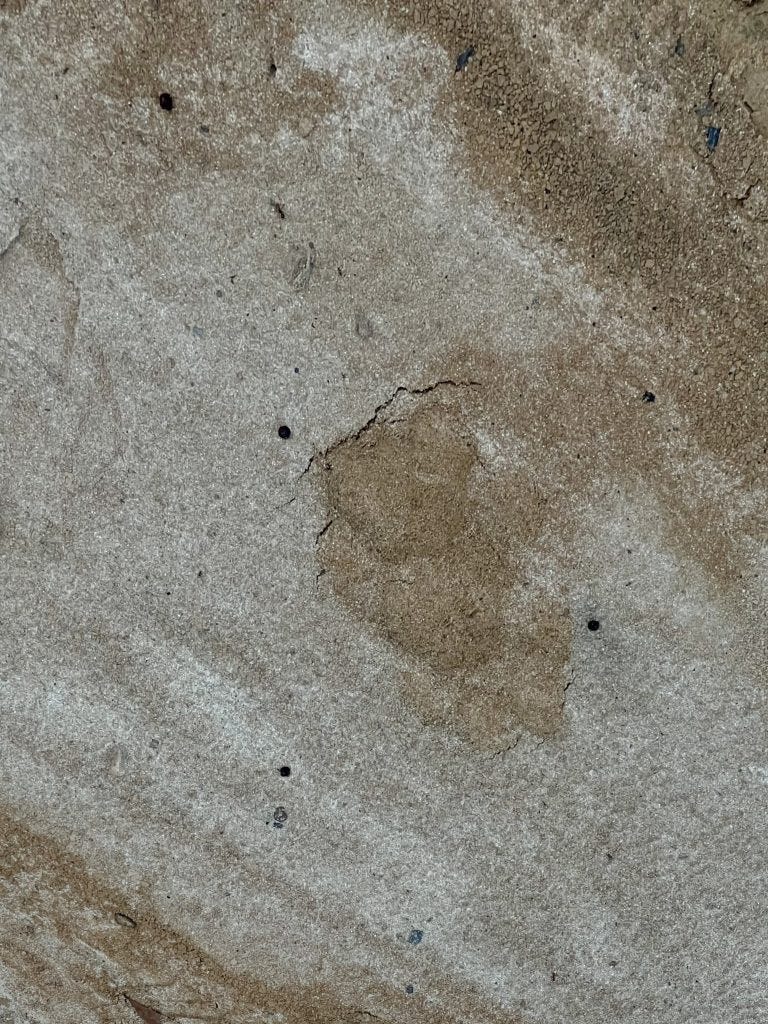
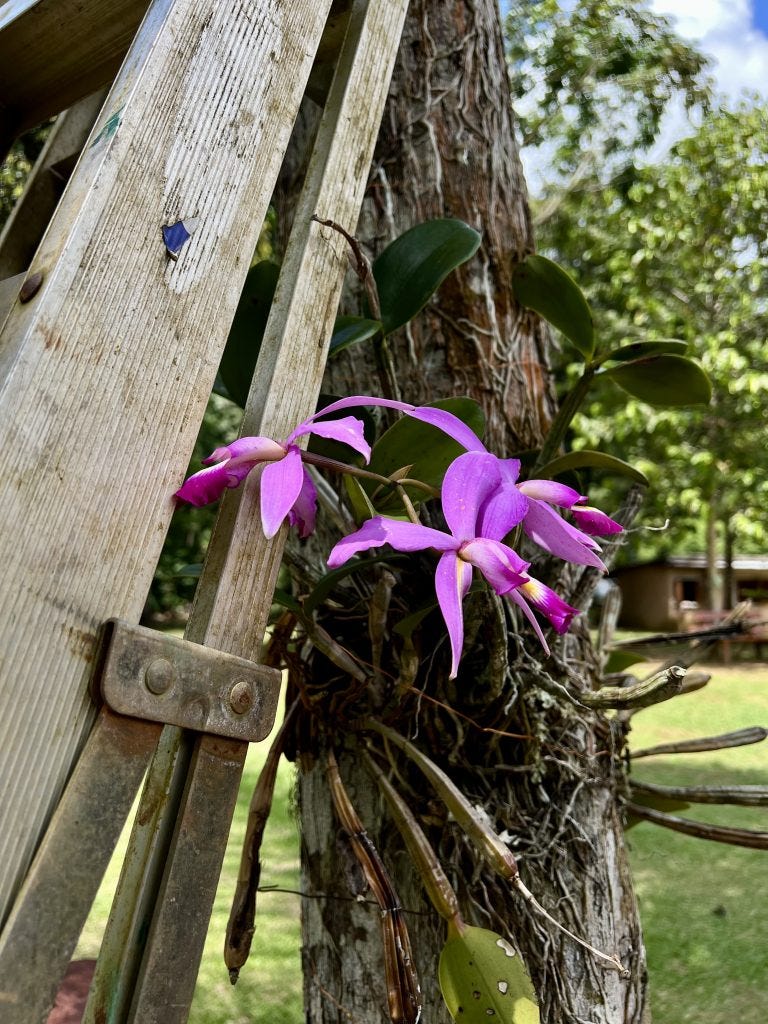
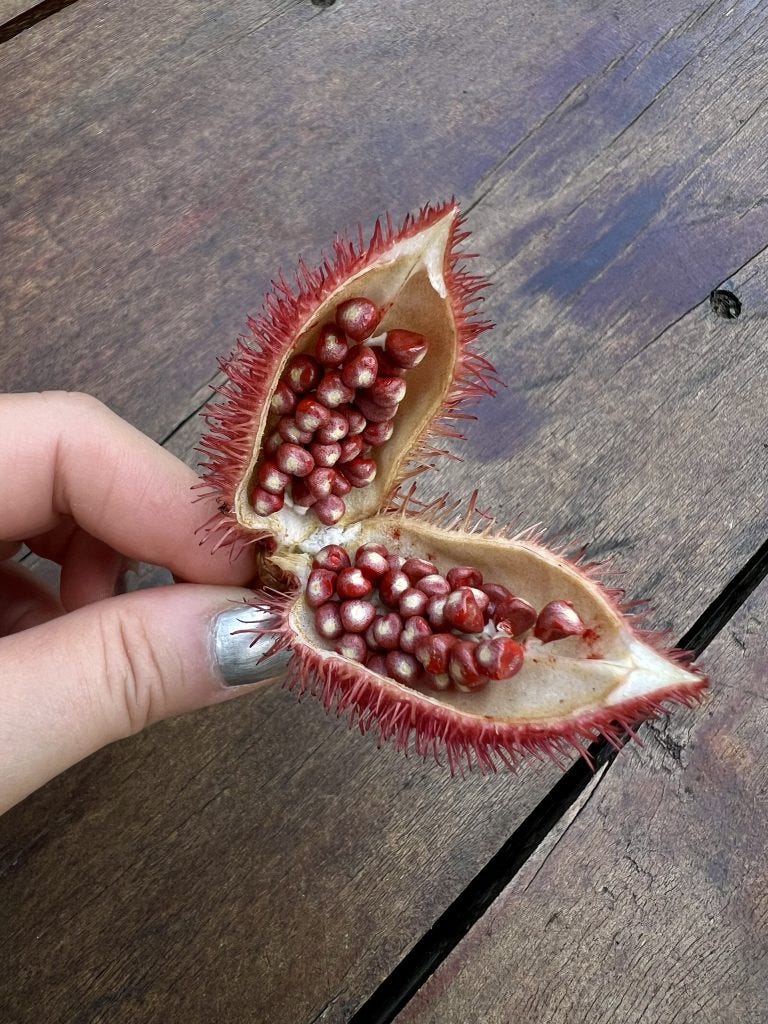
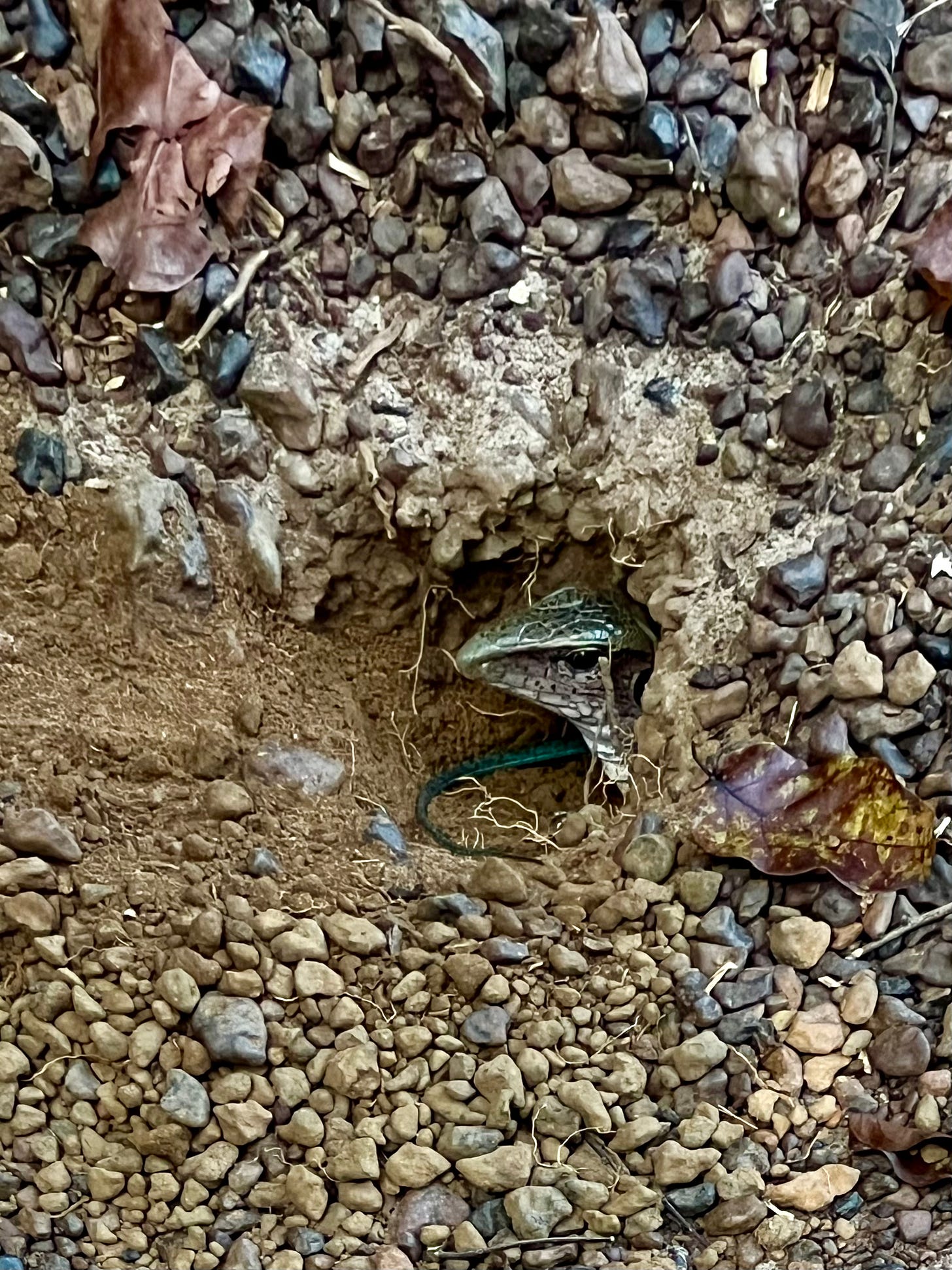
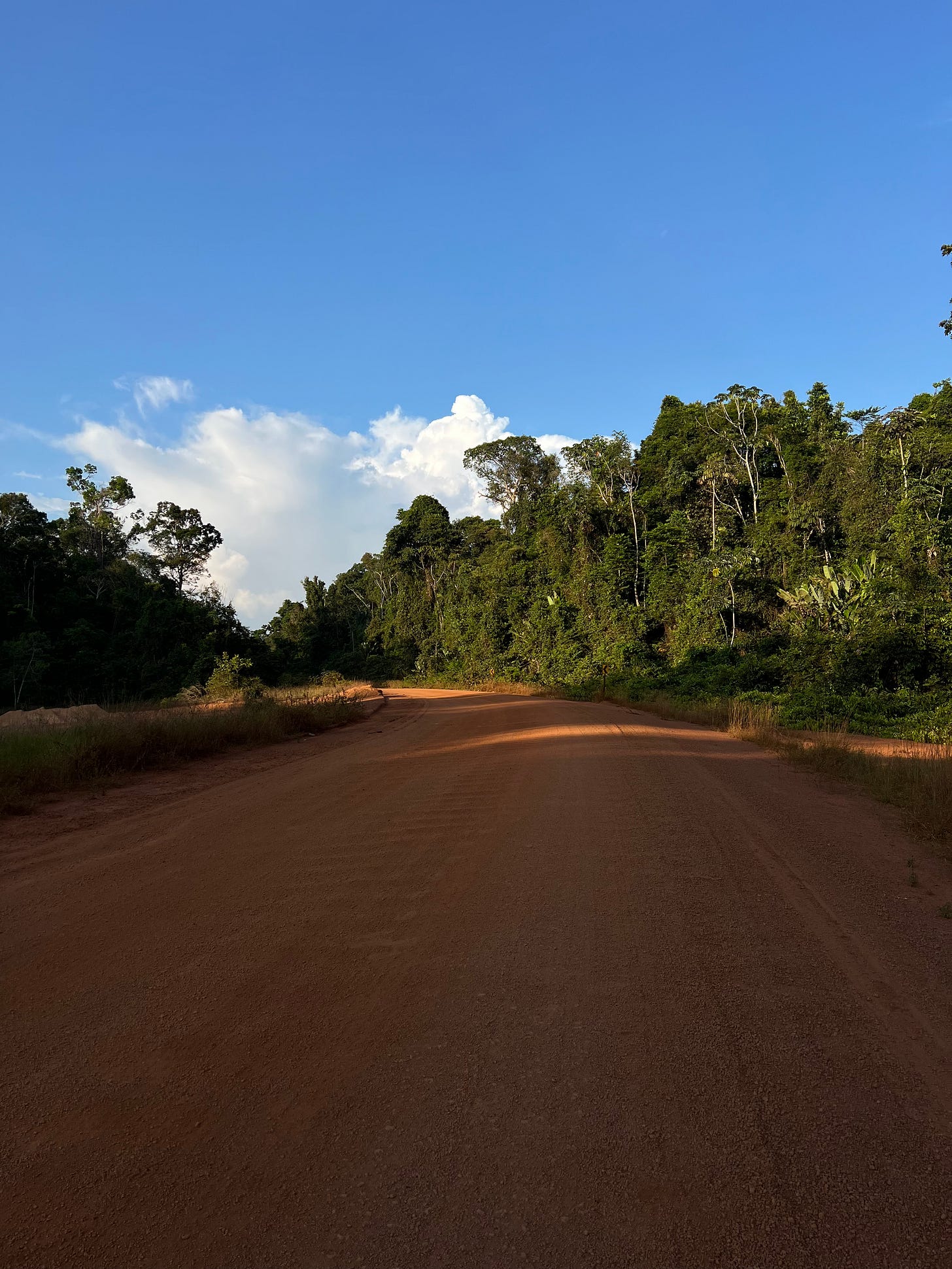

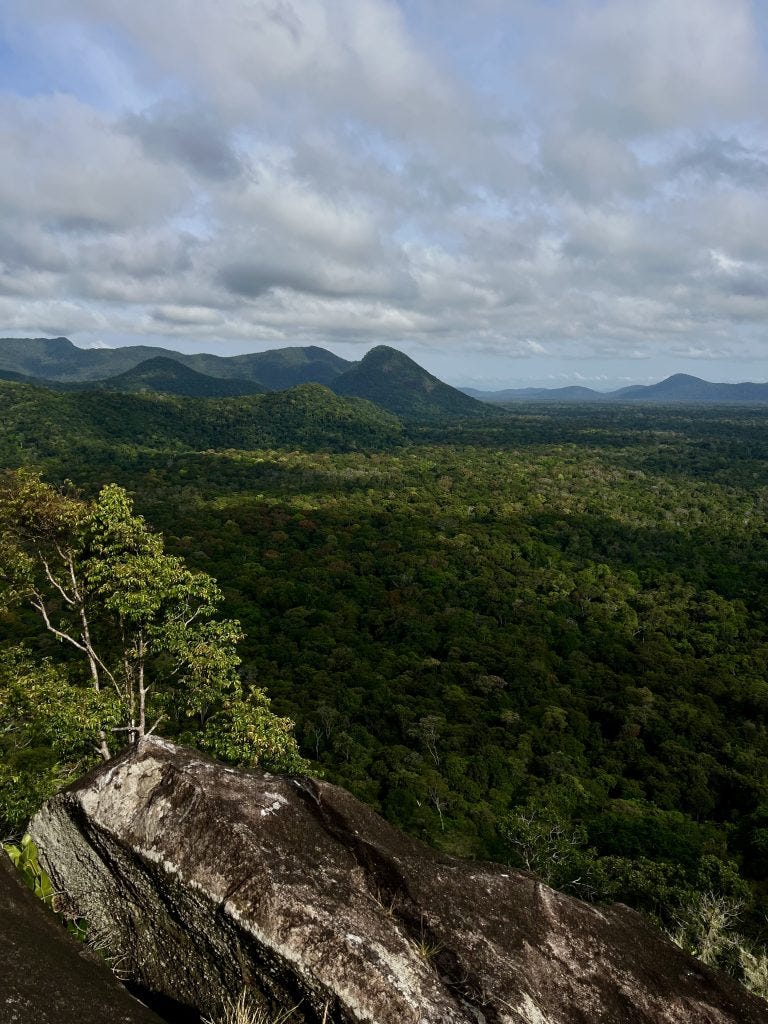
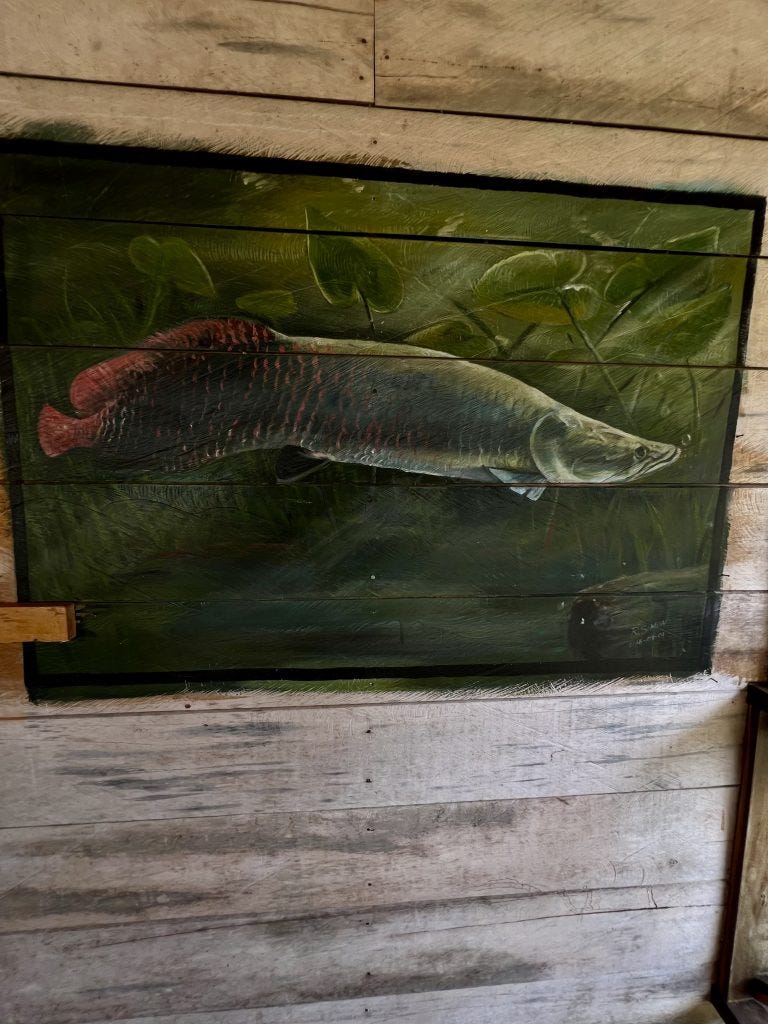
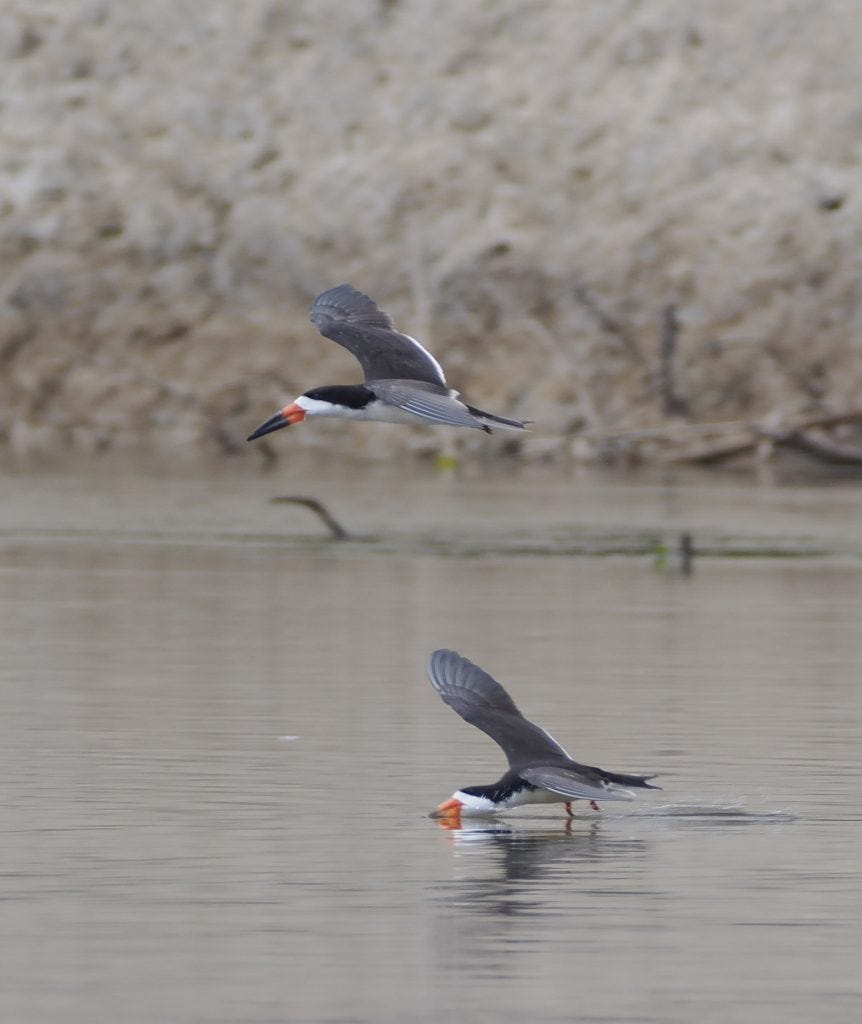

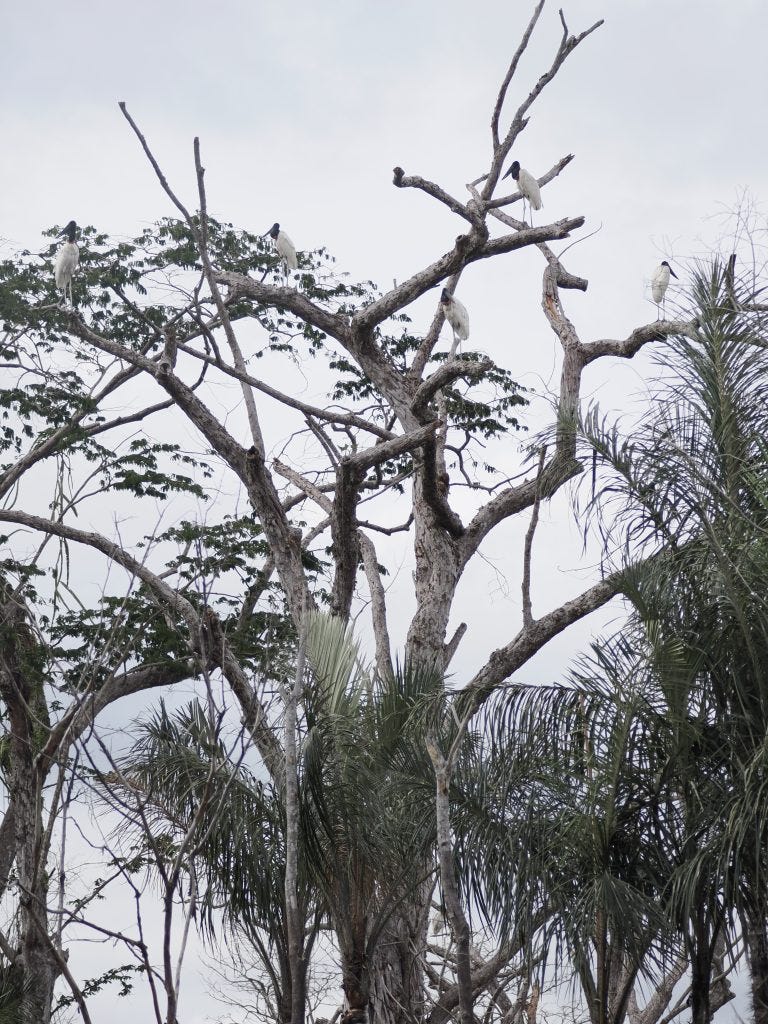
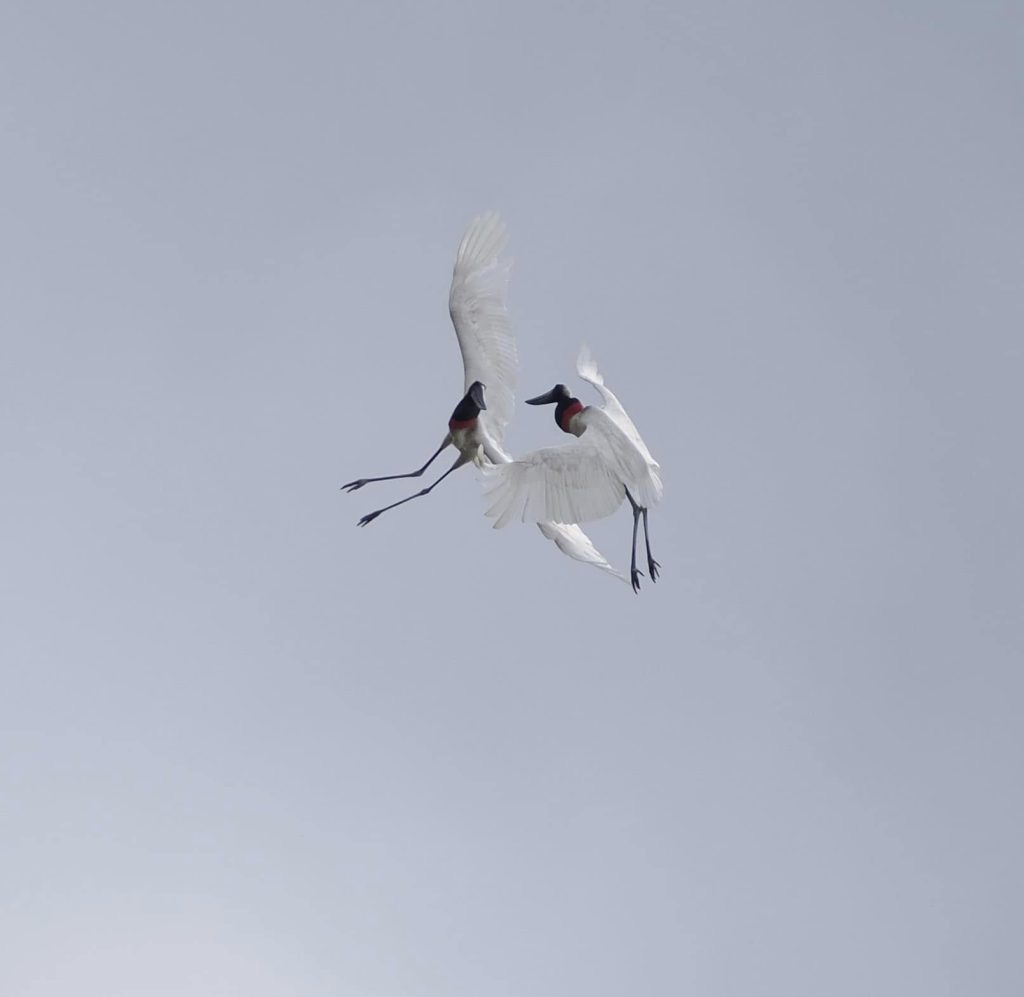
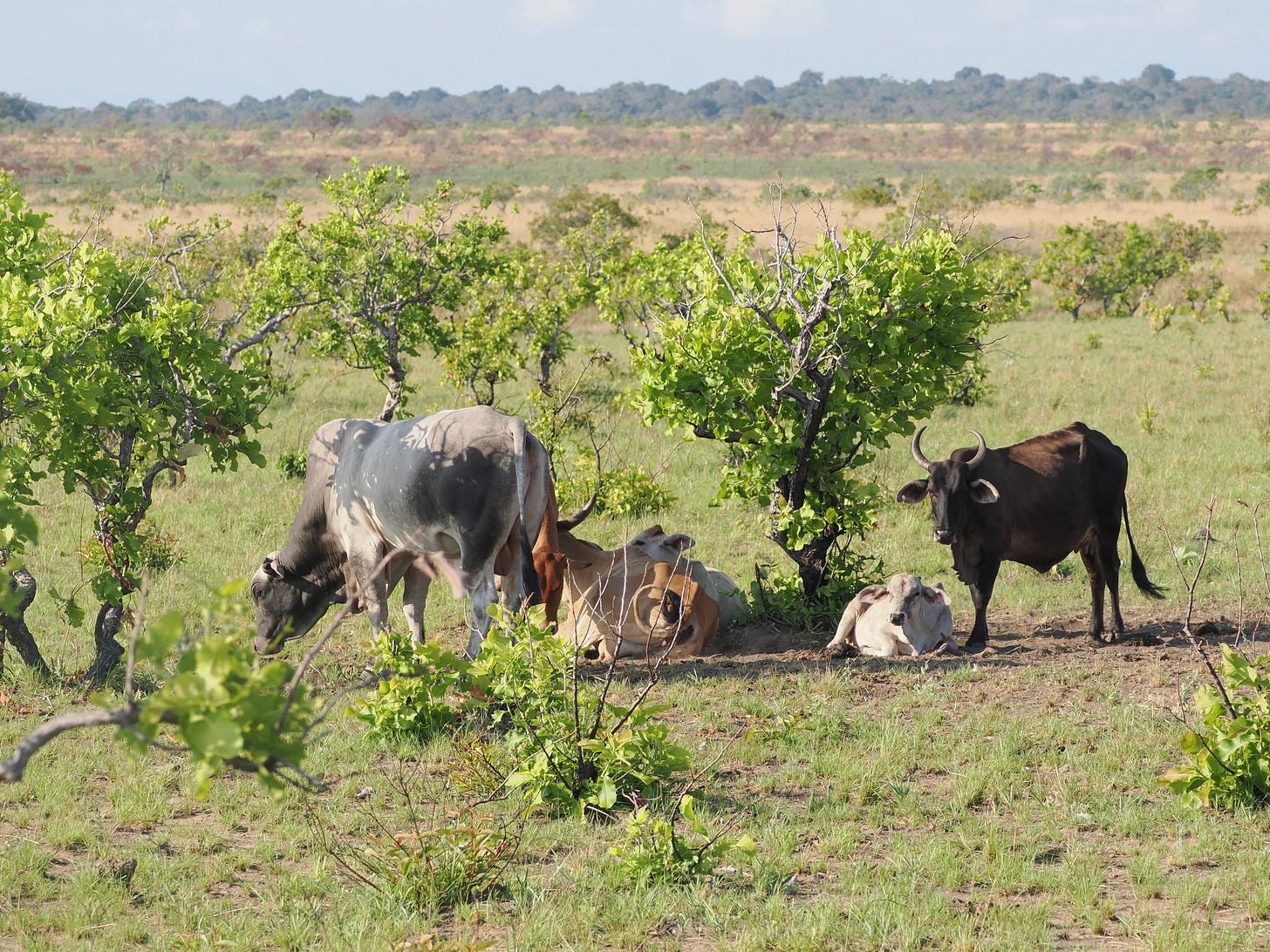
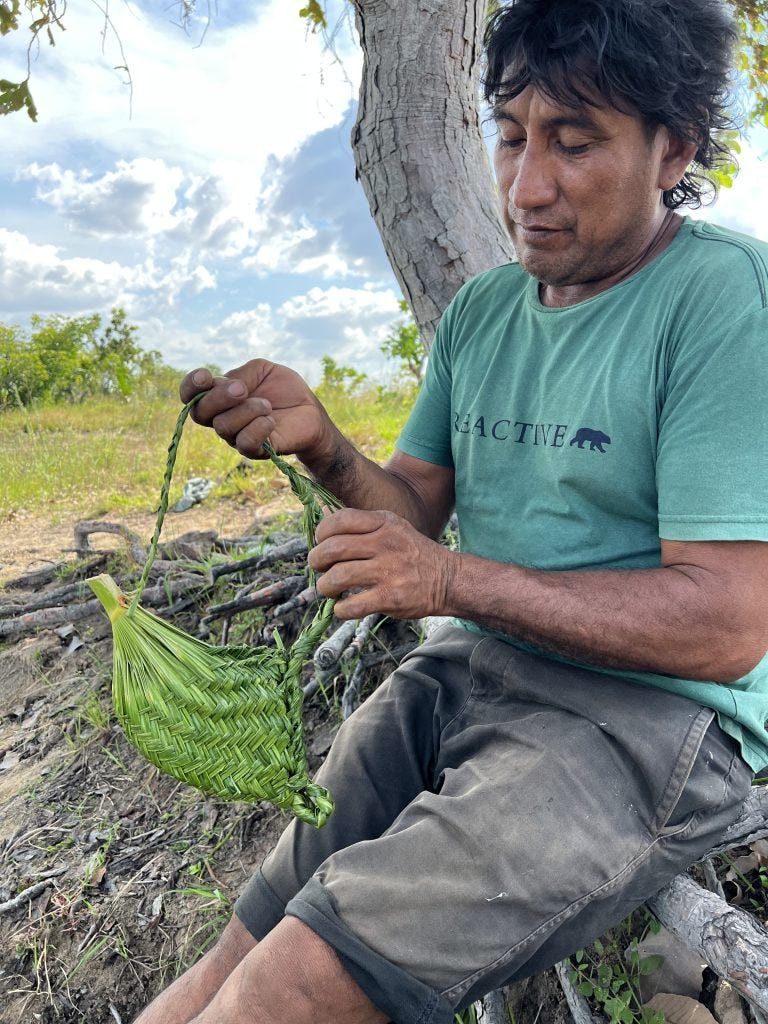

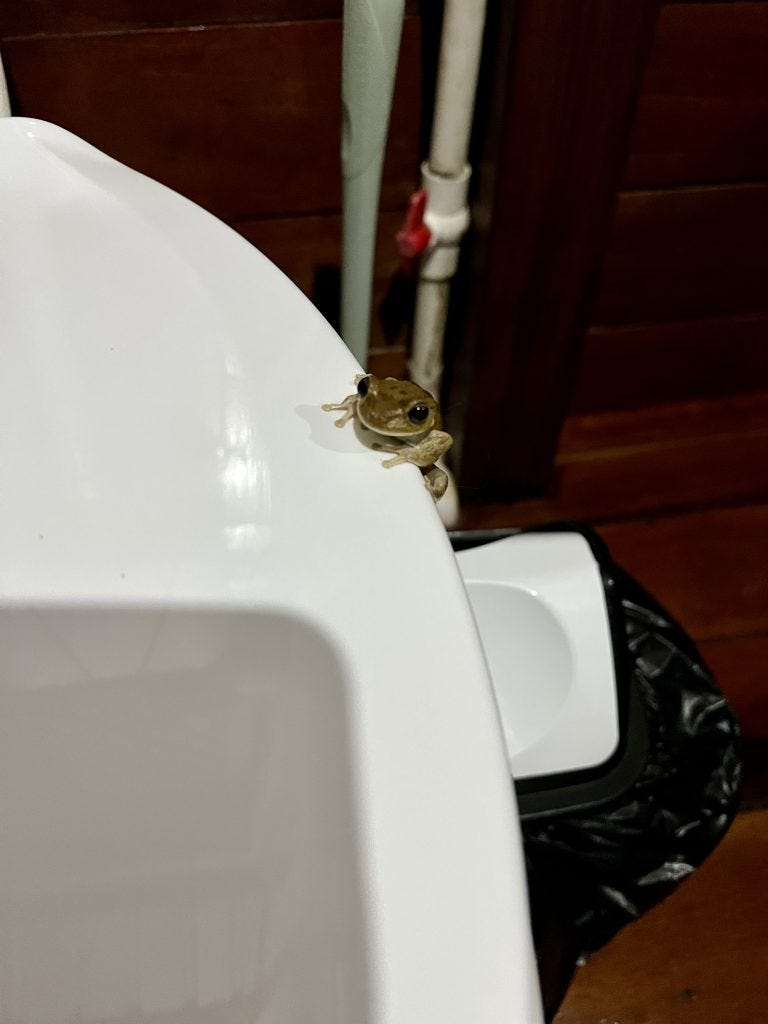
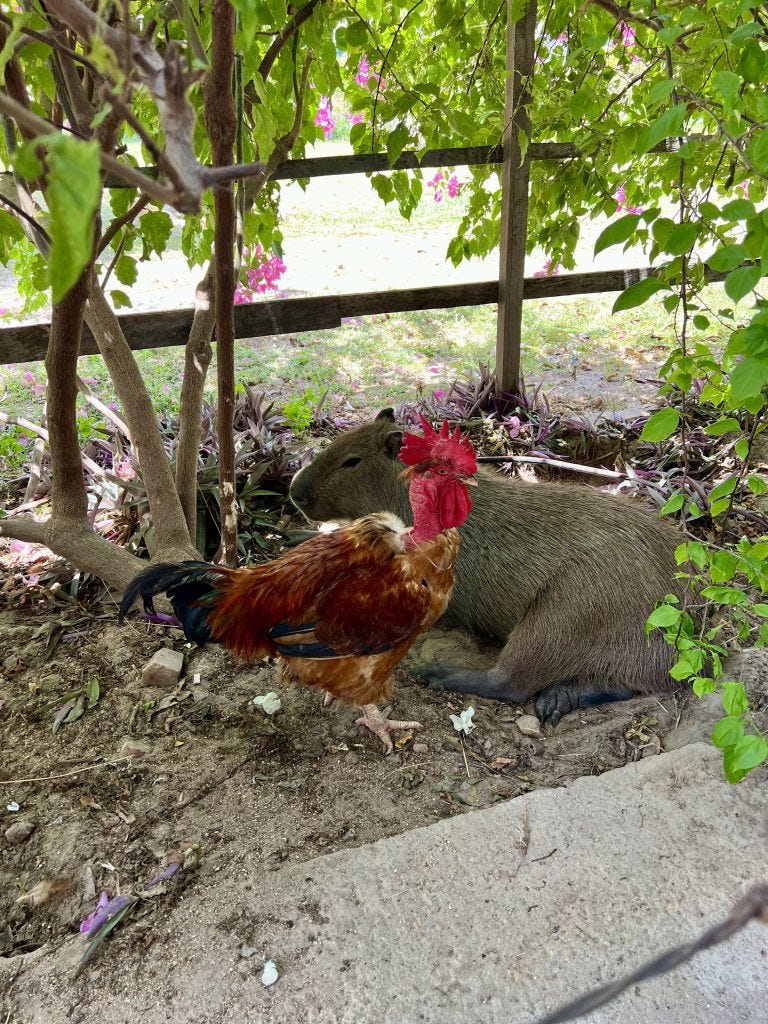
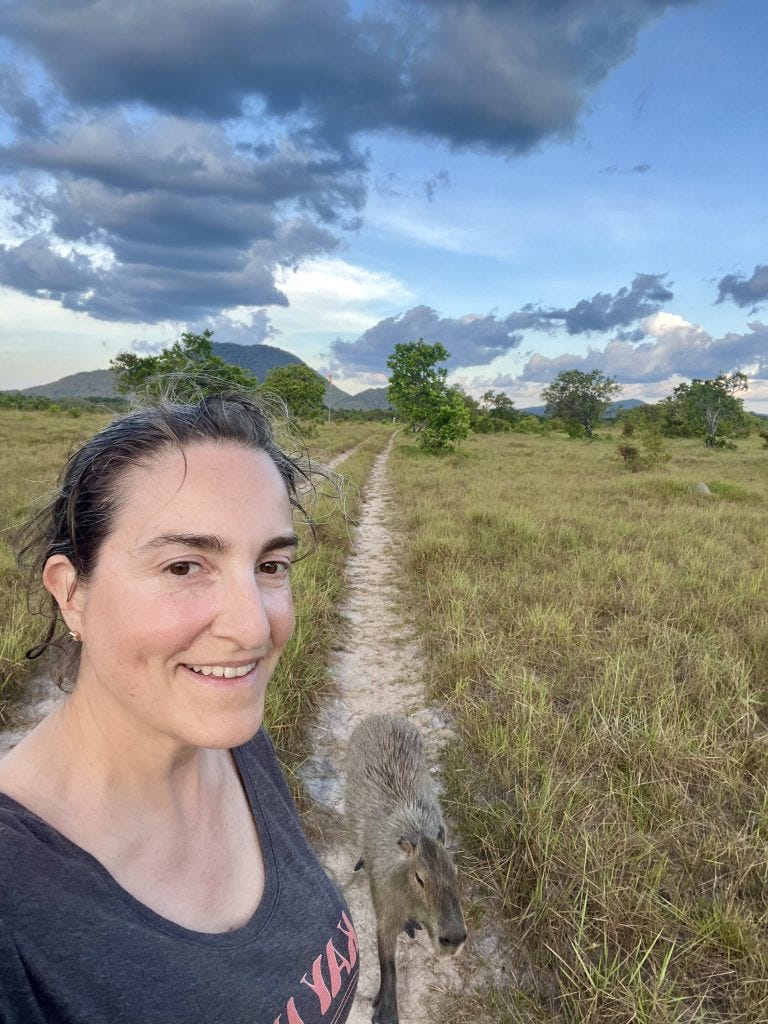
How wonderful! Thank you for sharing this Emi ❤️
So interesting - love finding vegan food in new places. And all those animals! So beautiful. That tiny lizard was adorable.